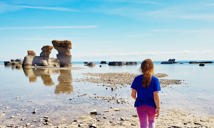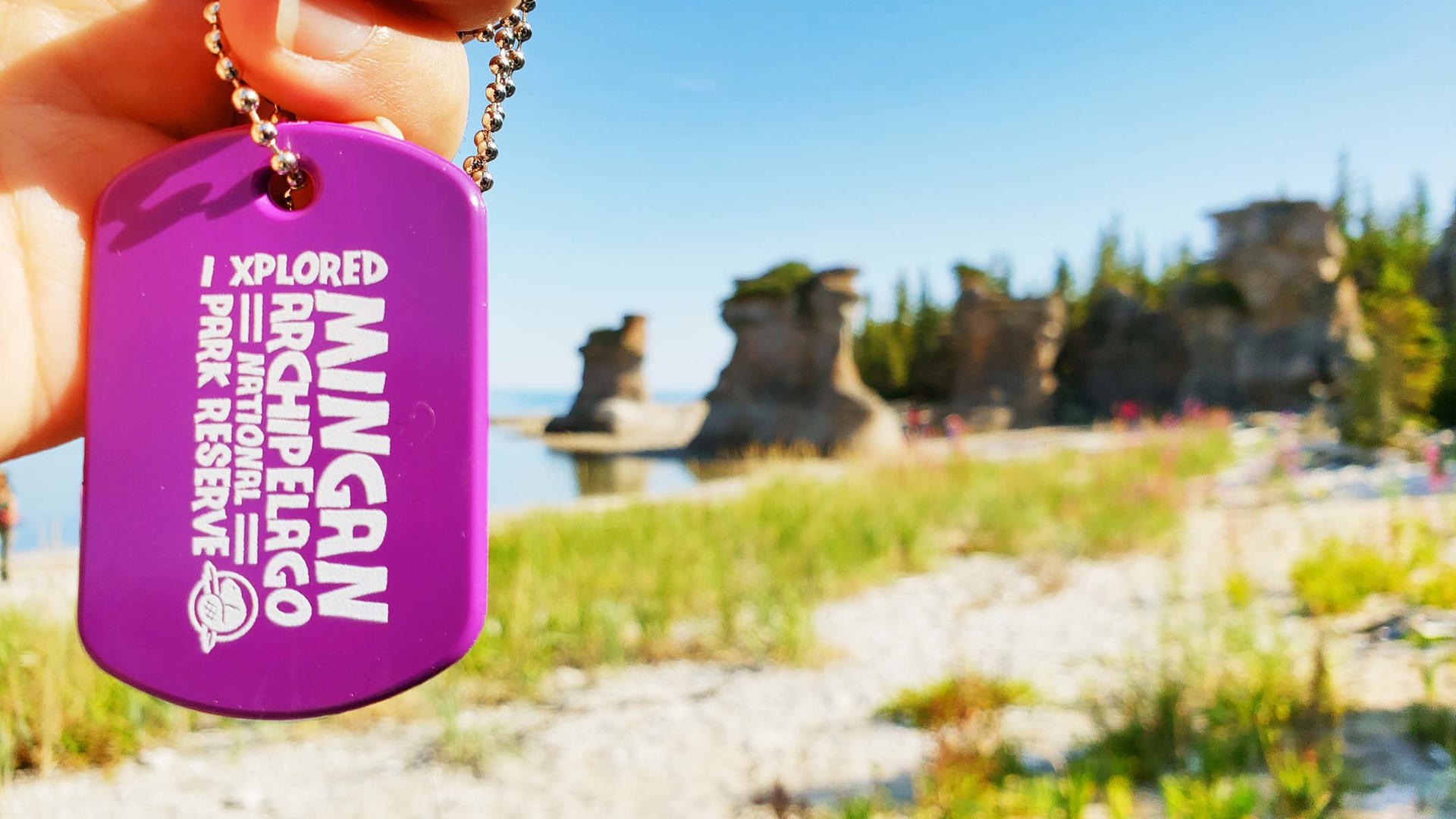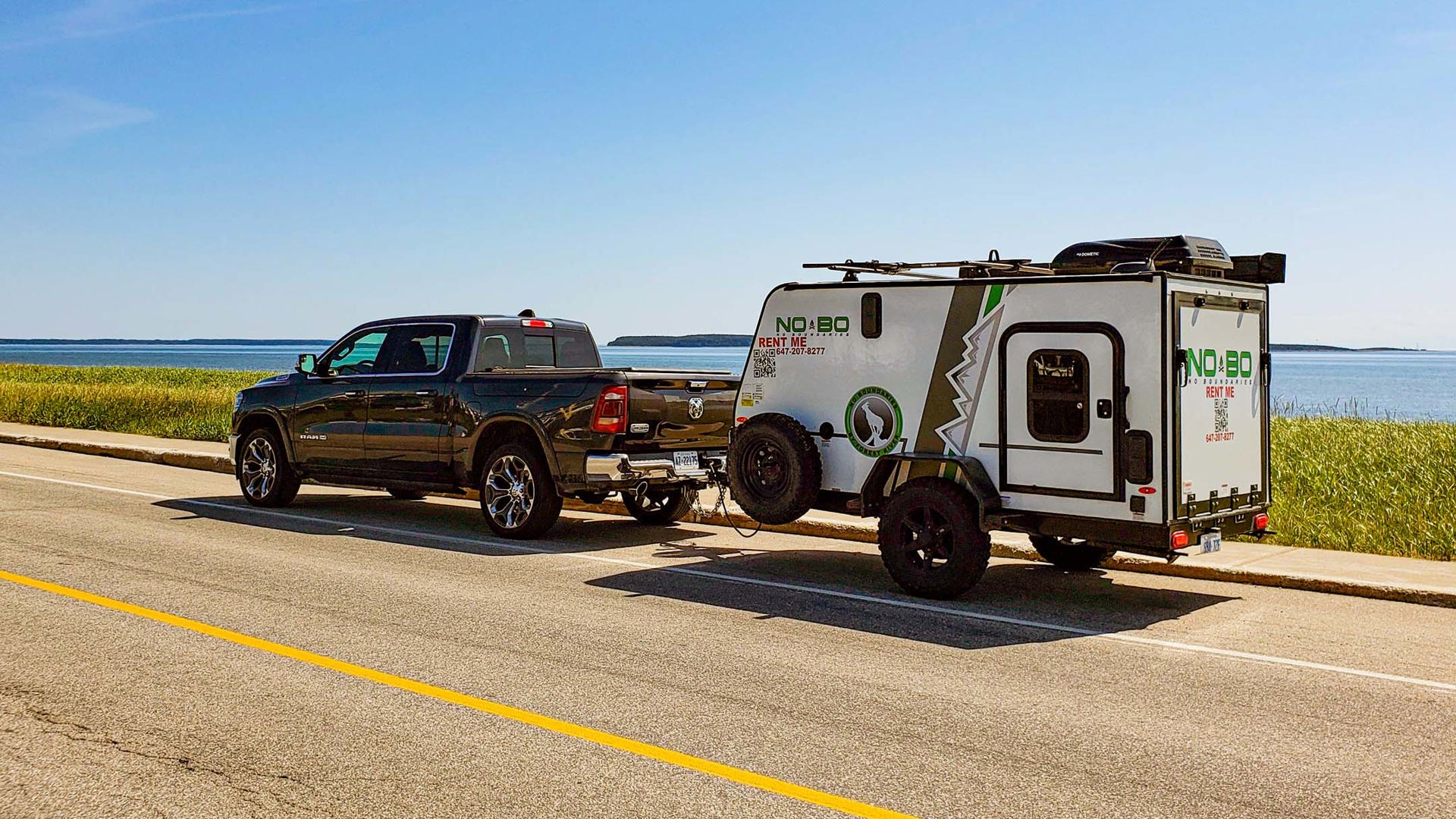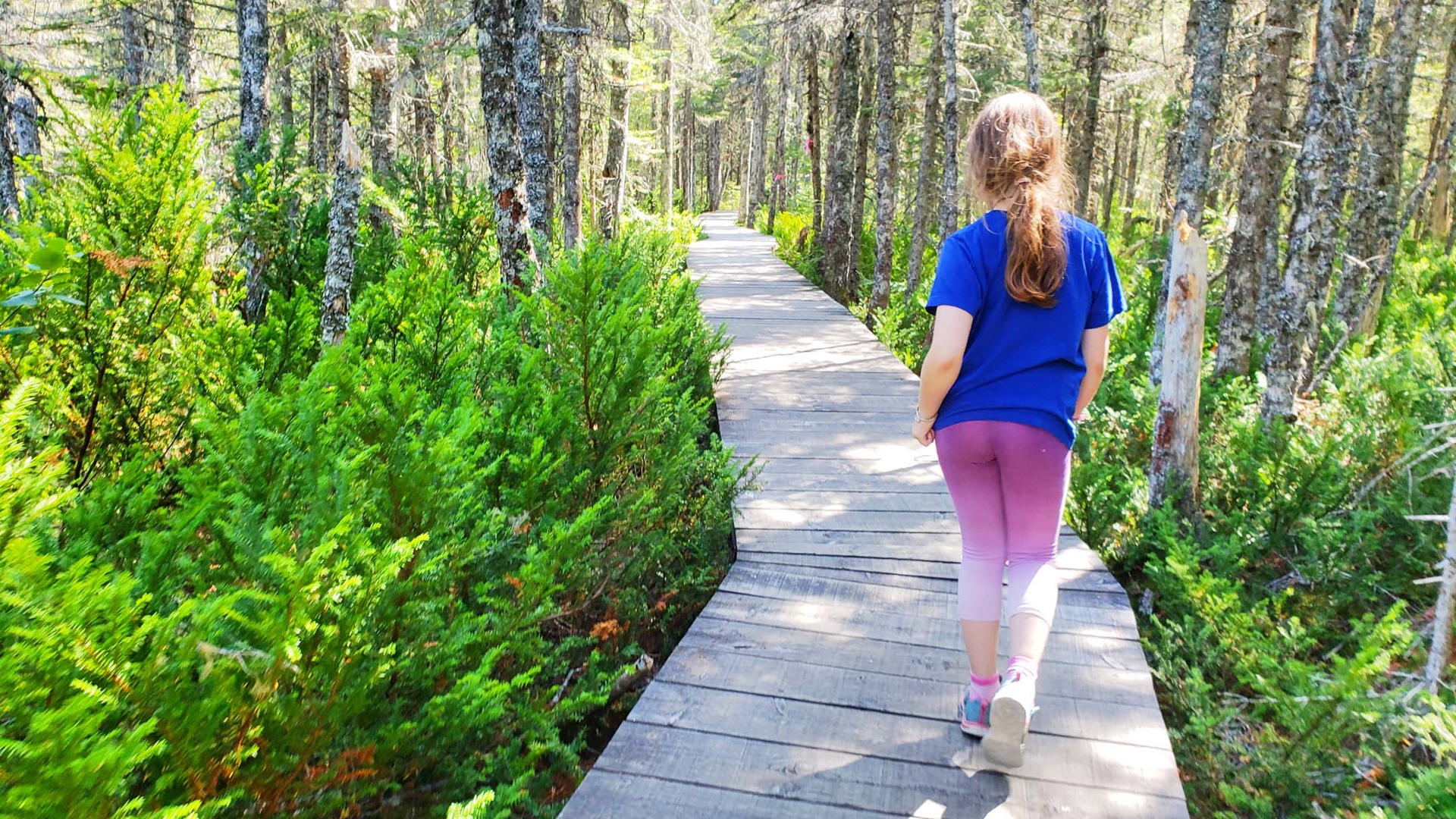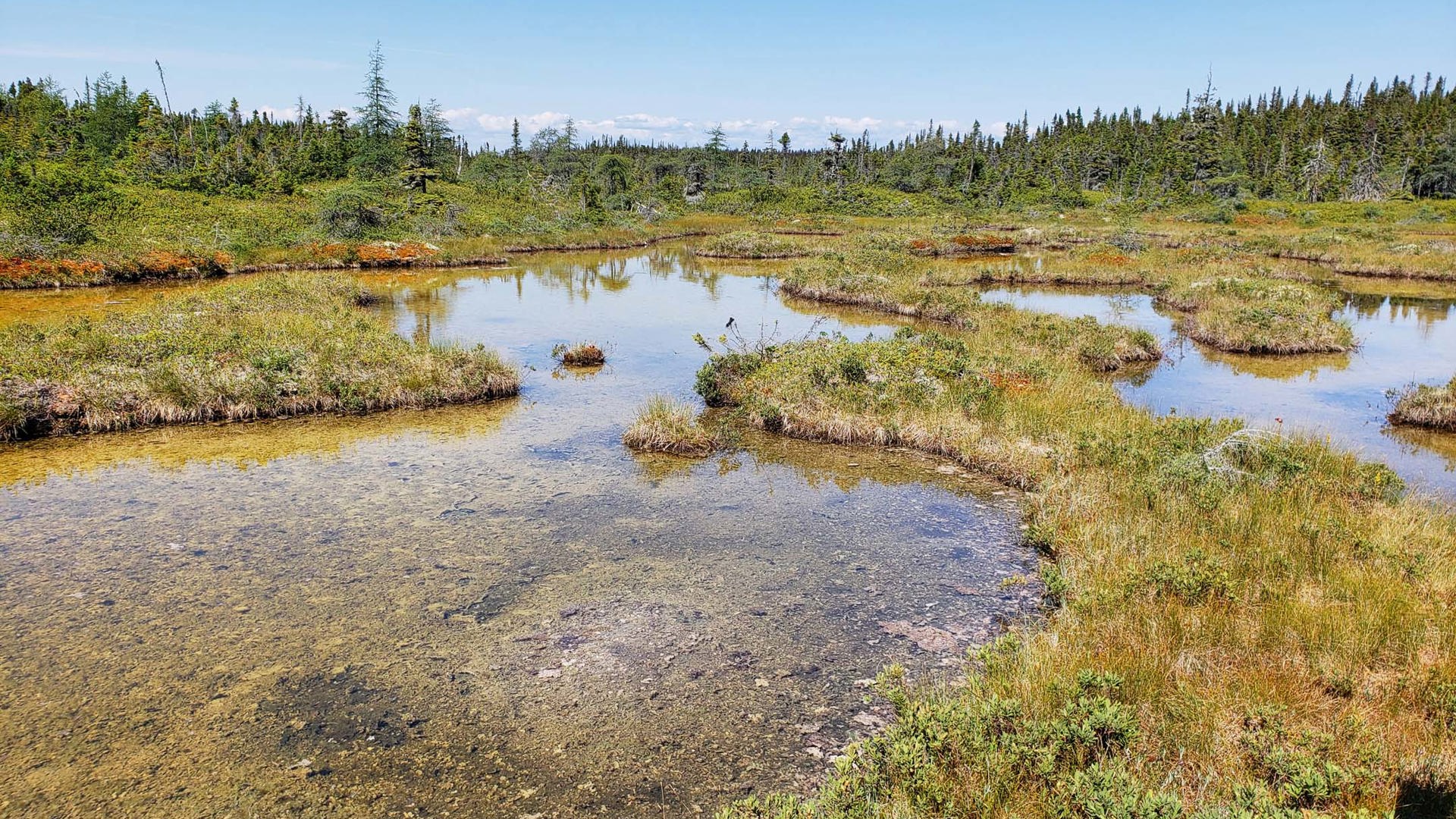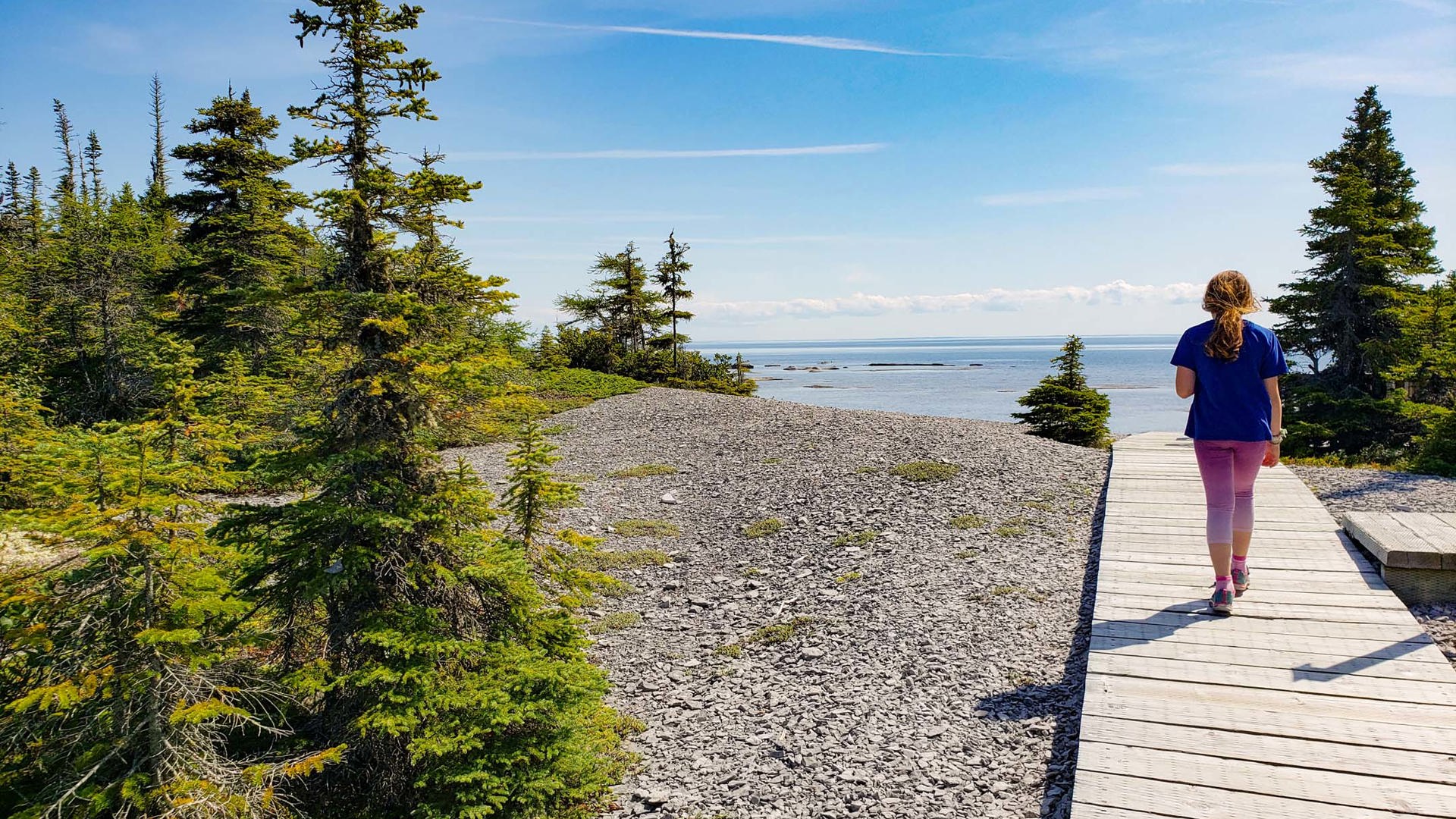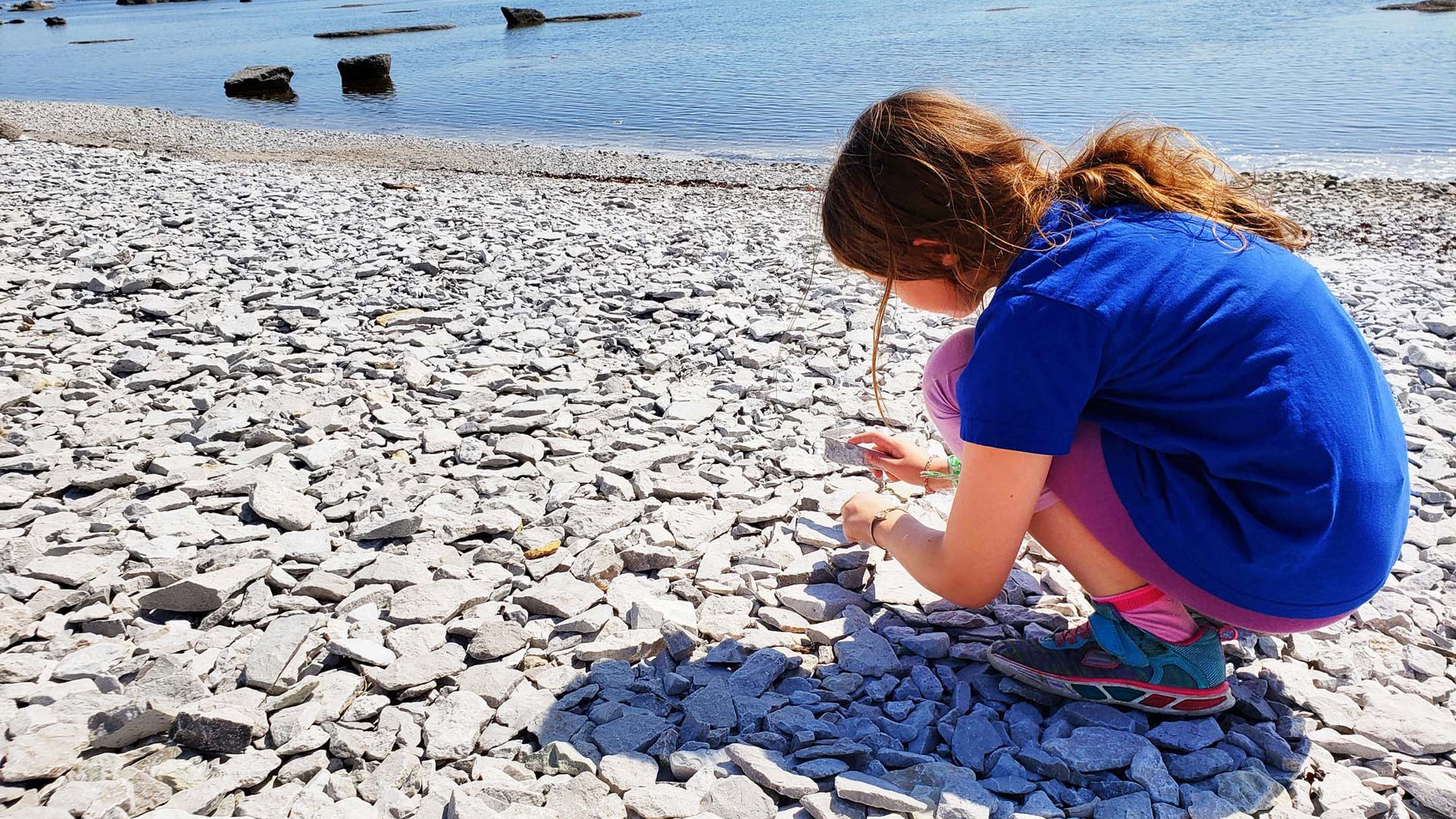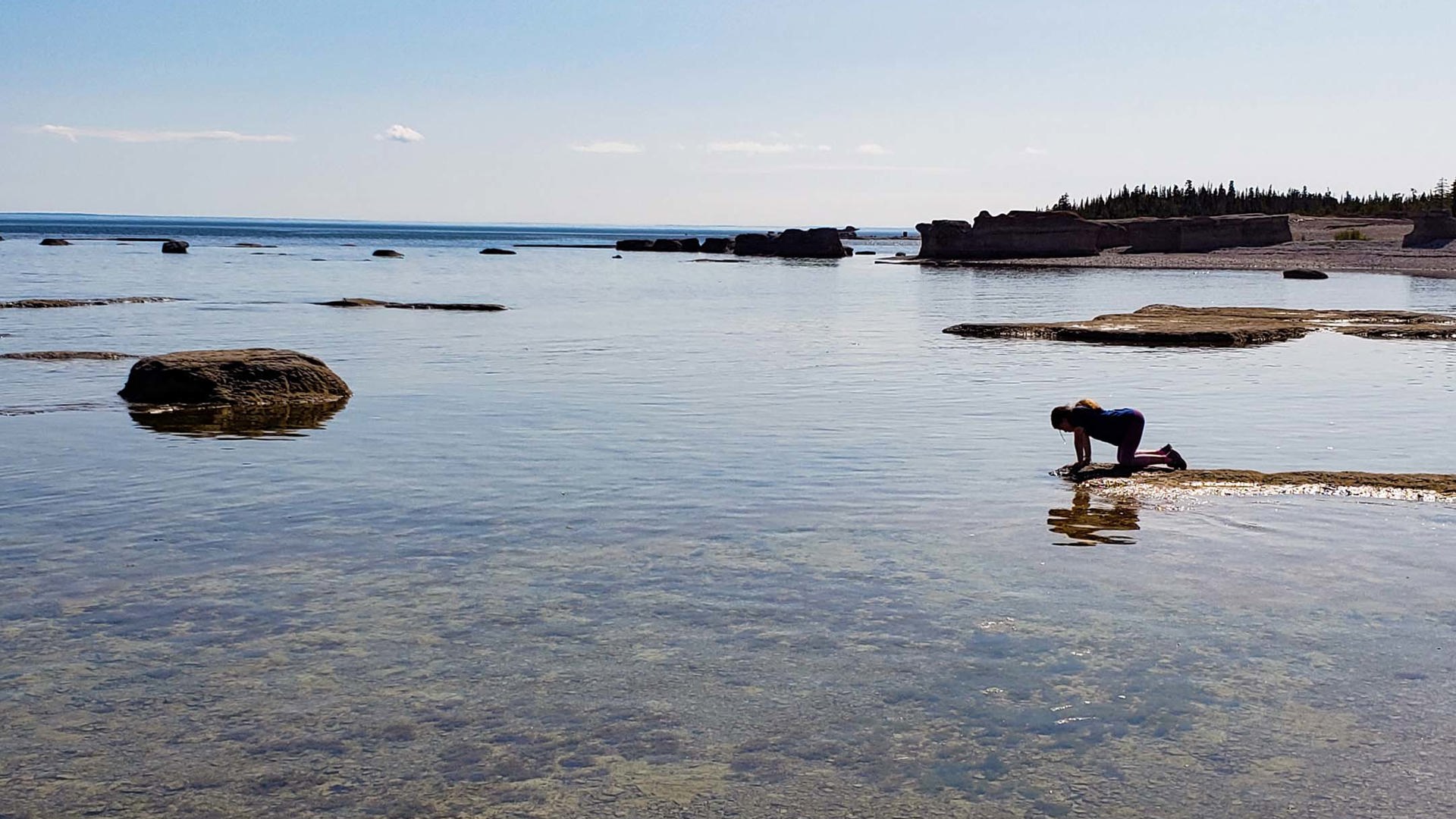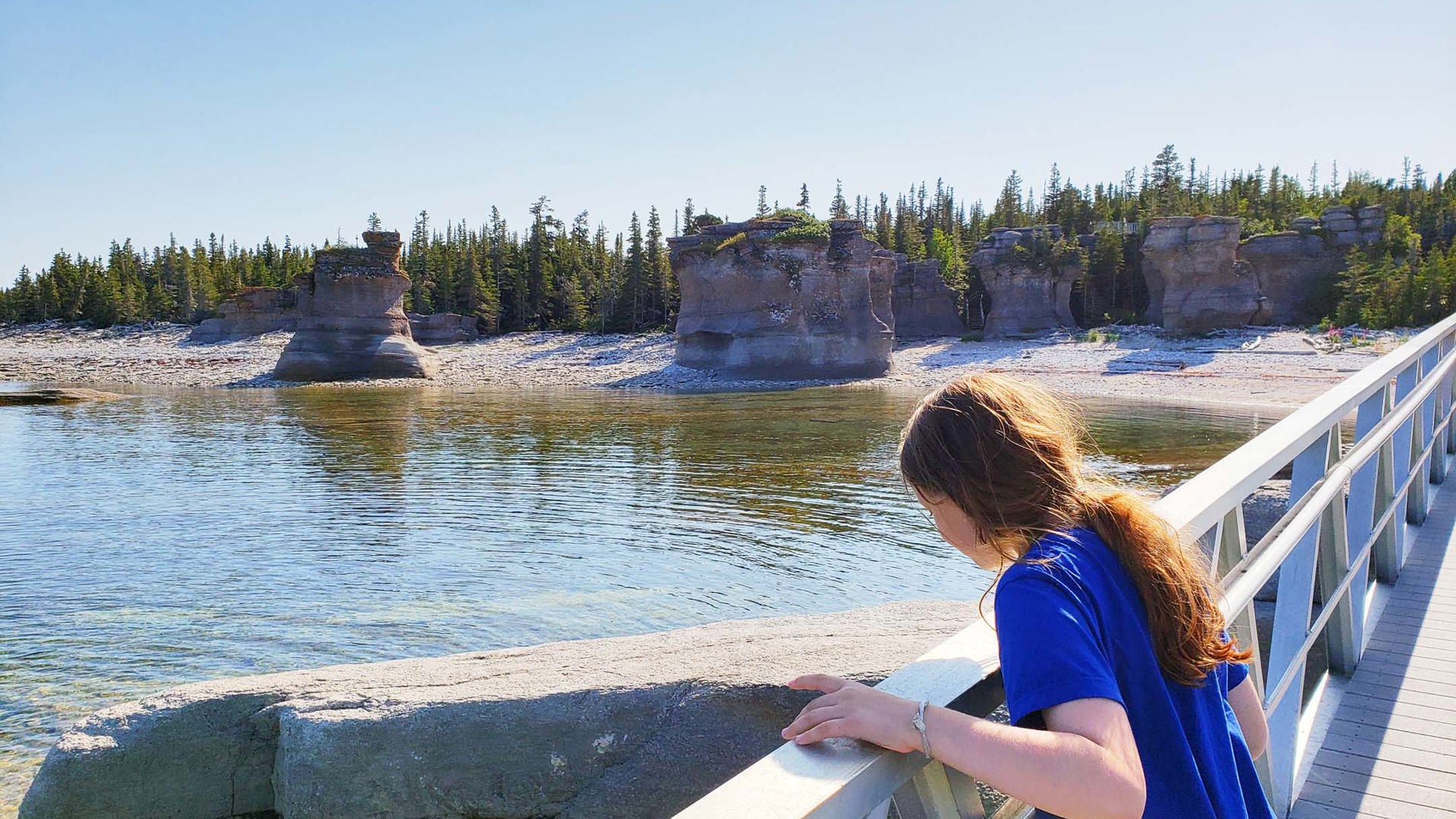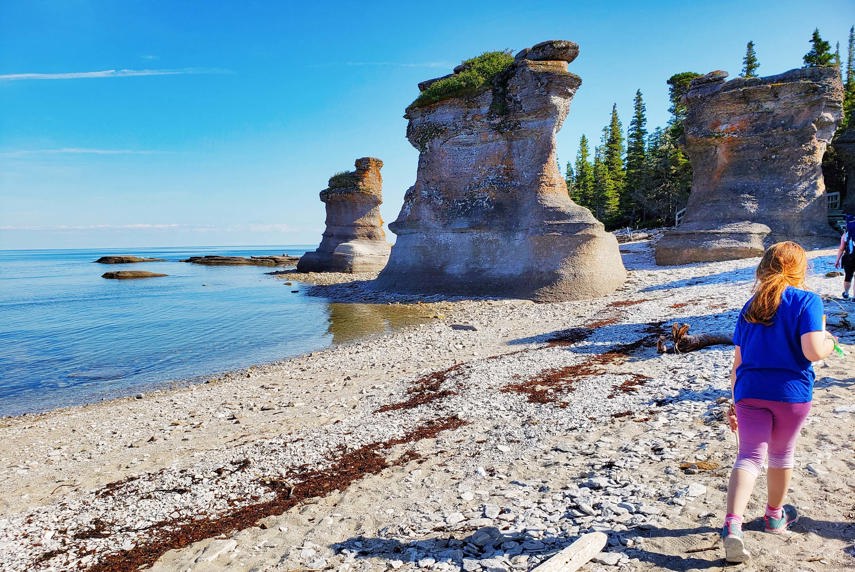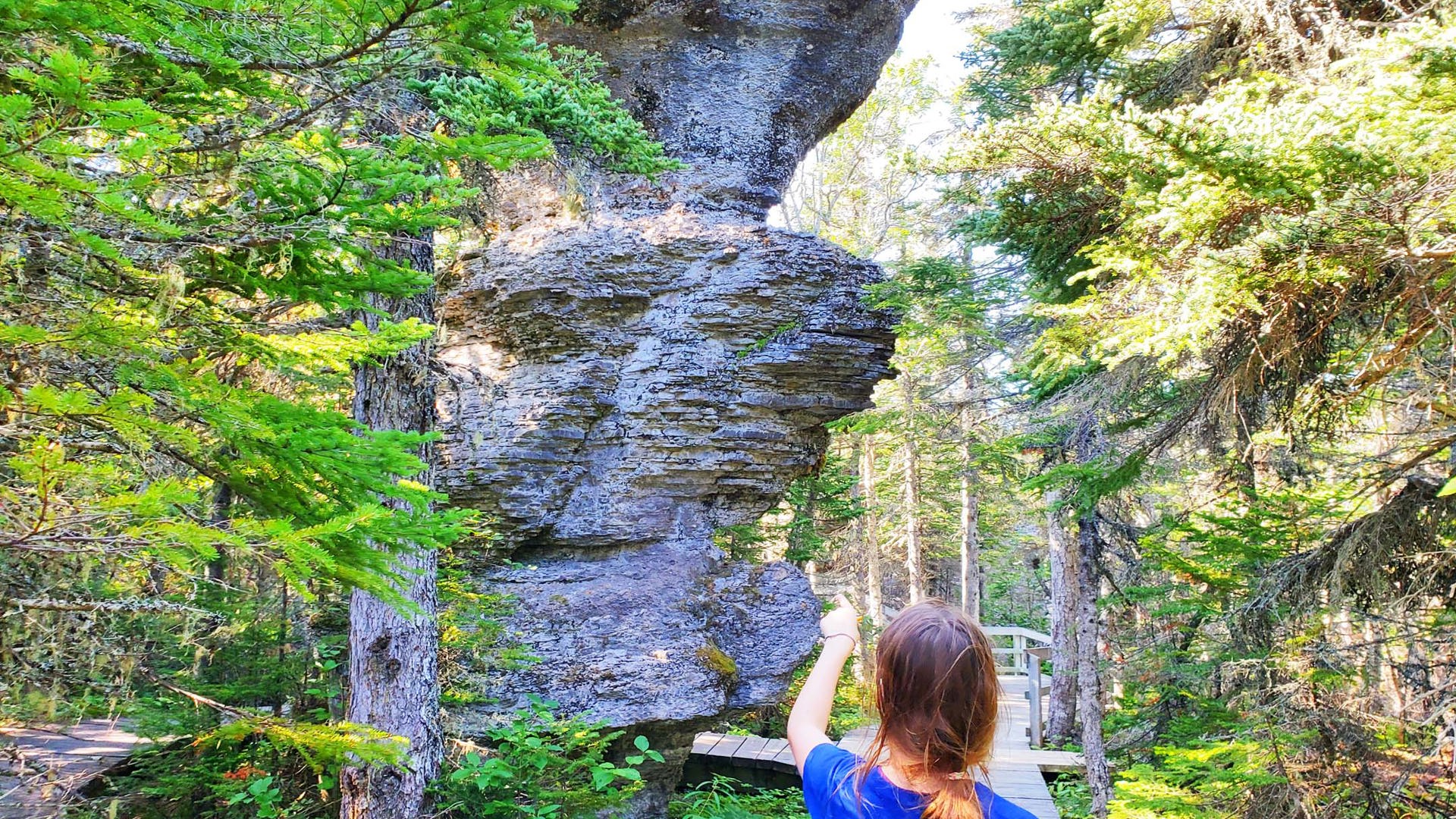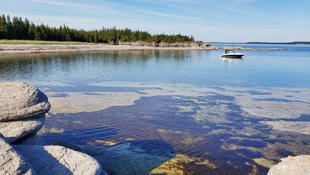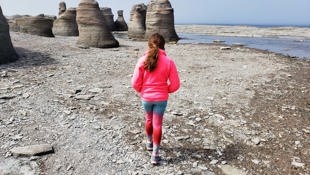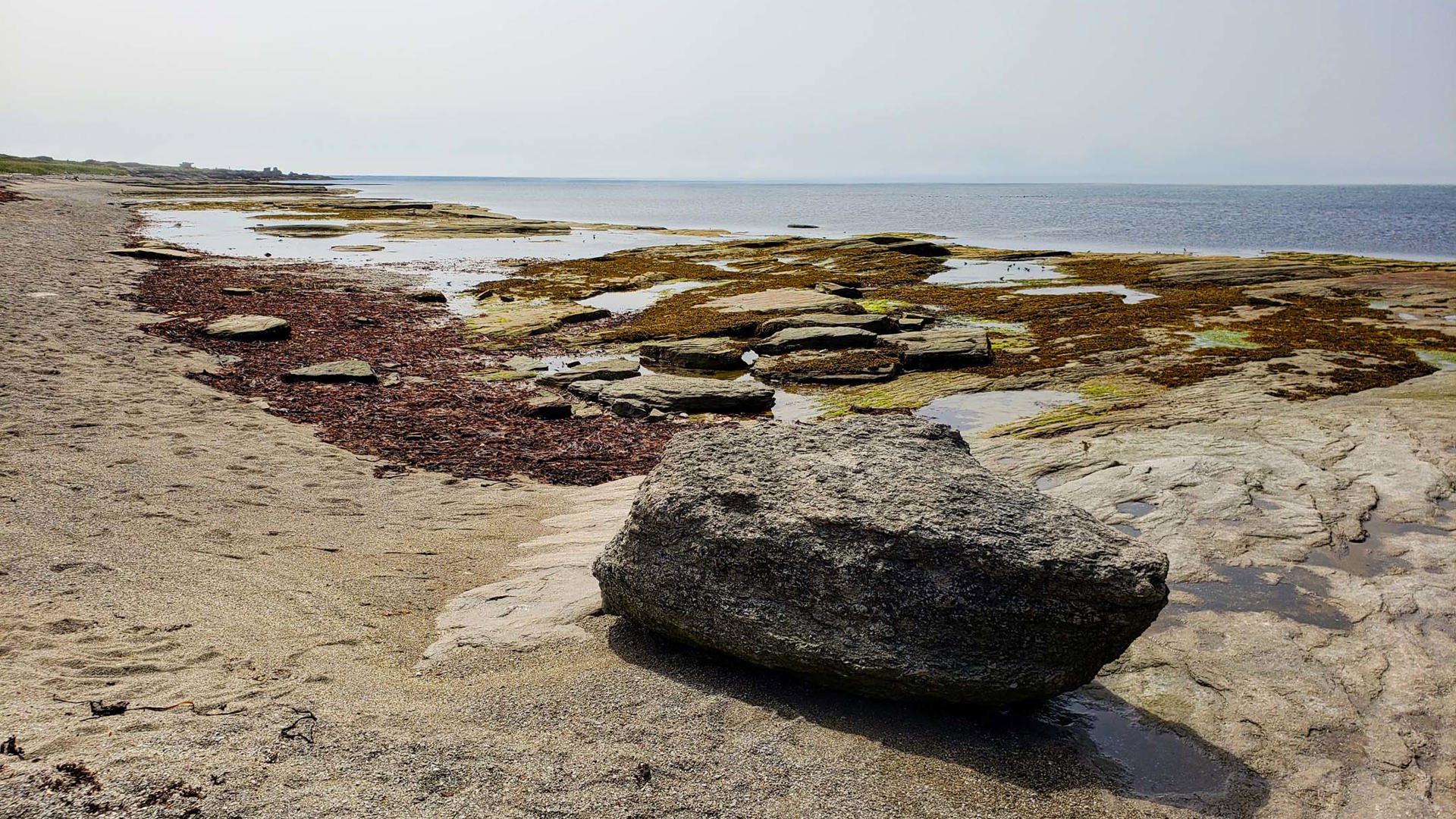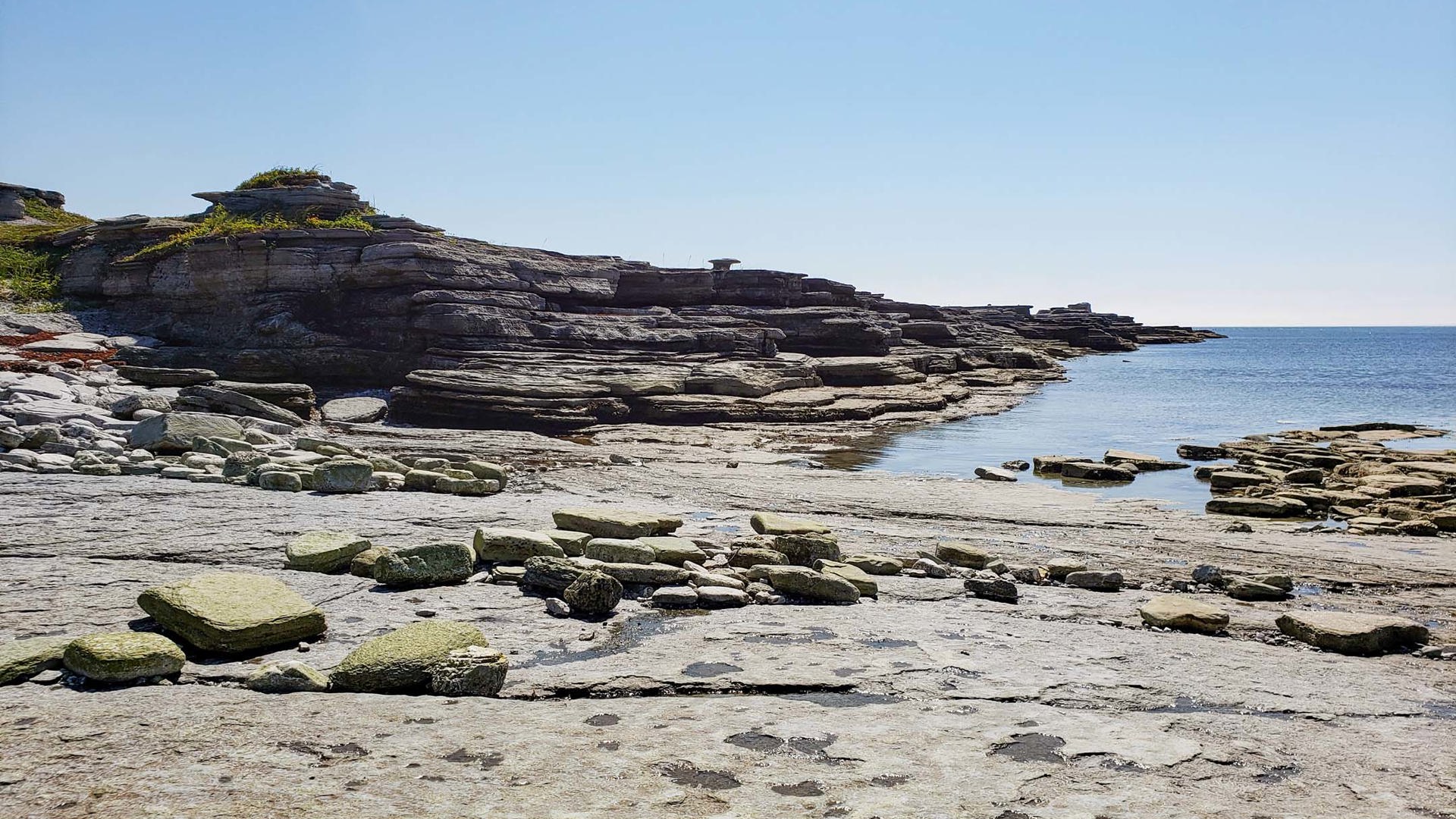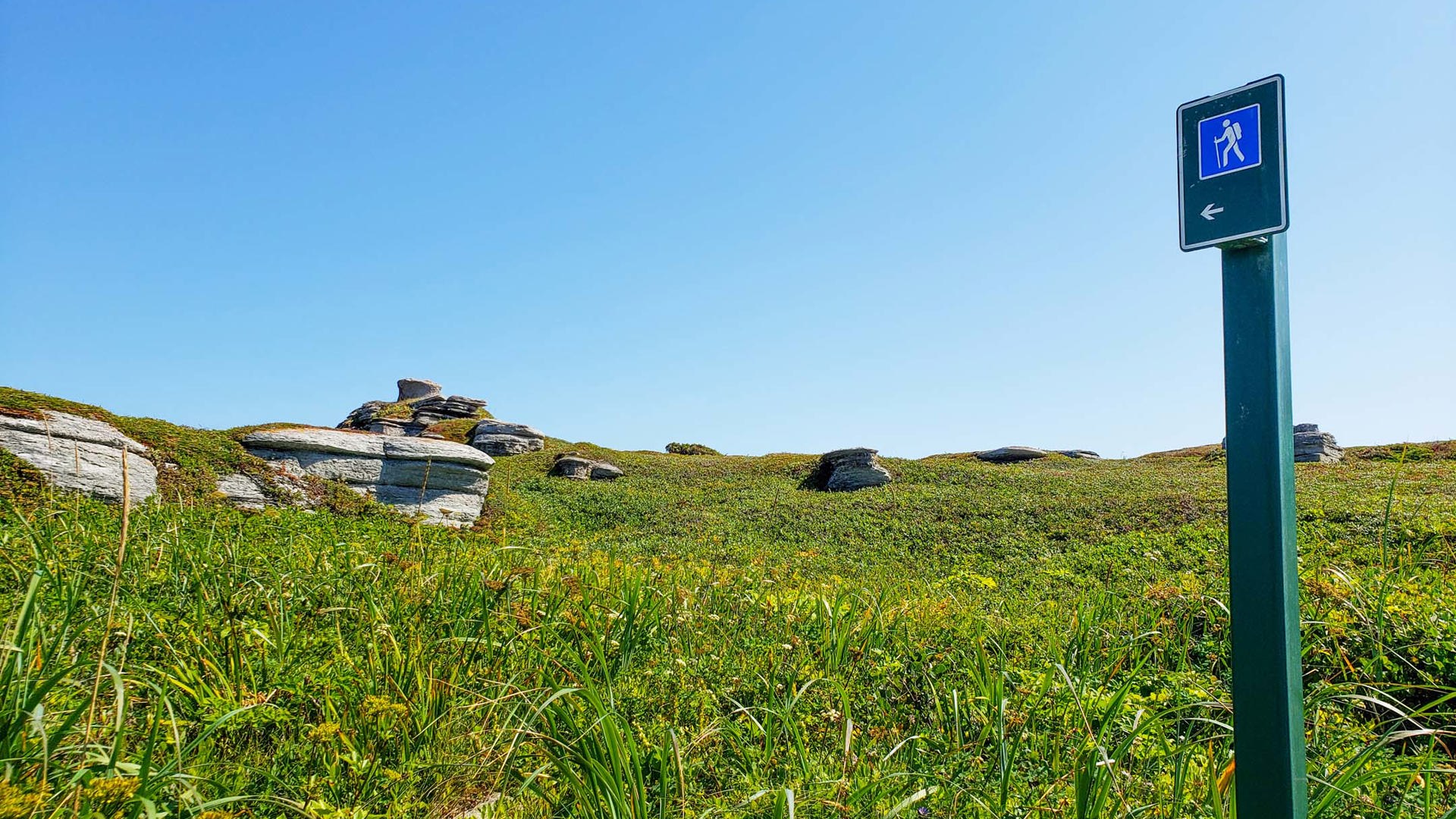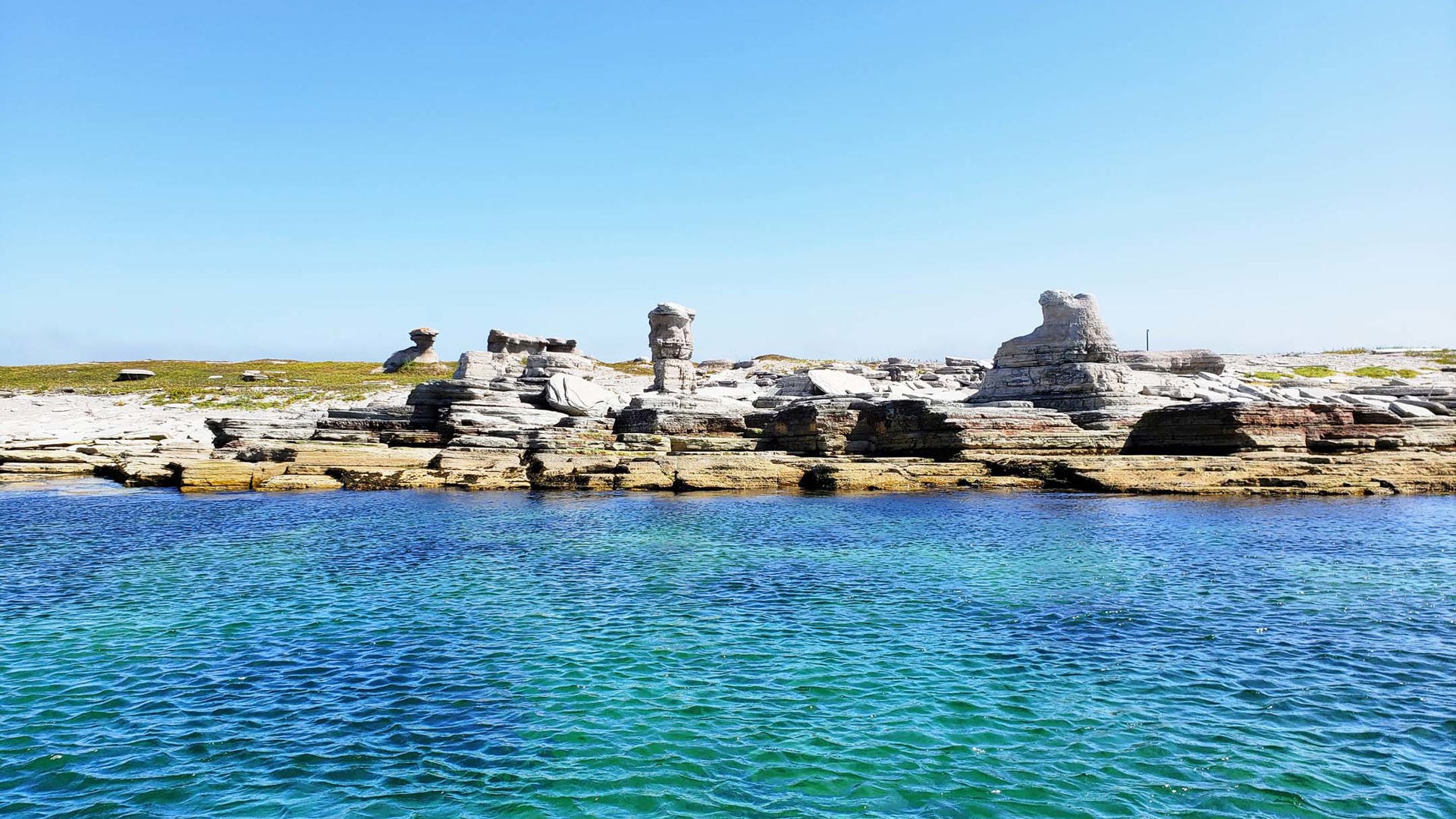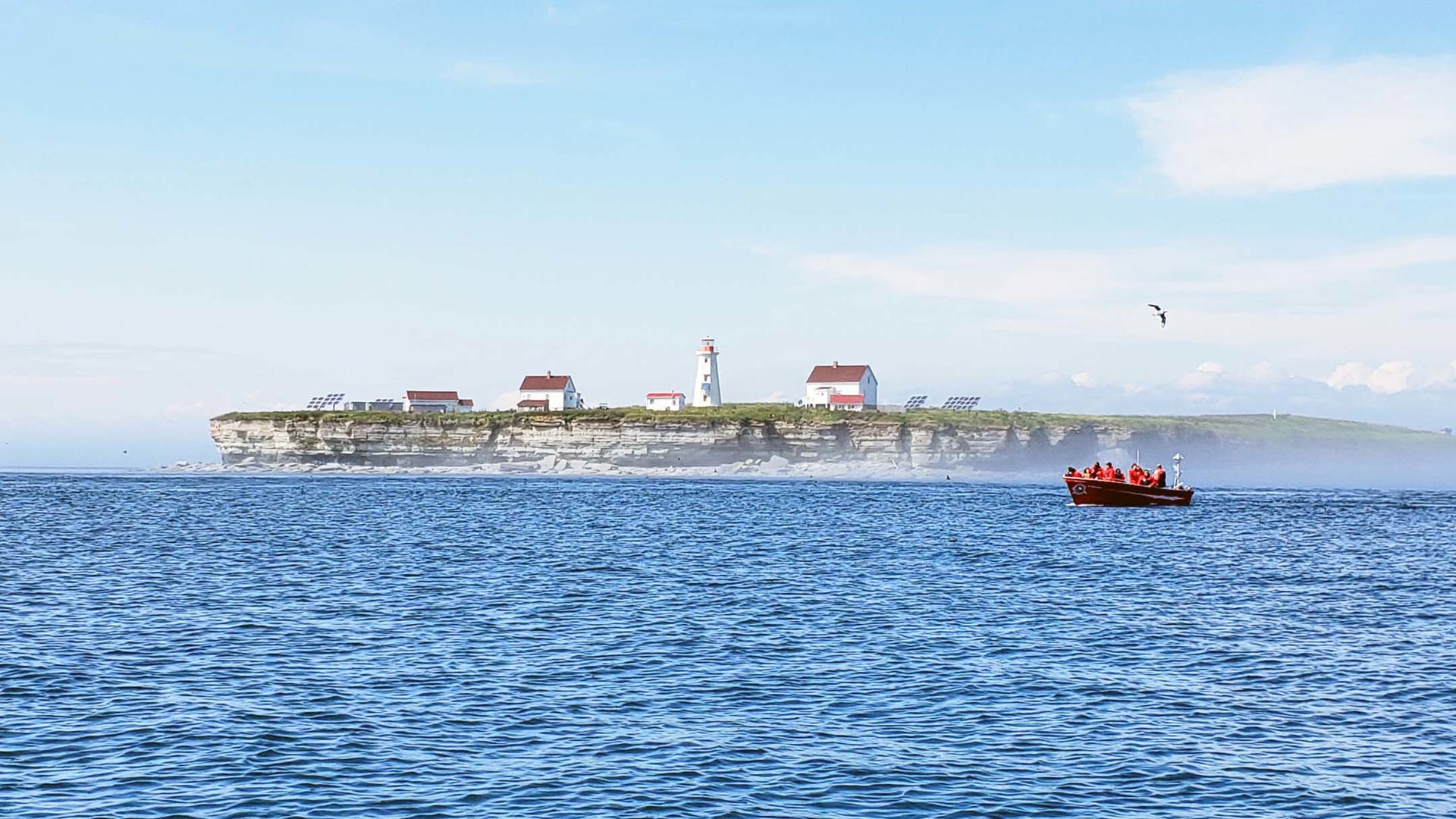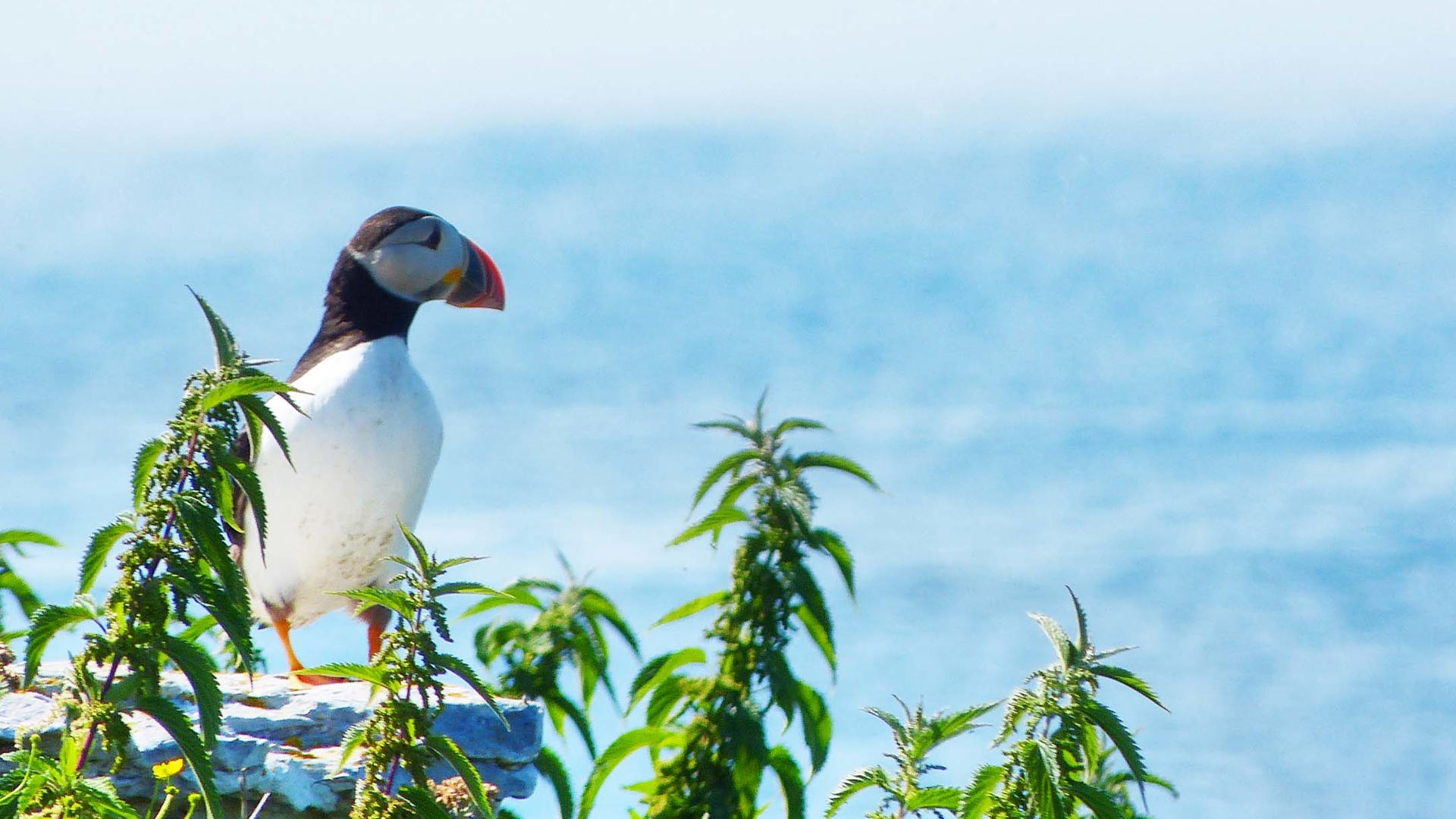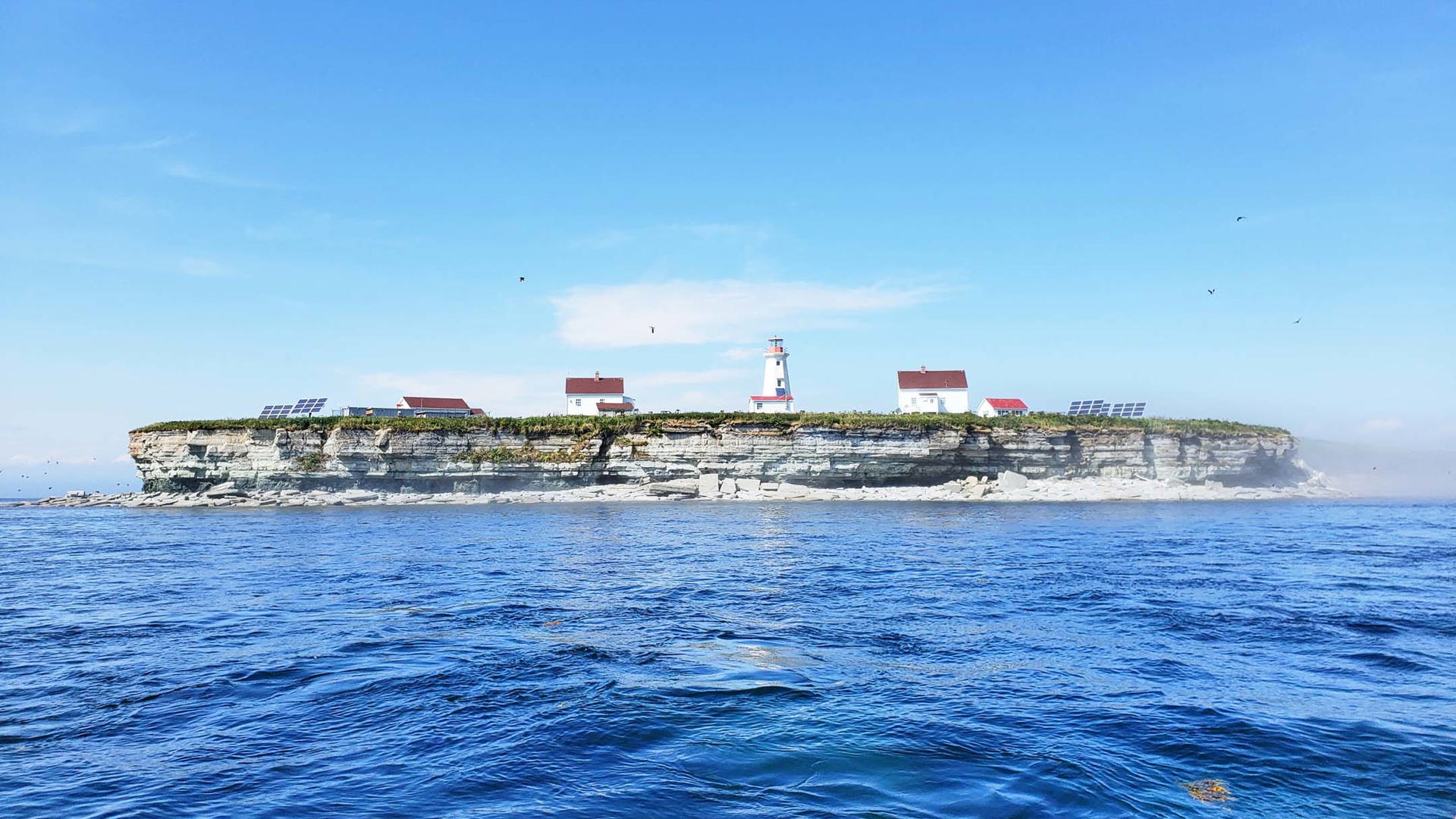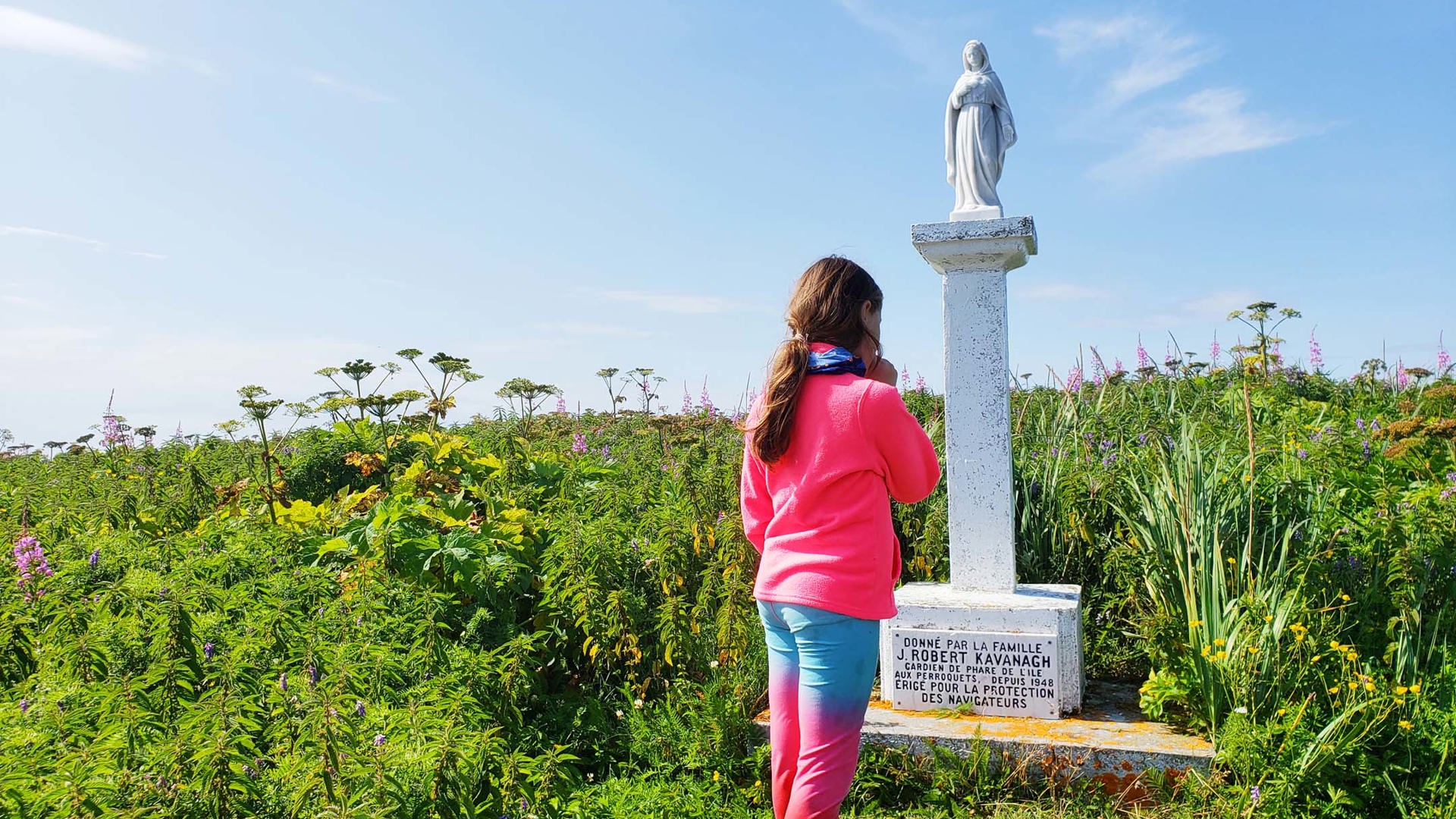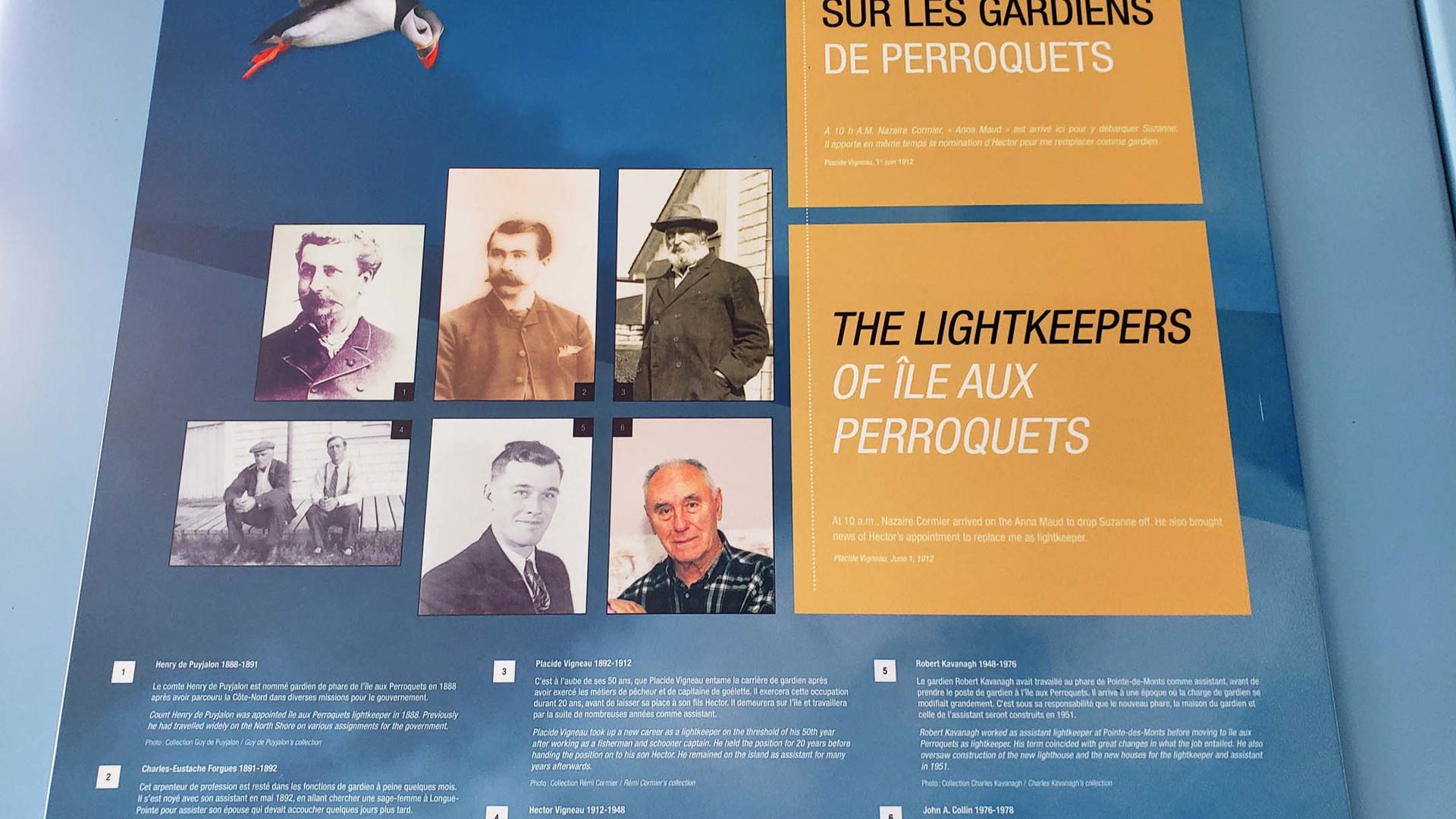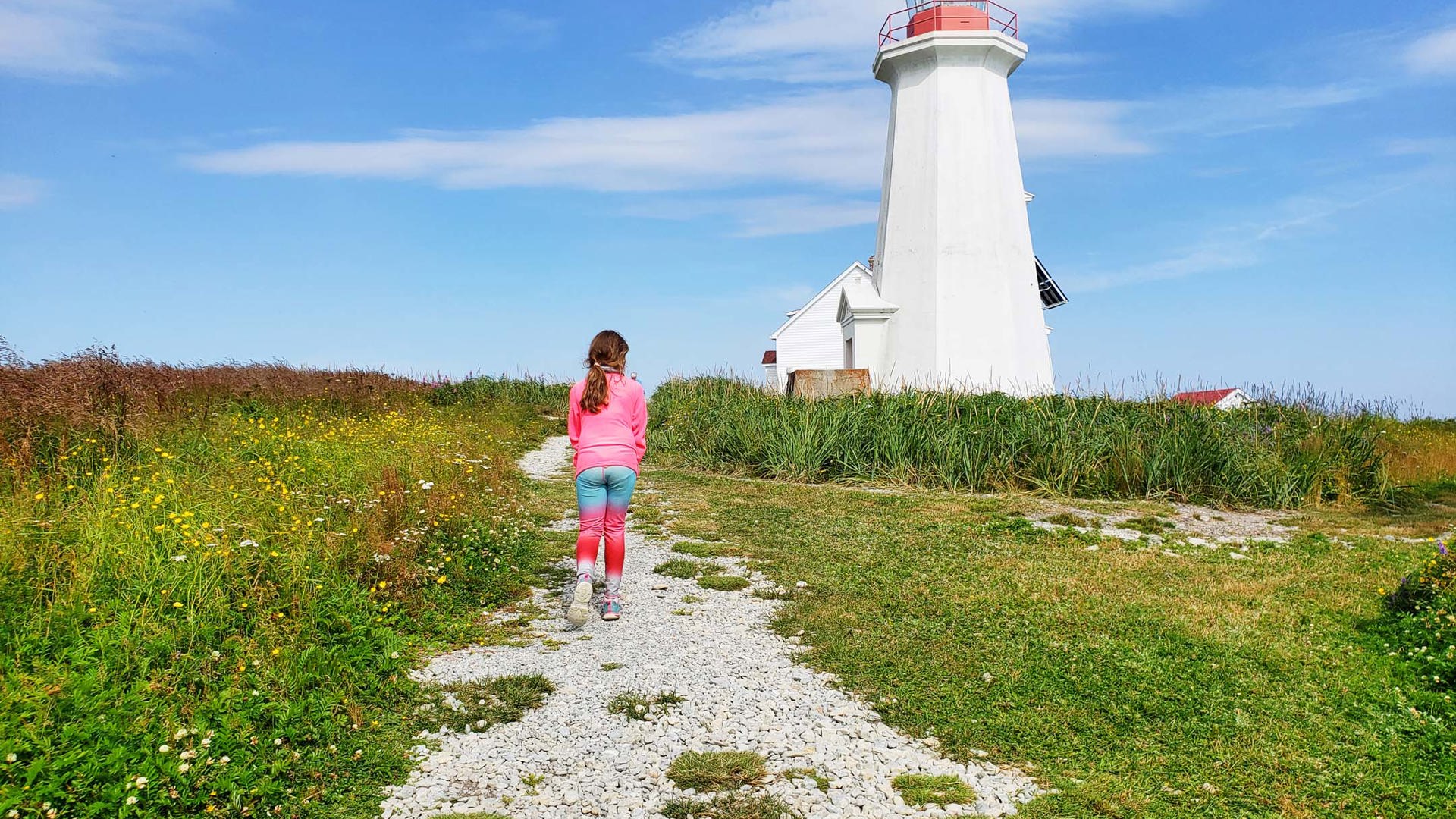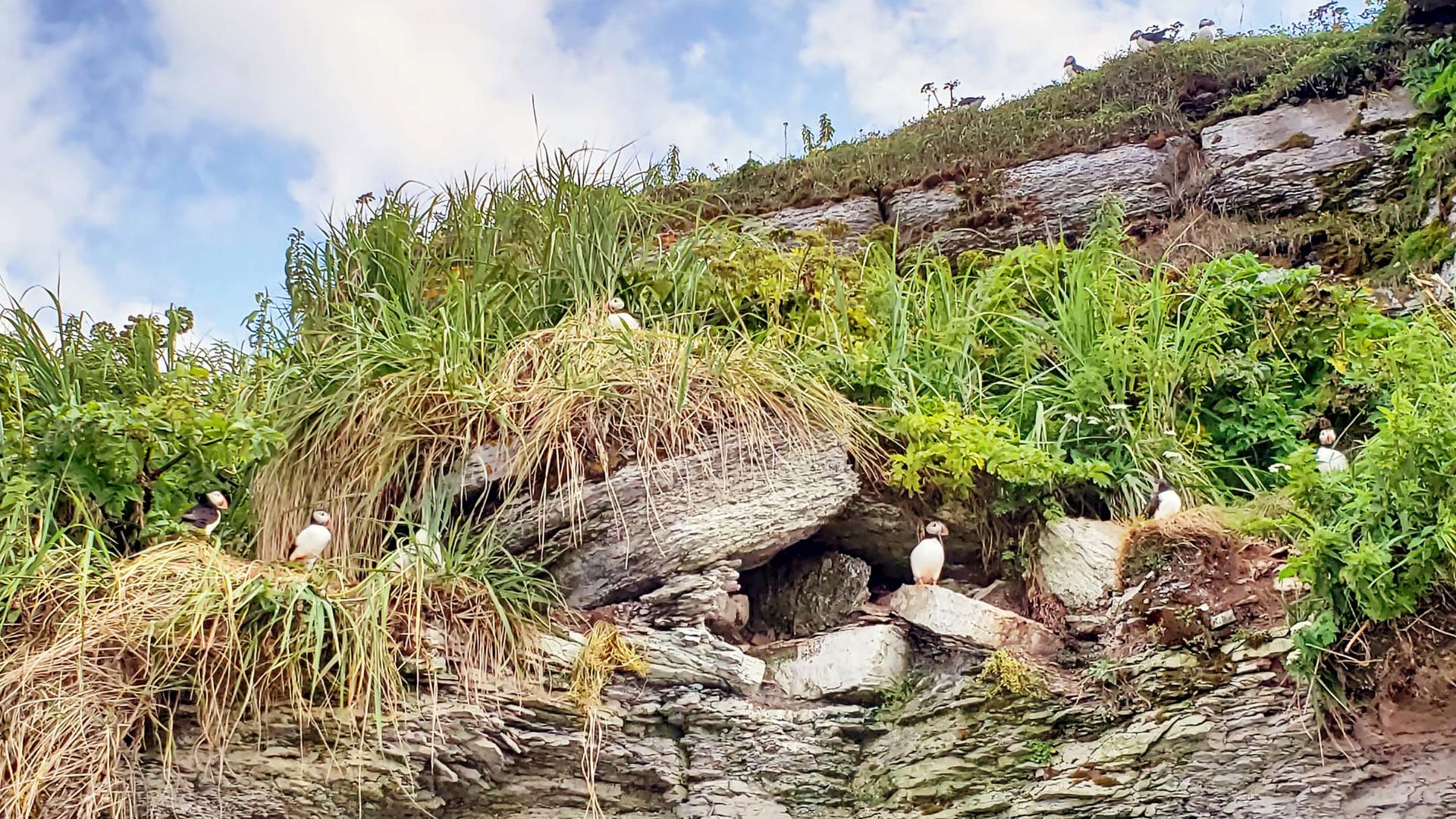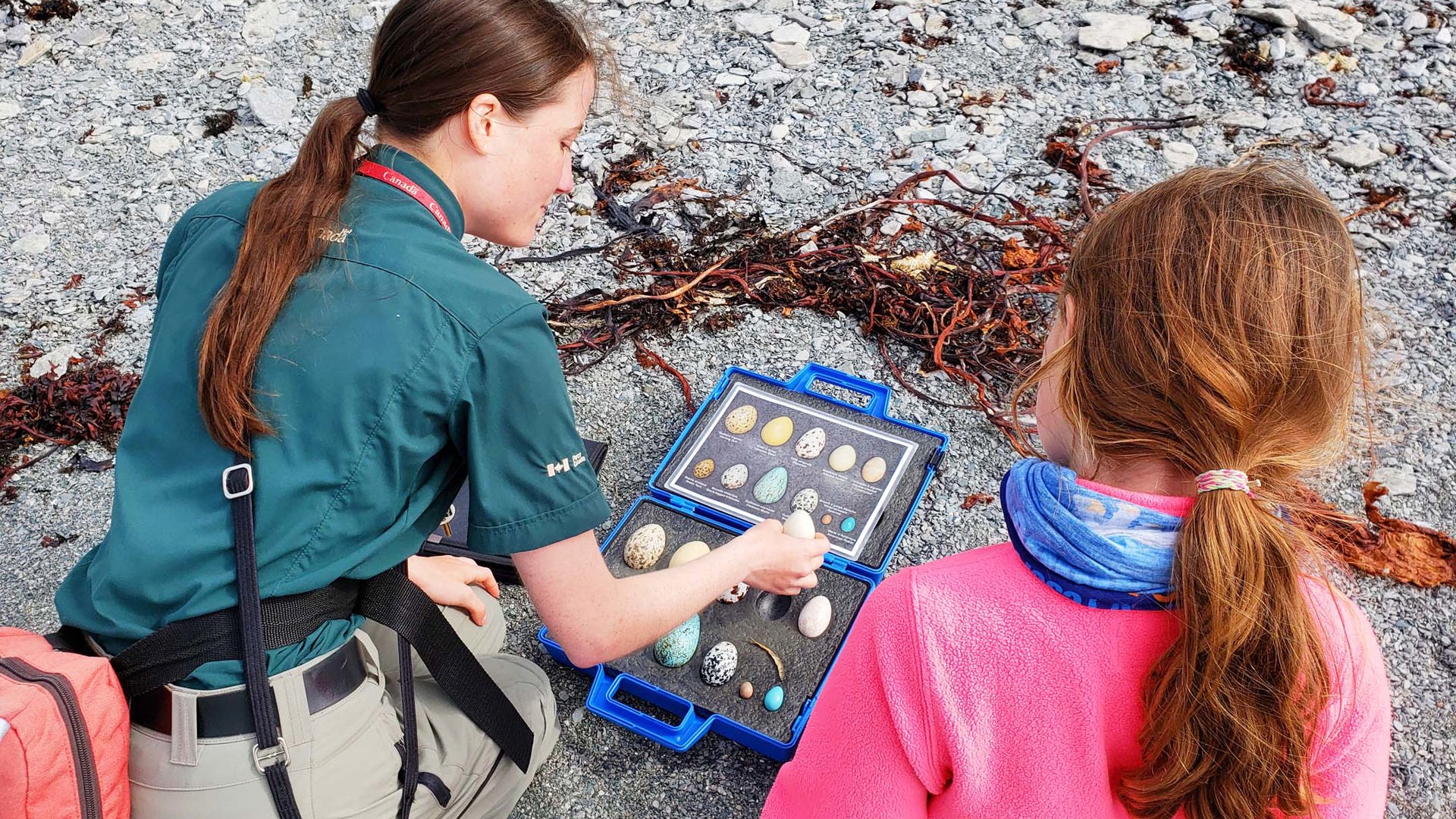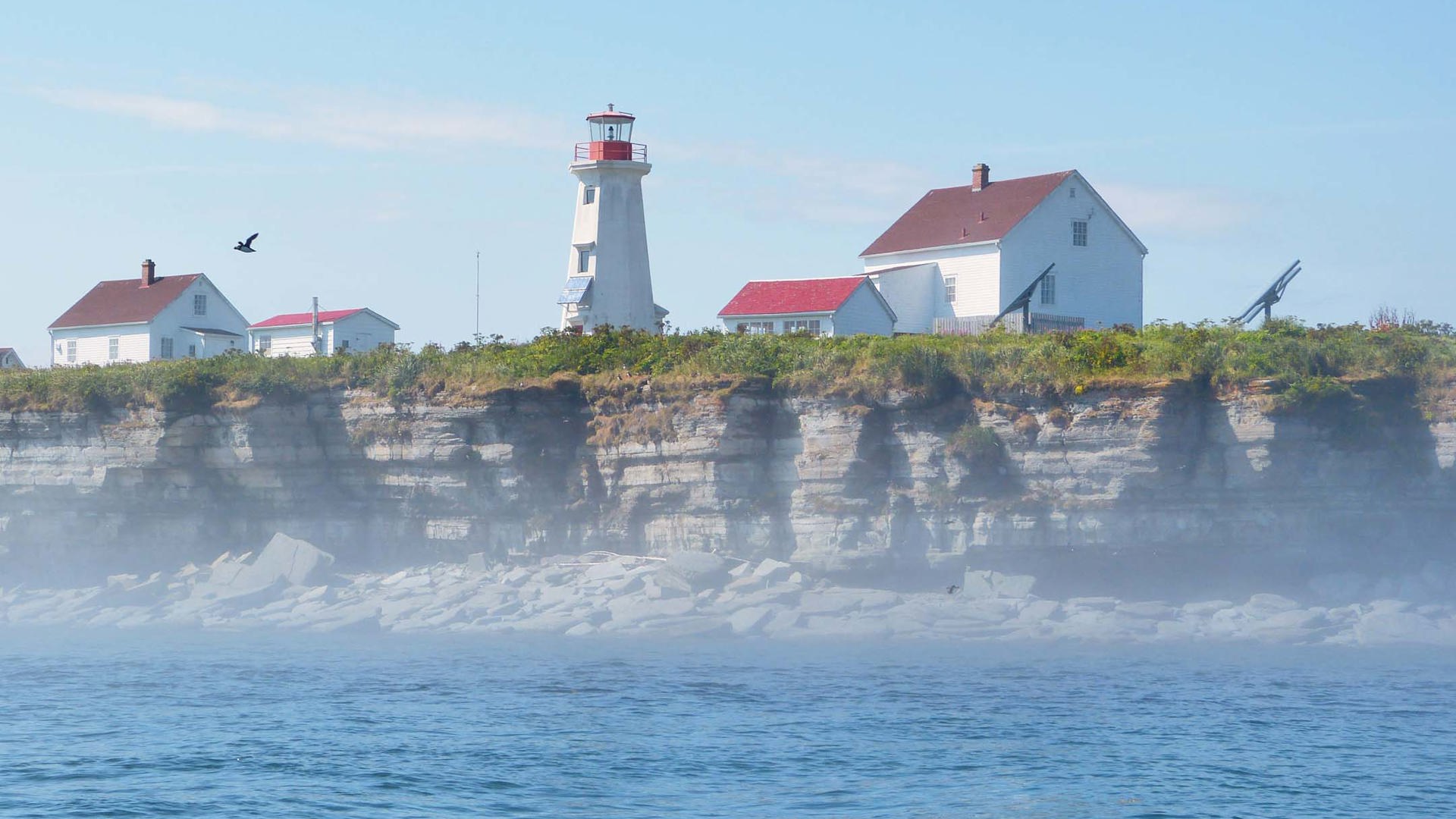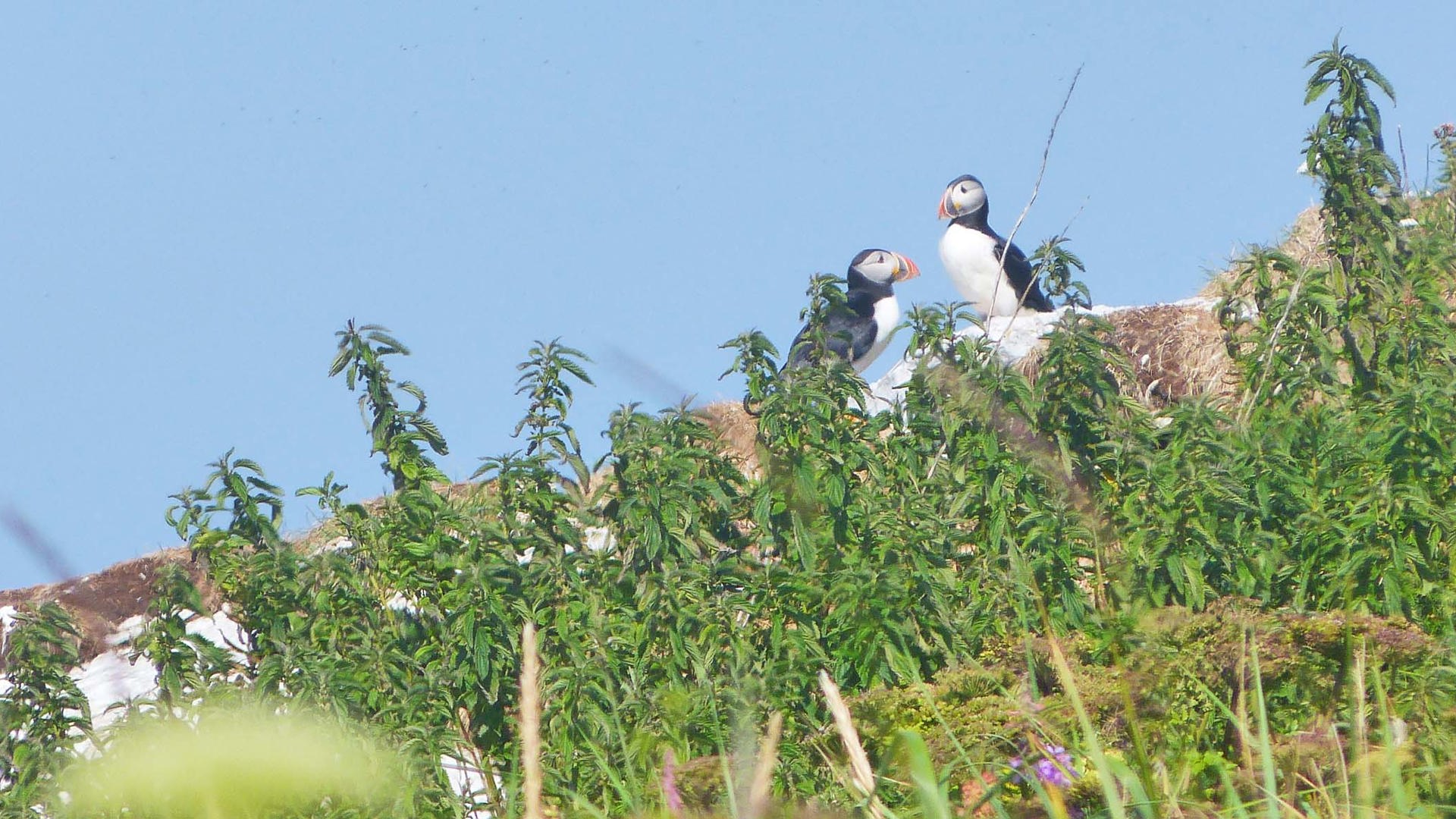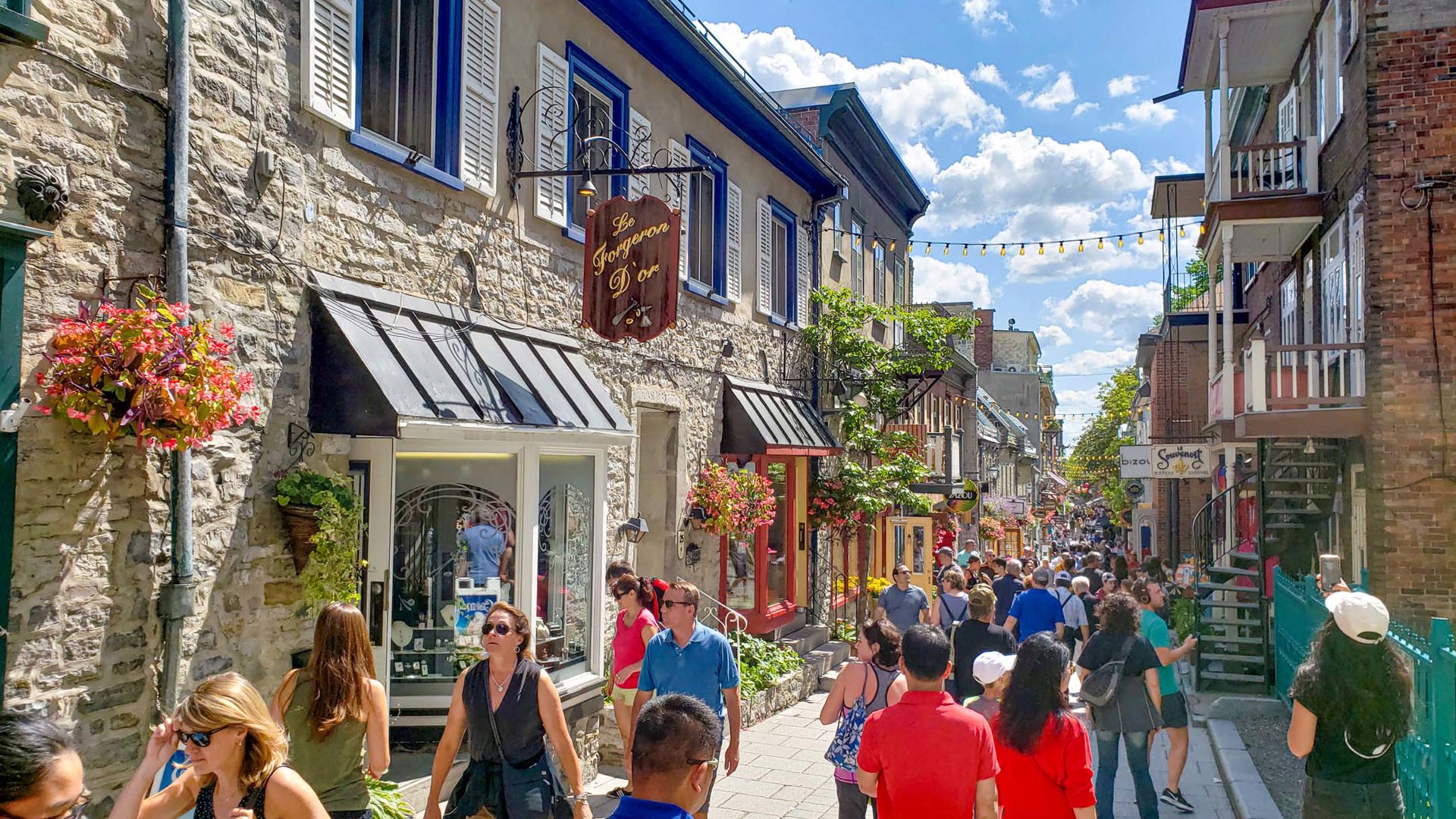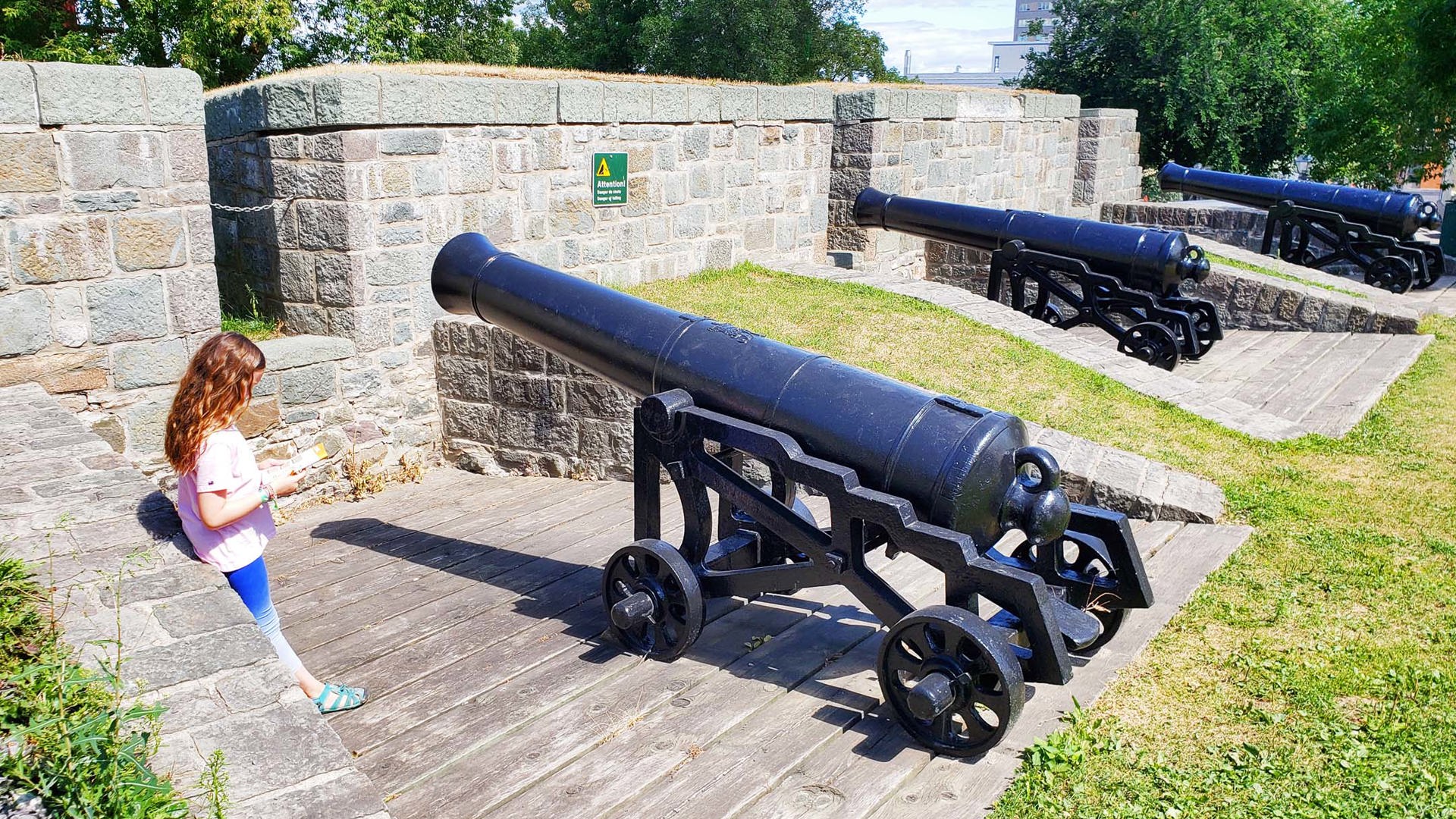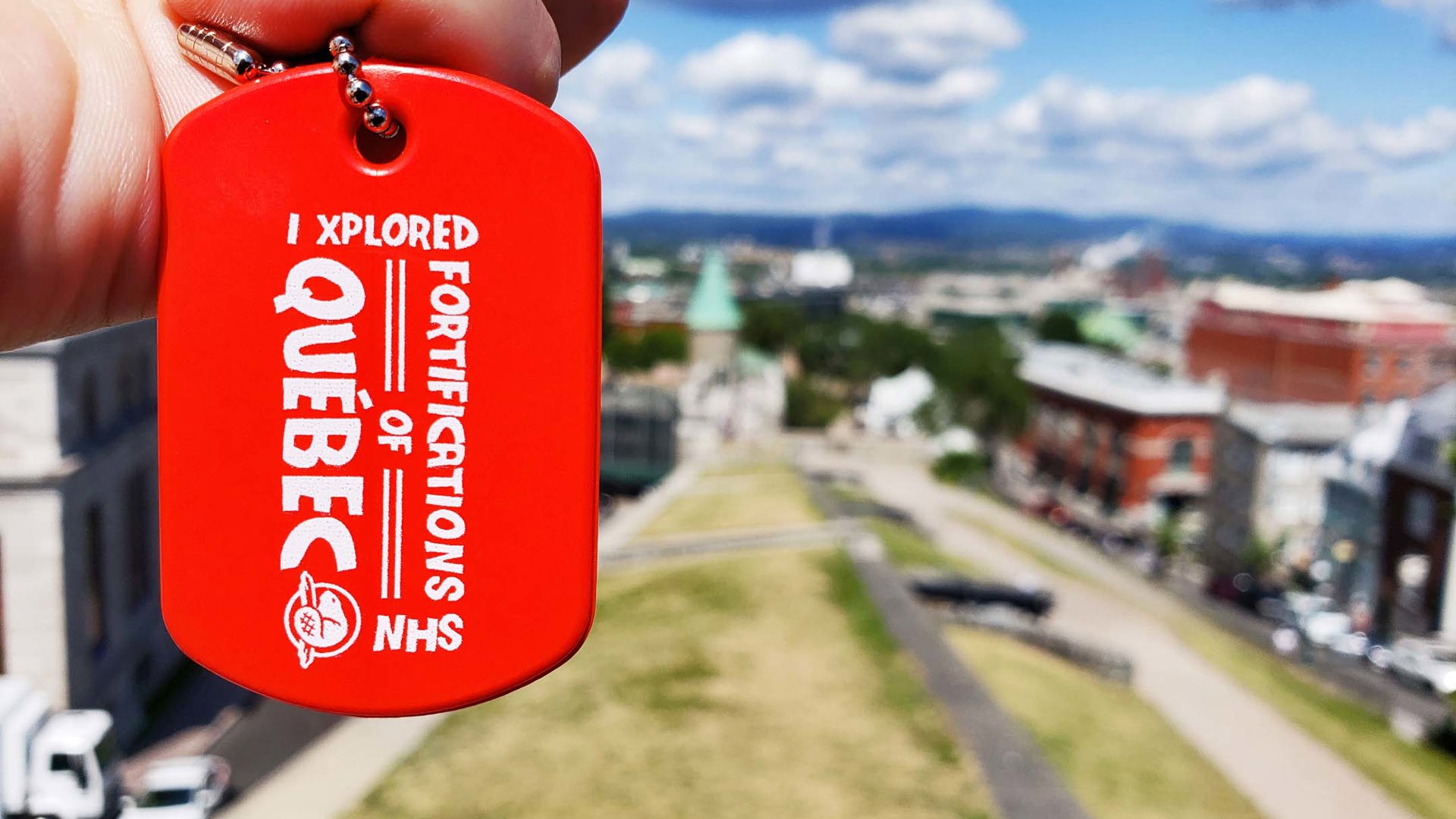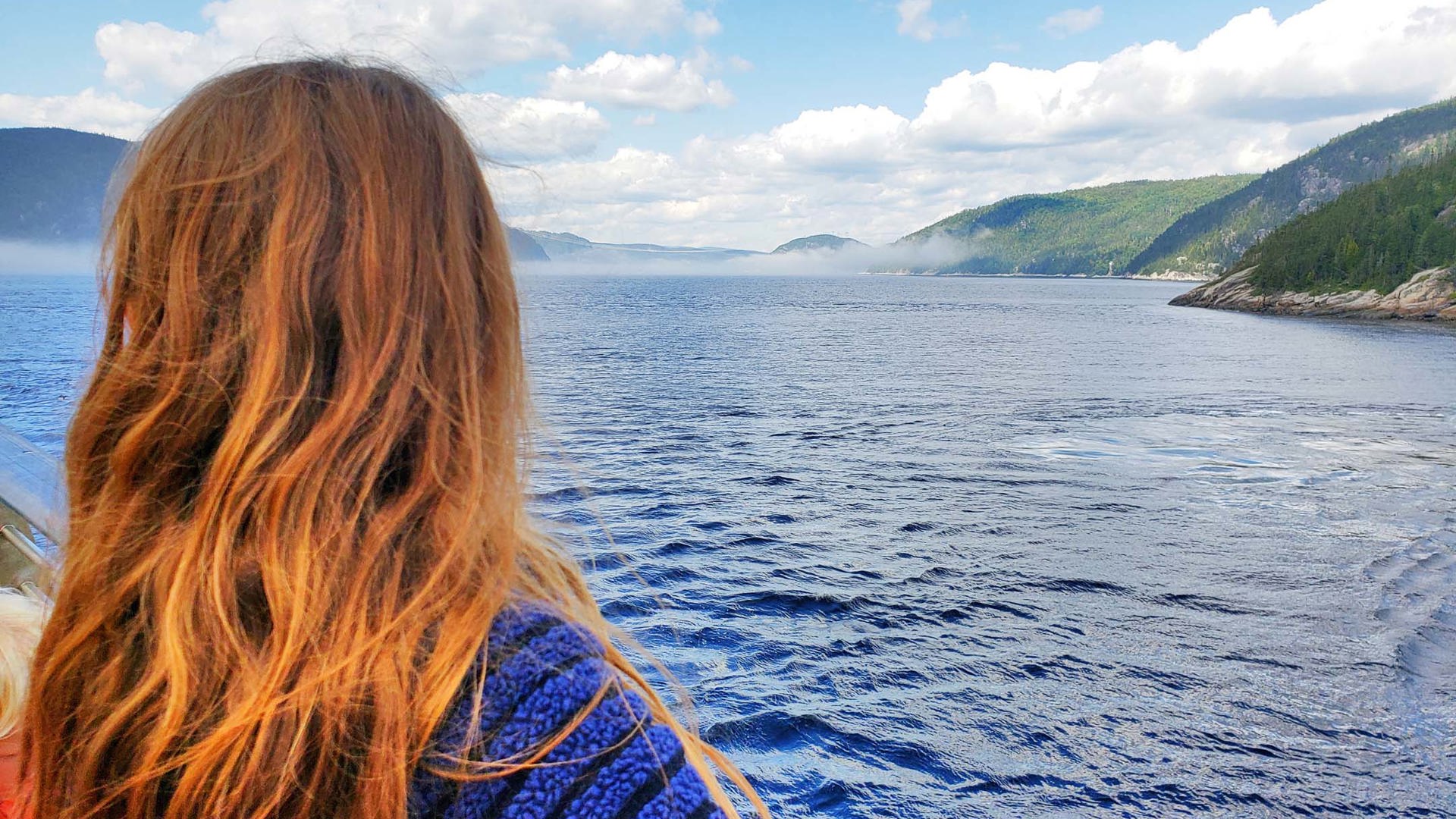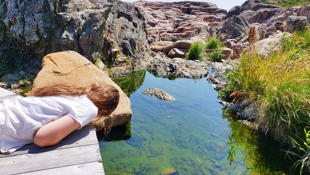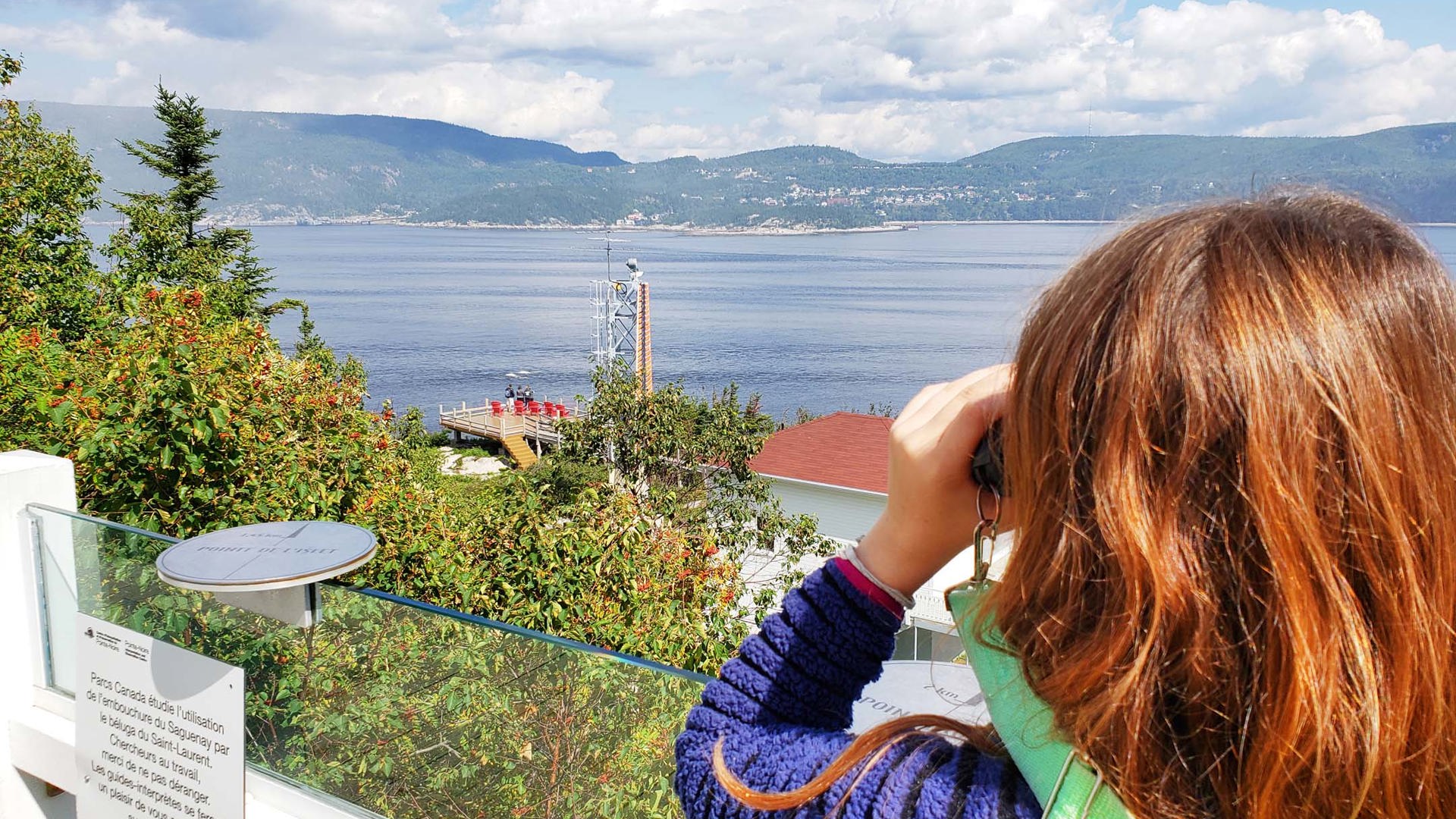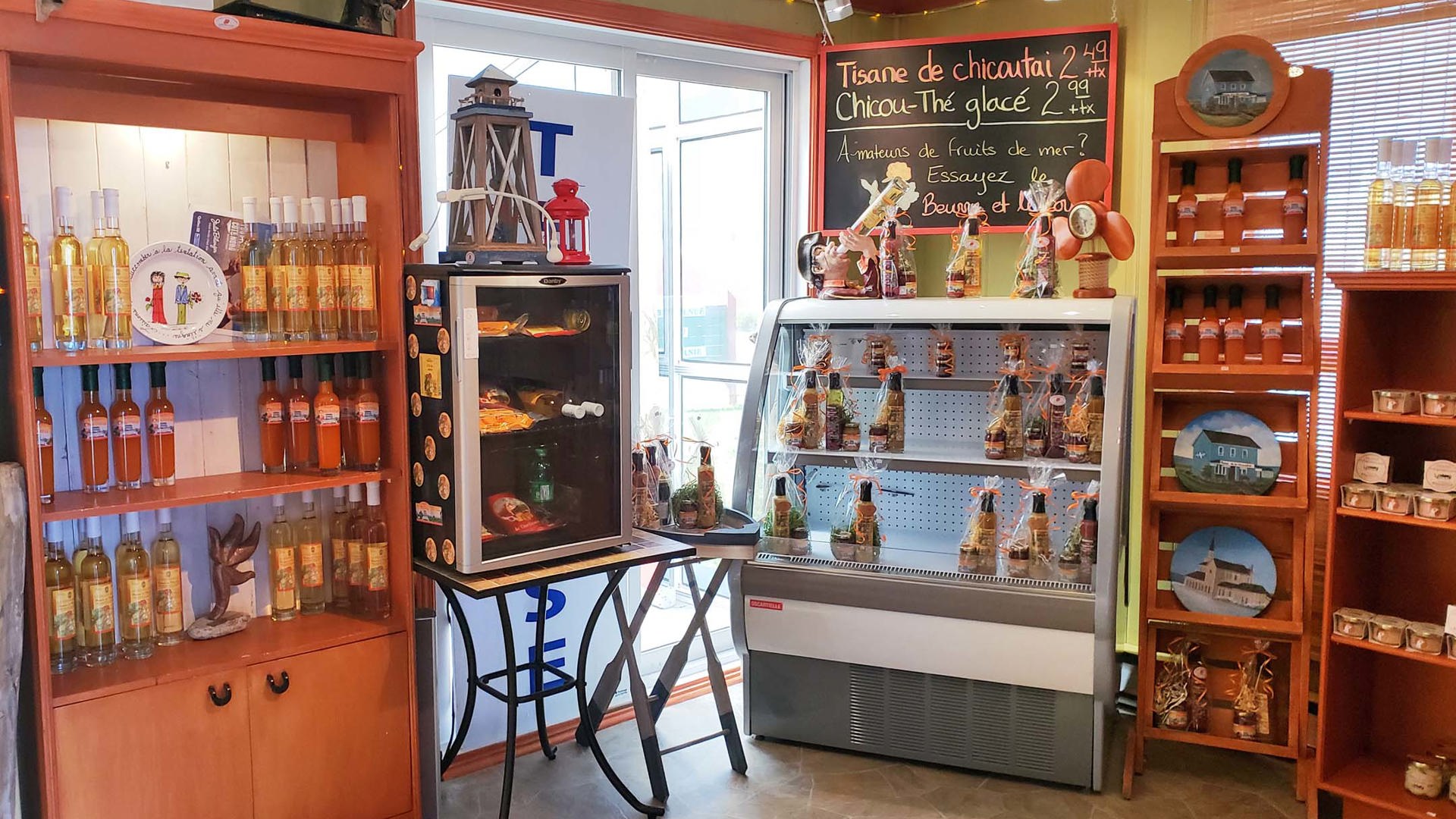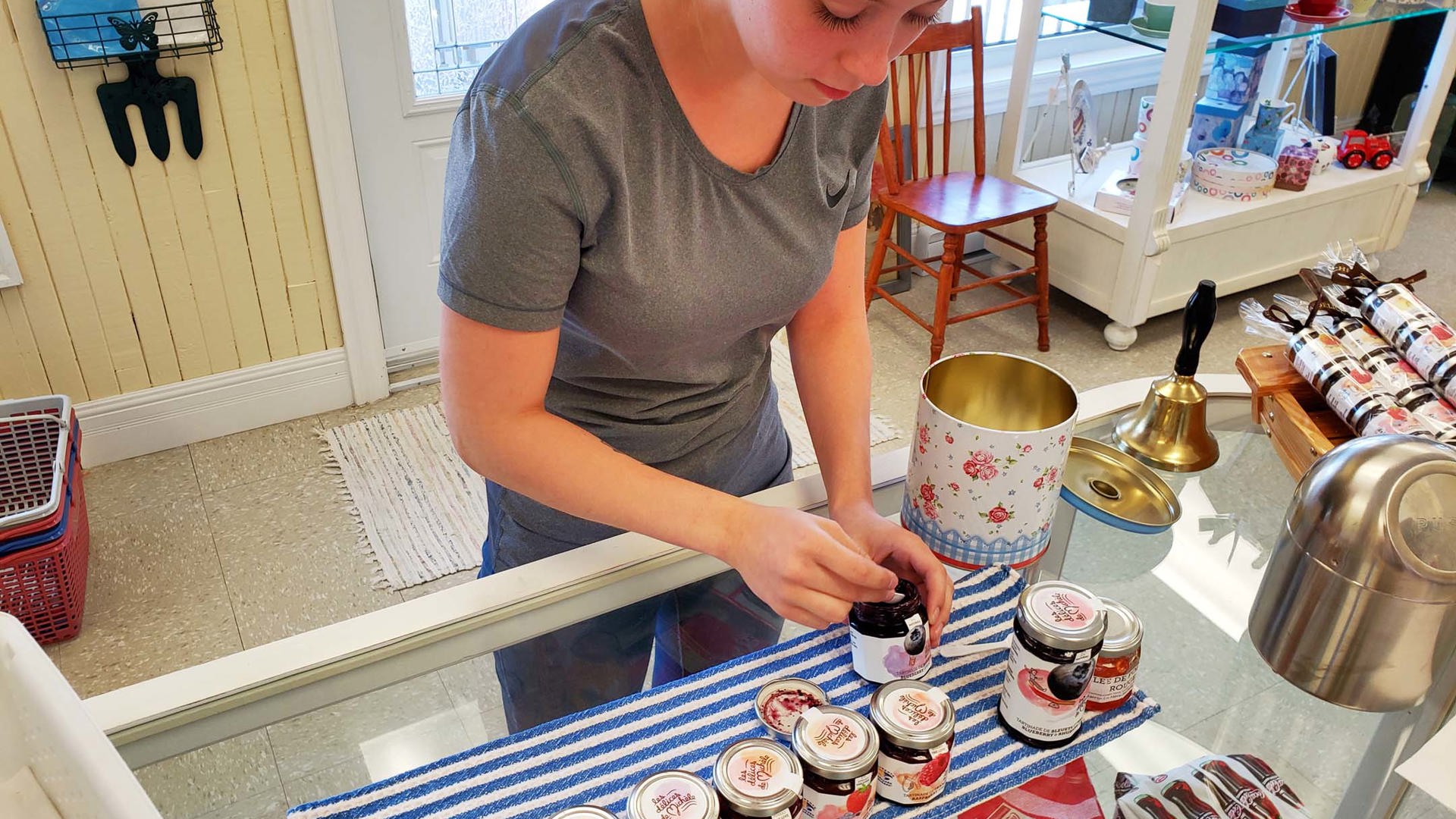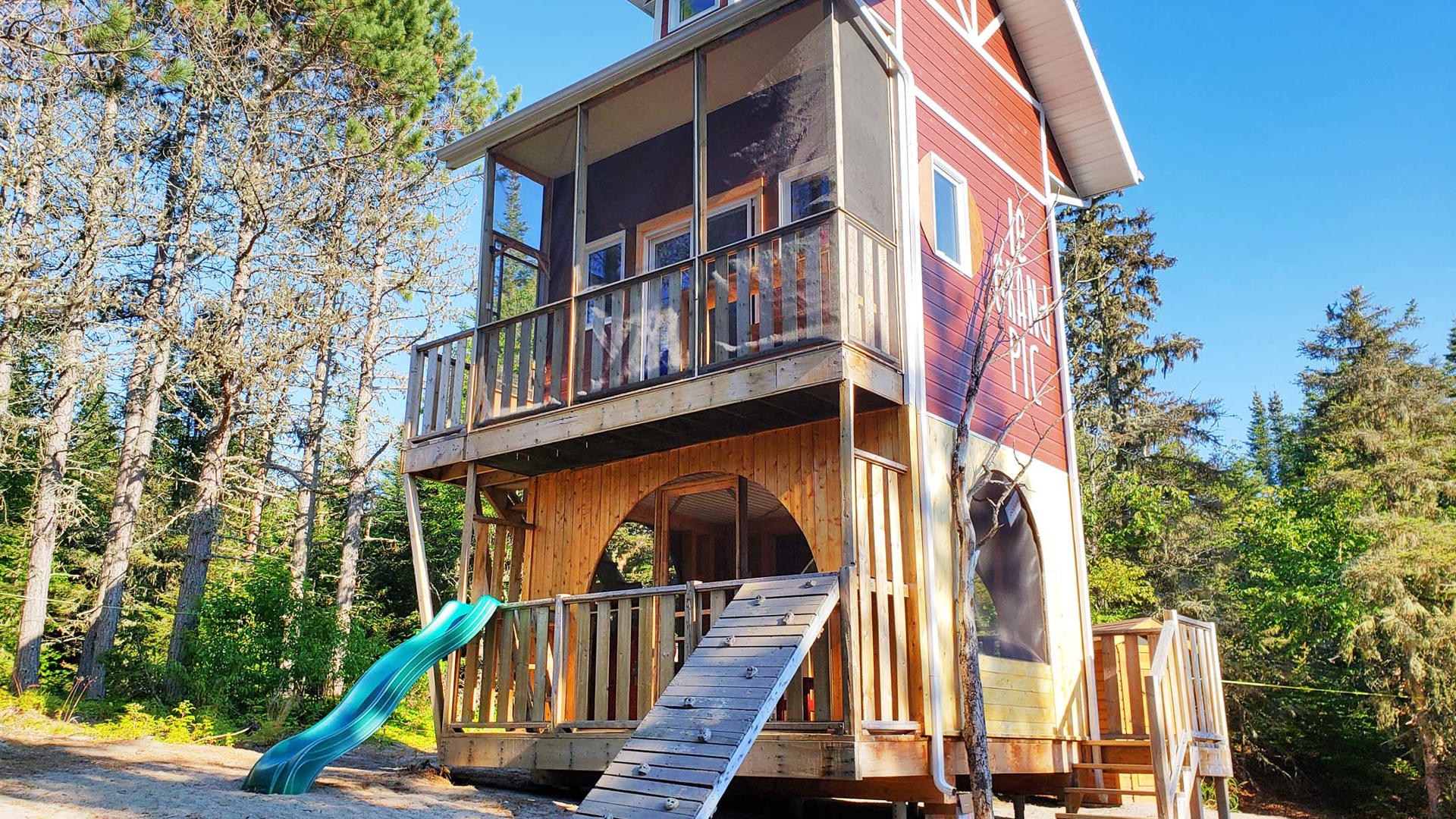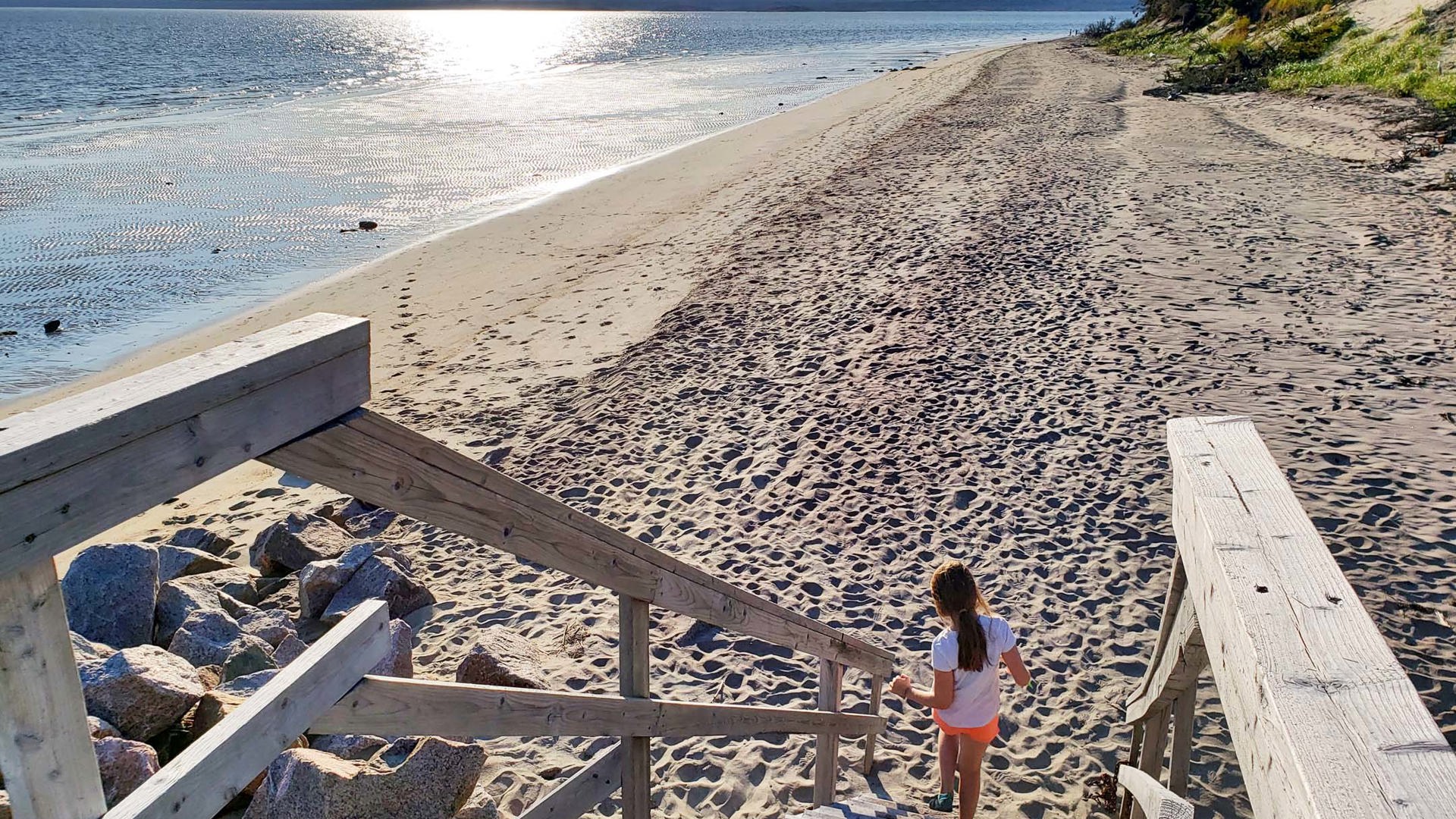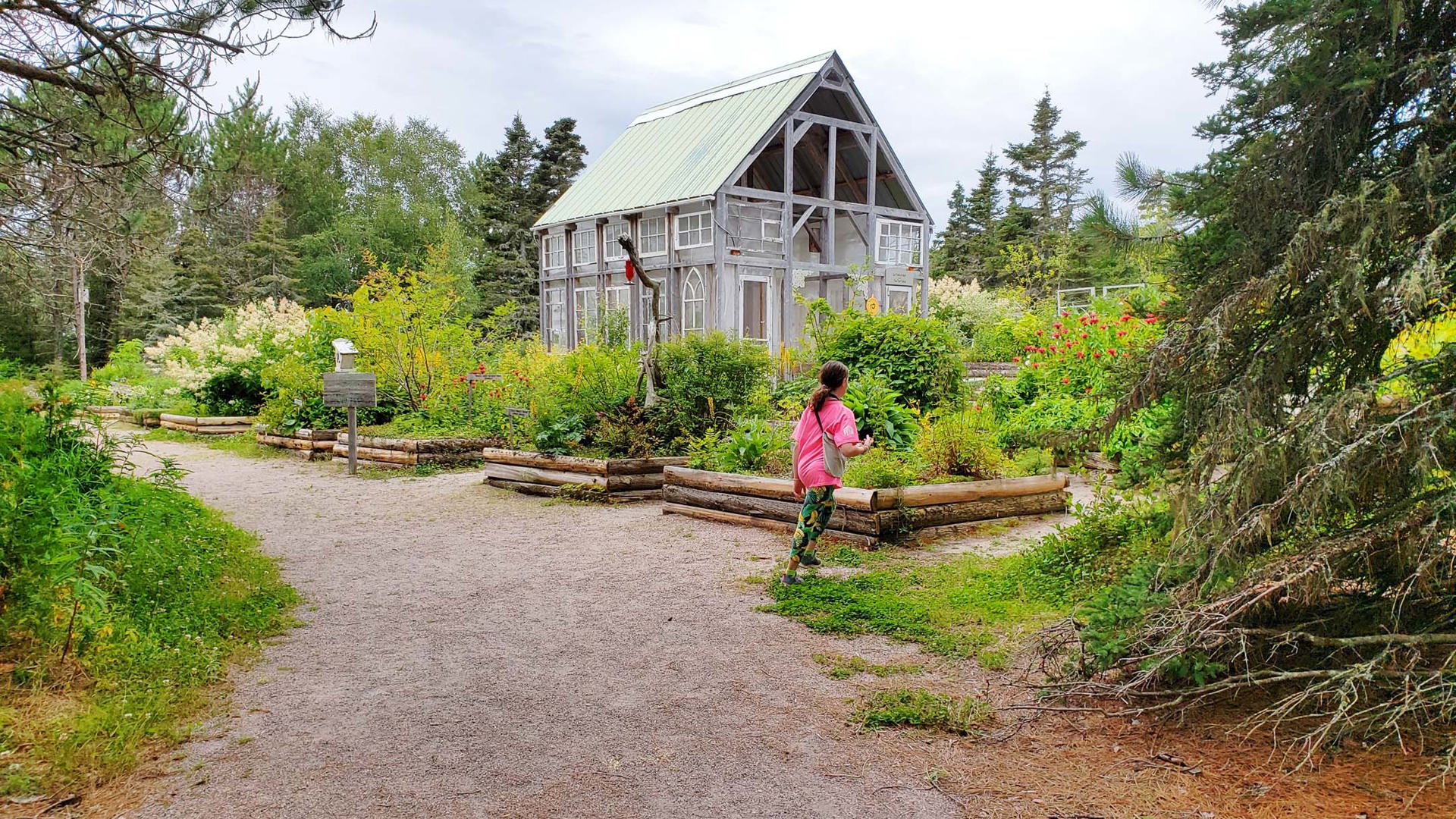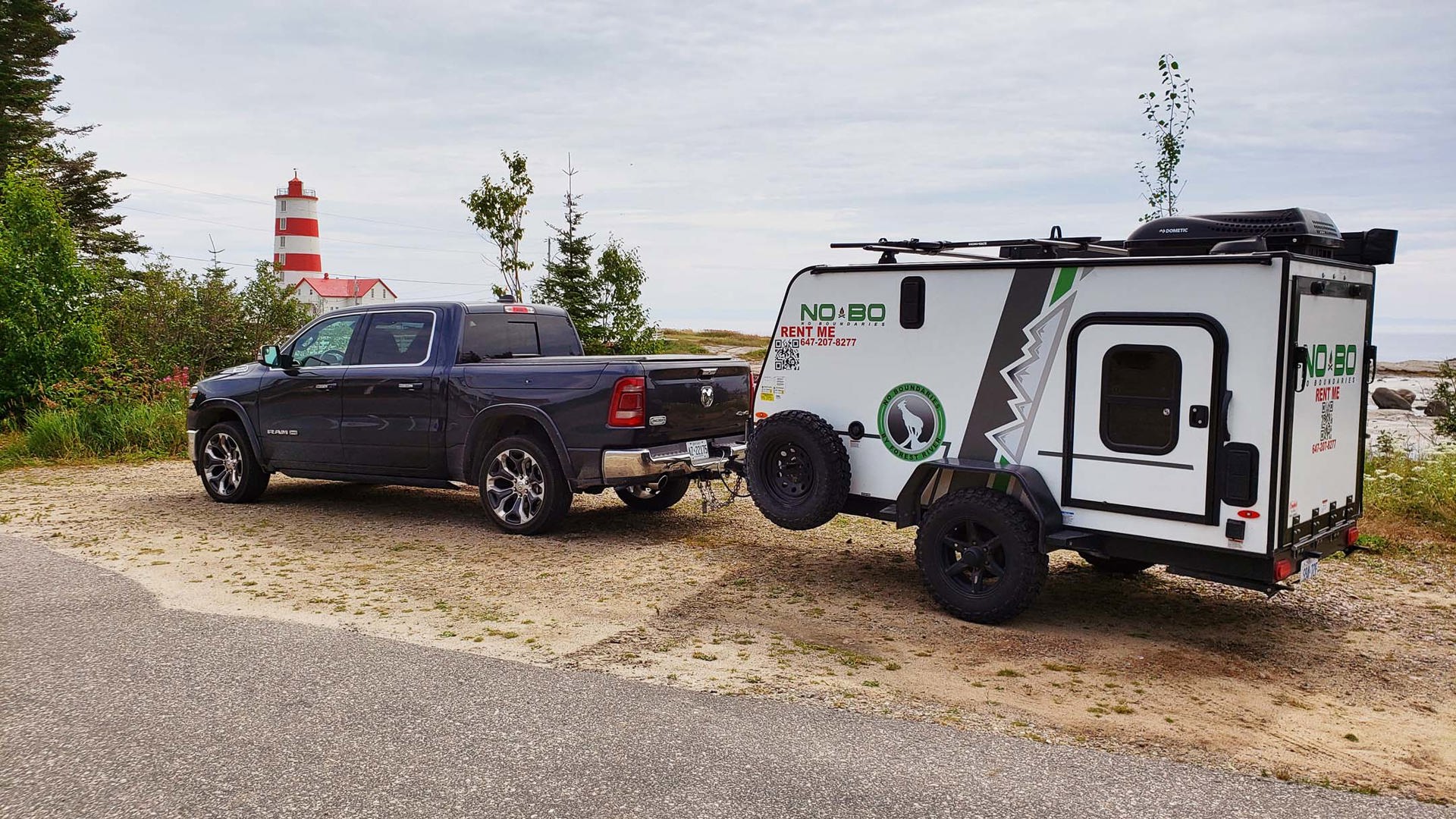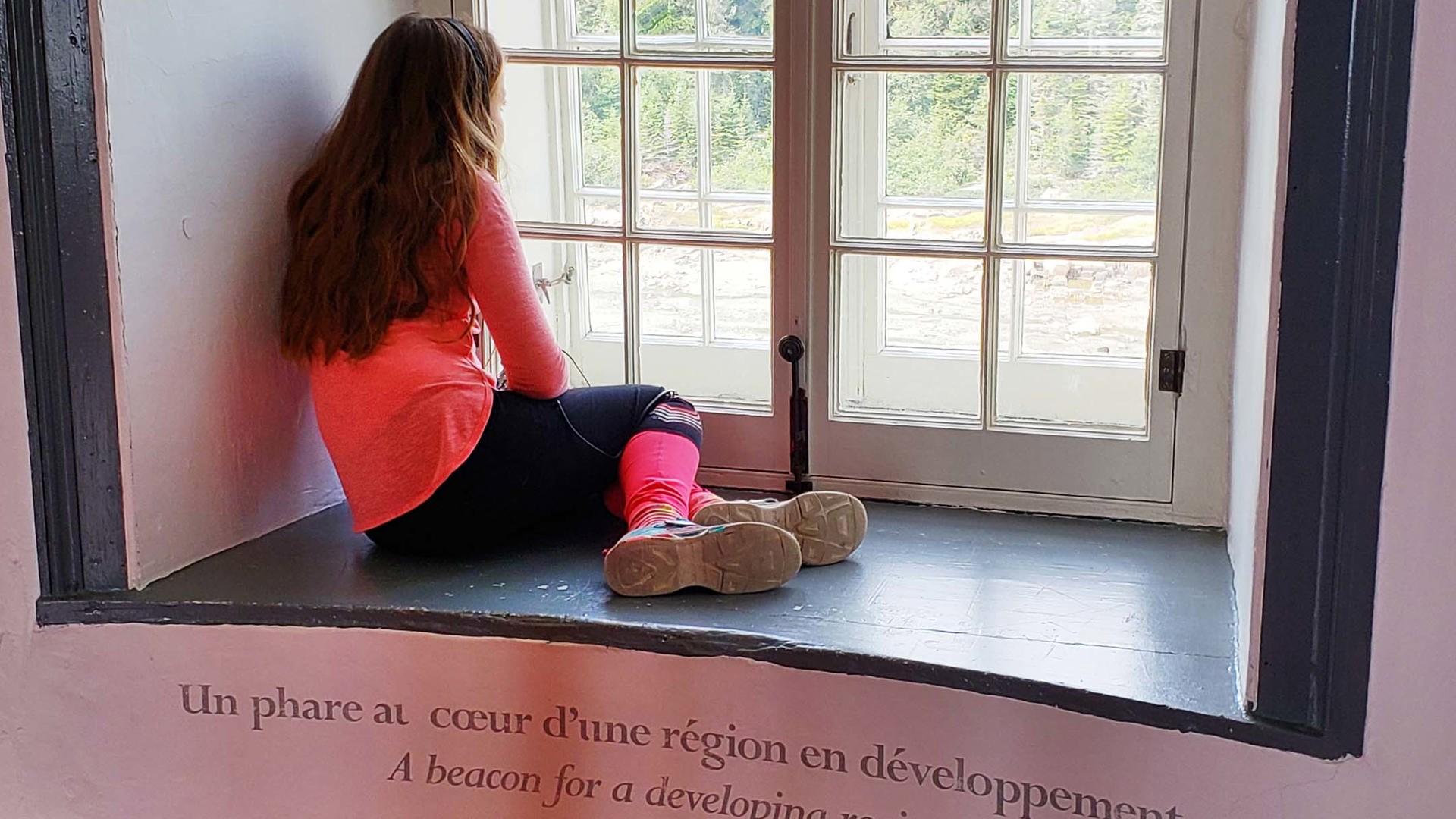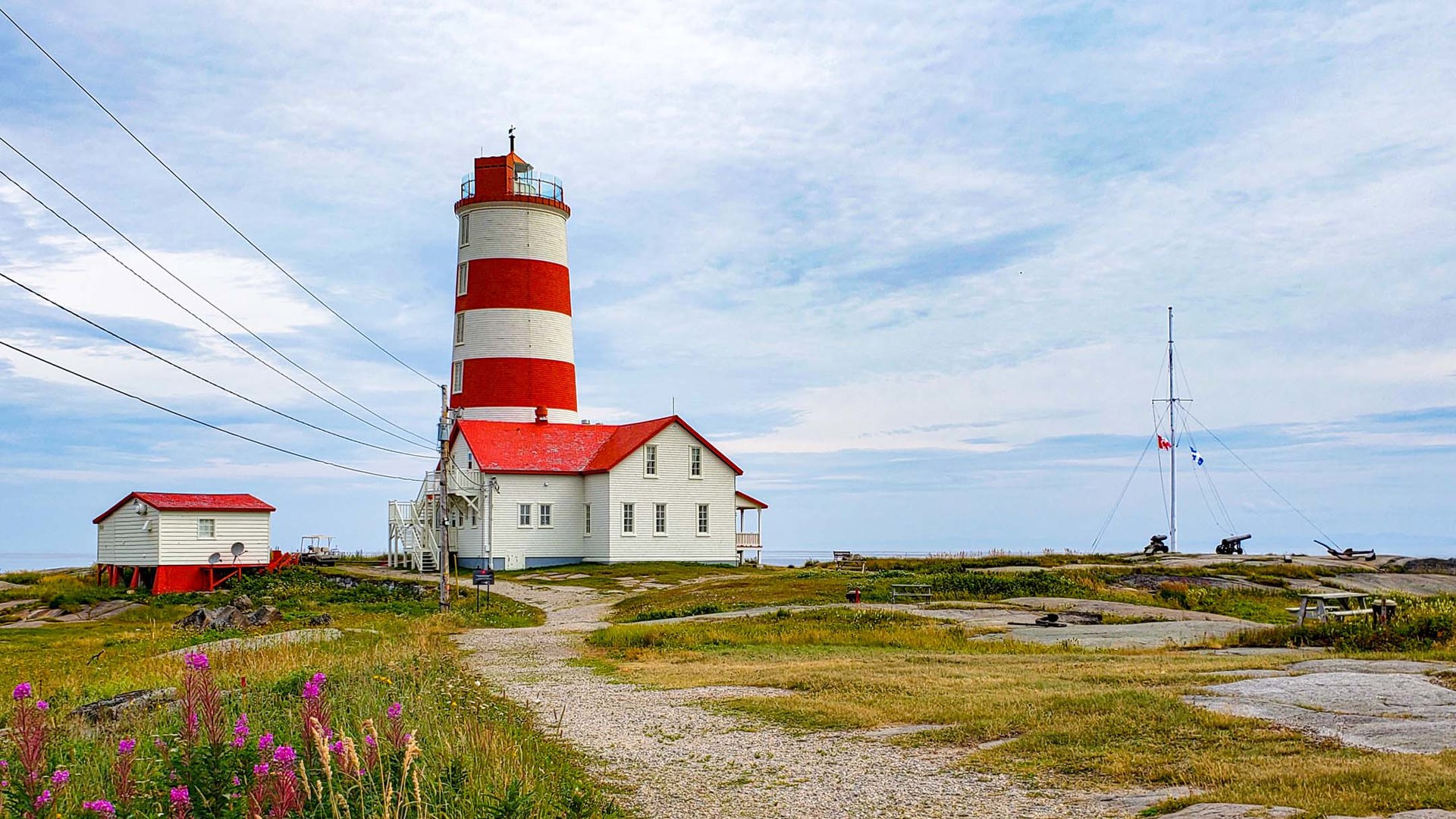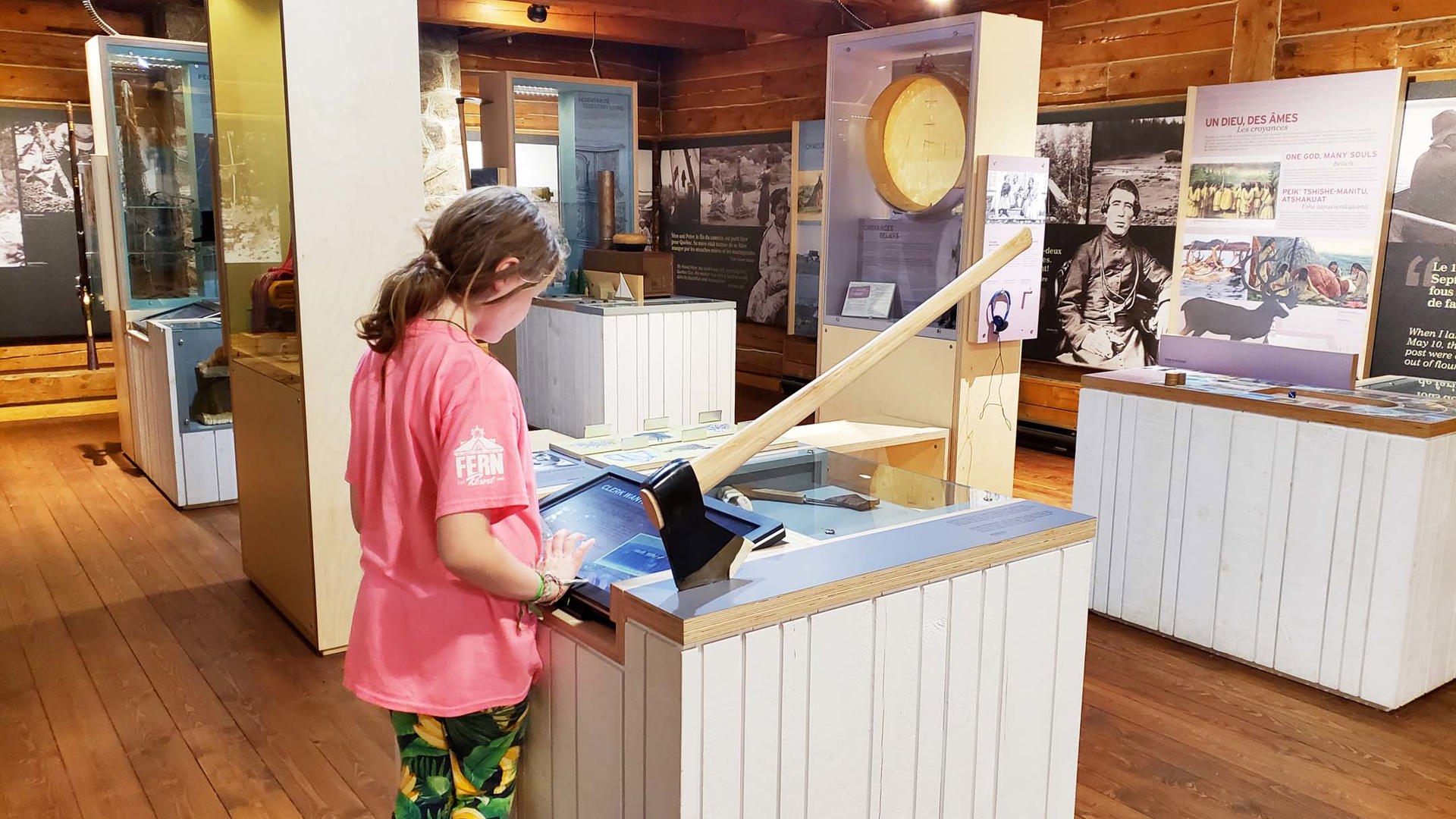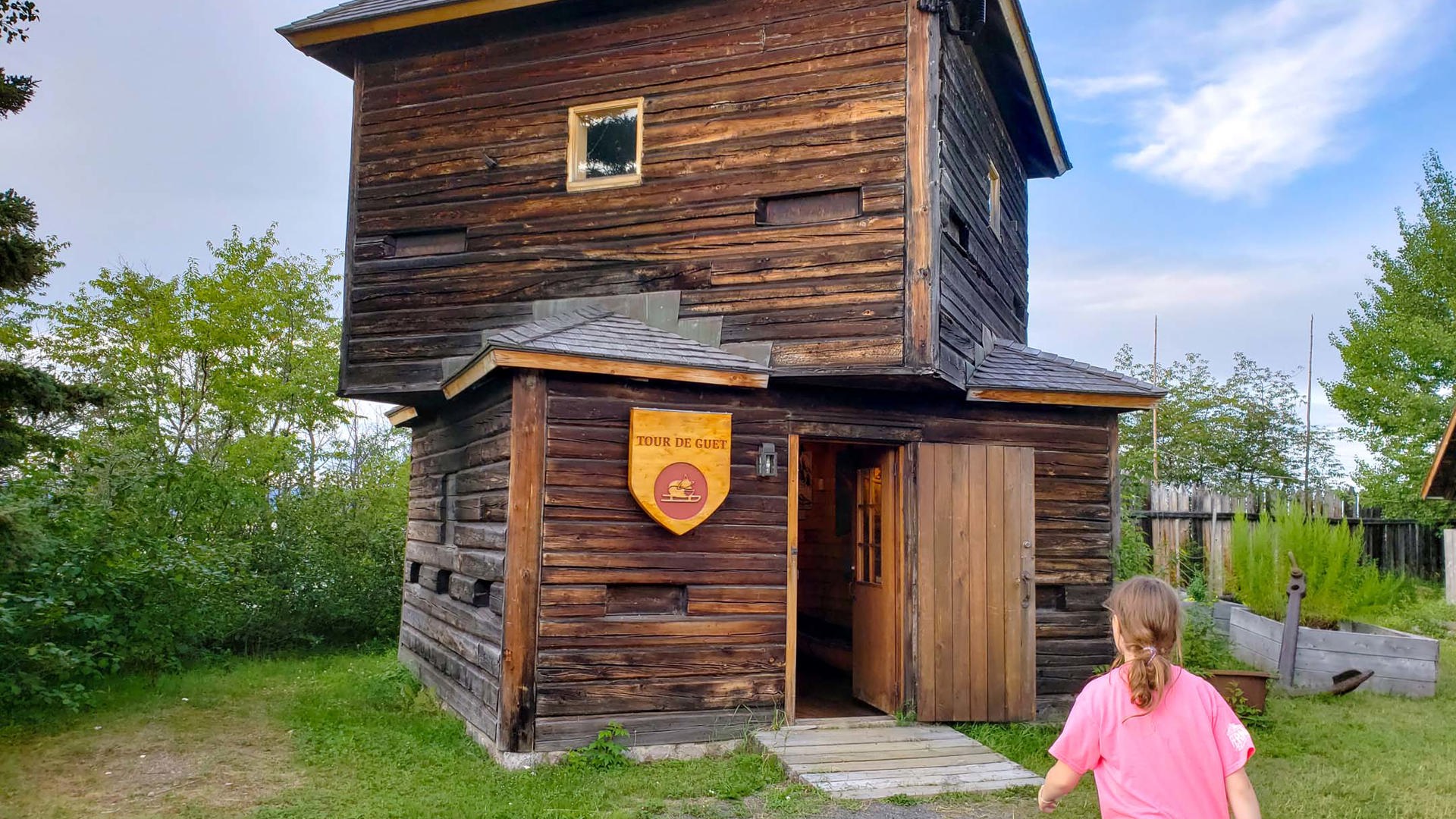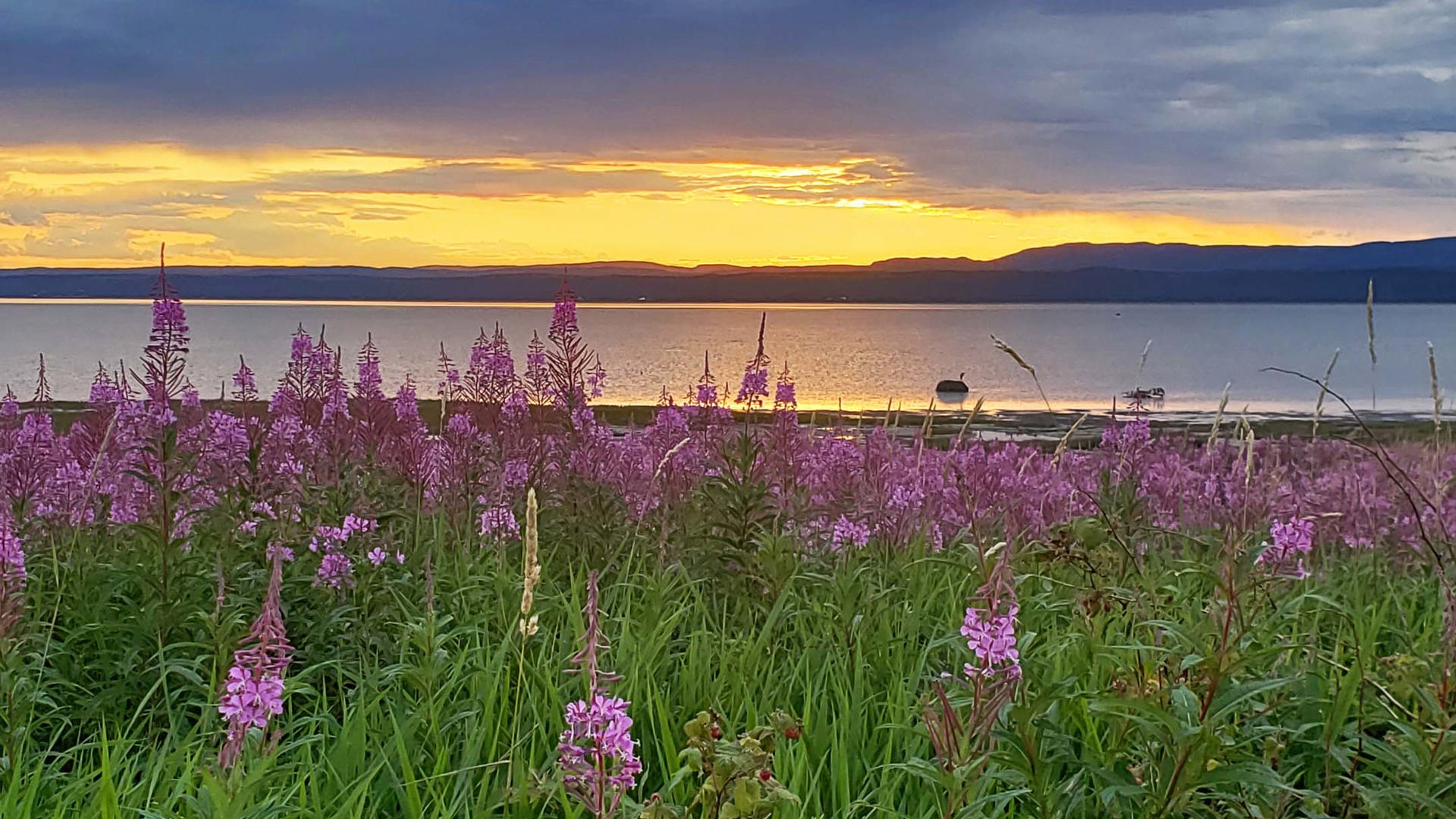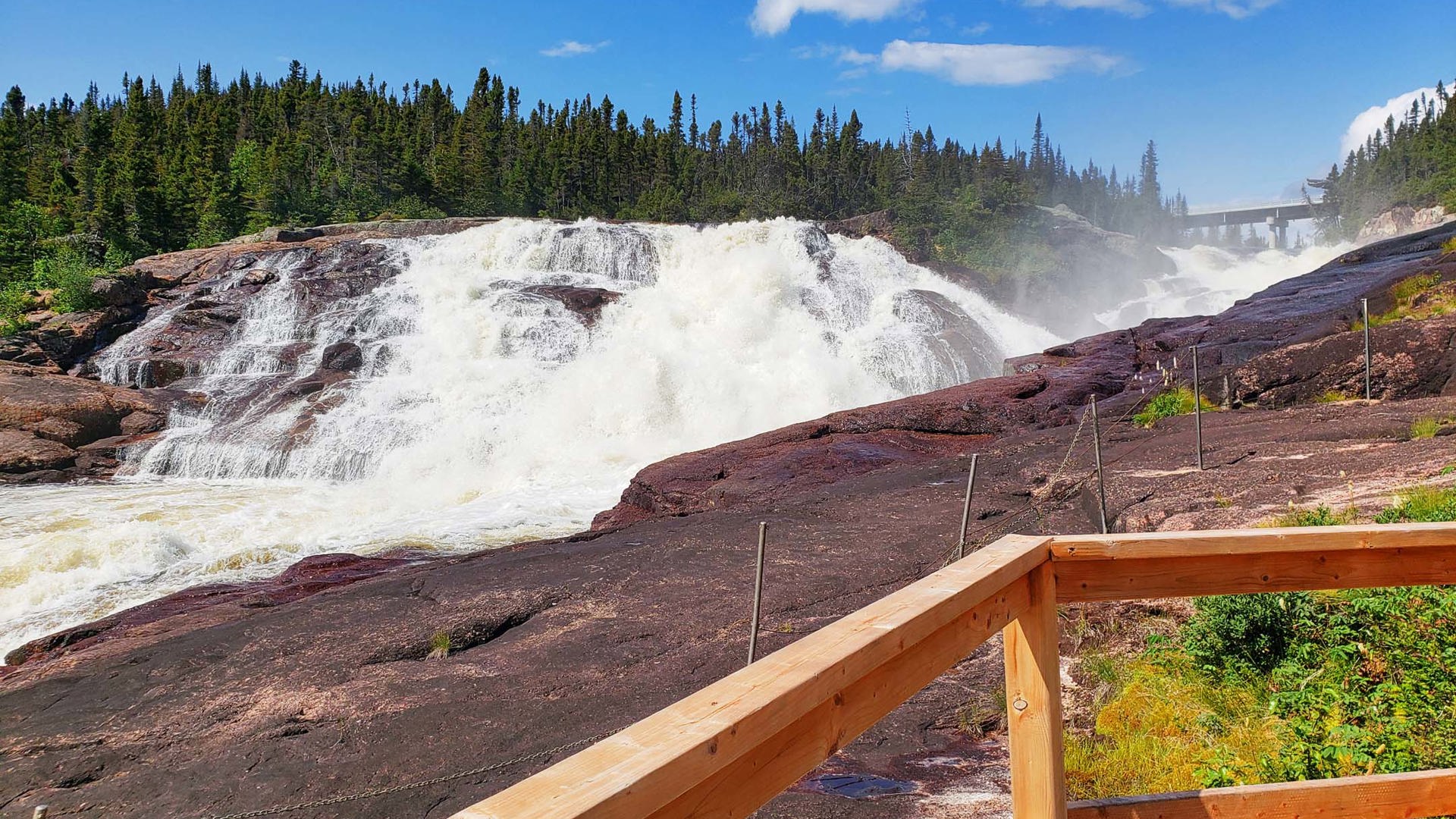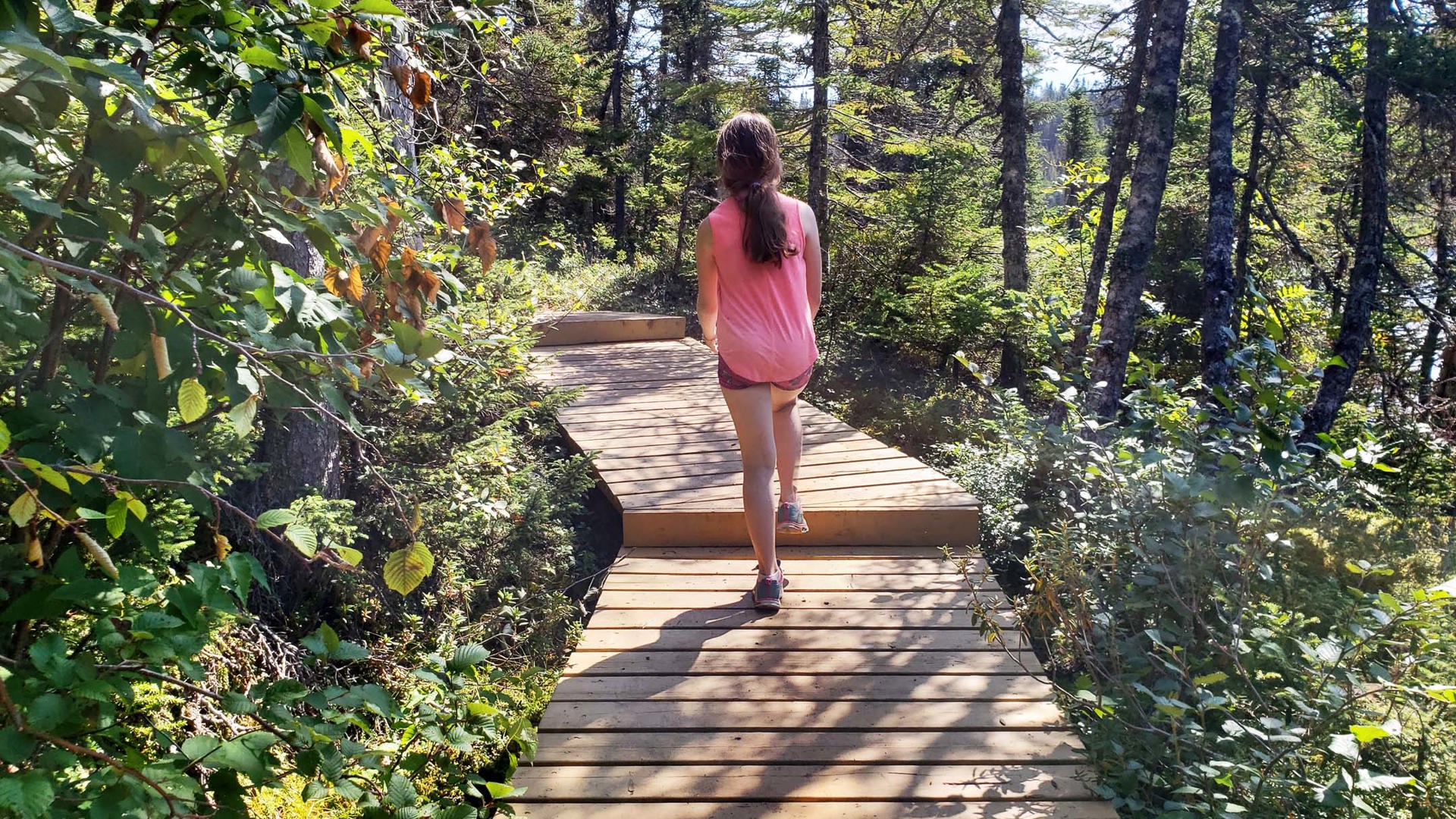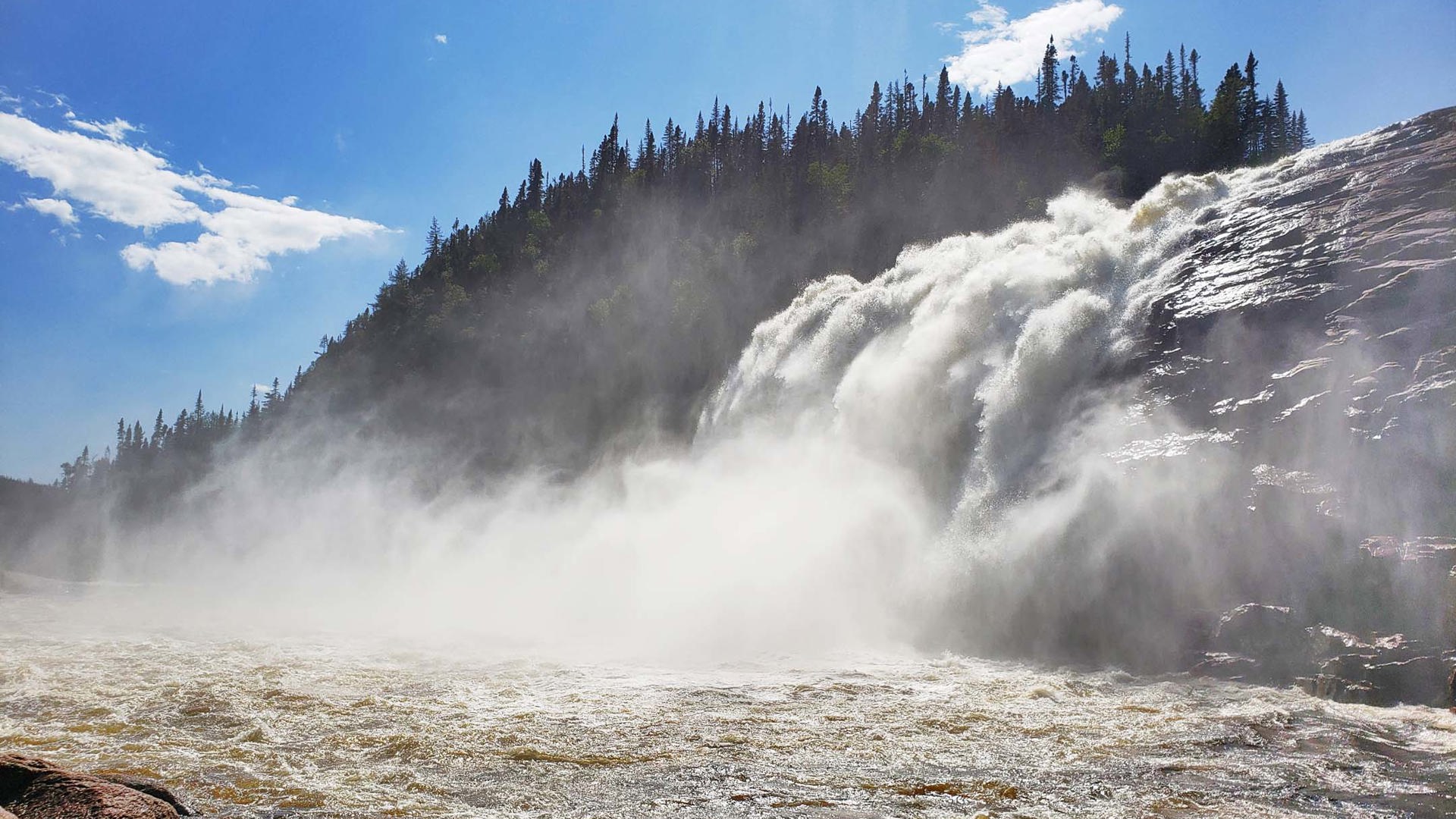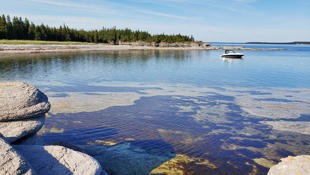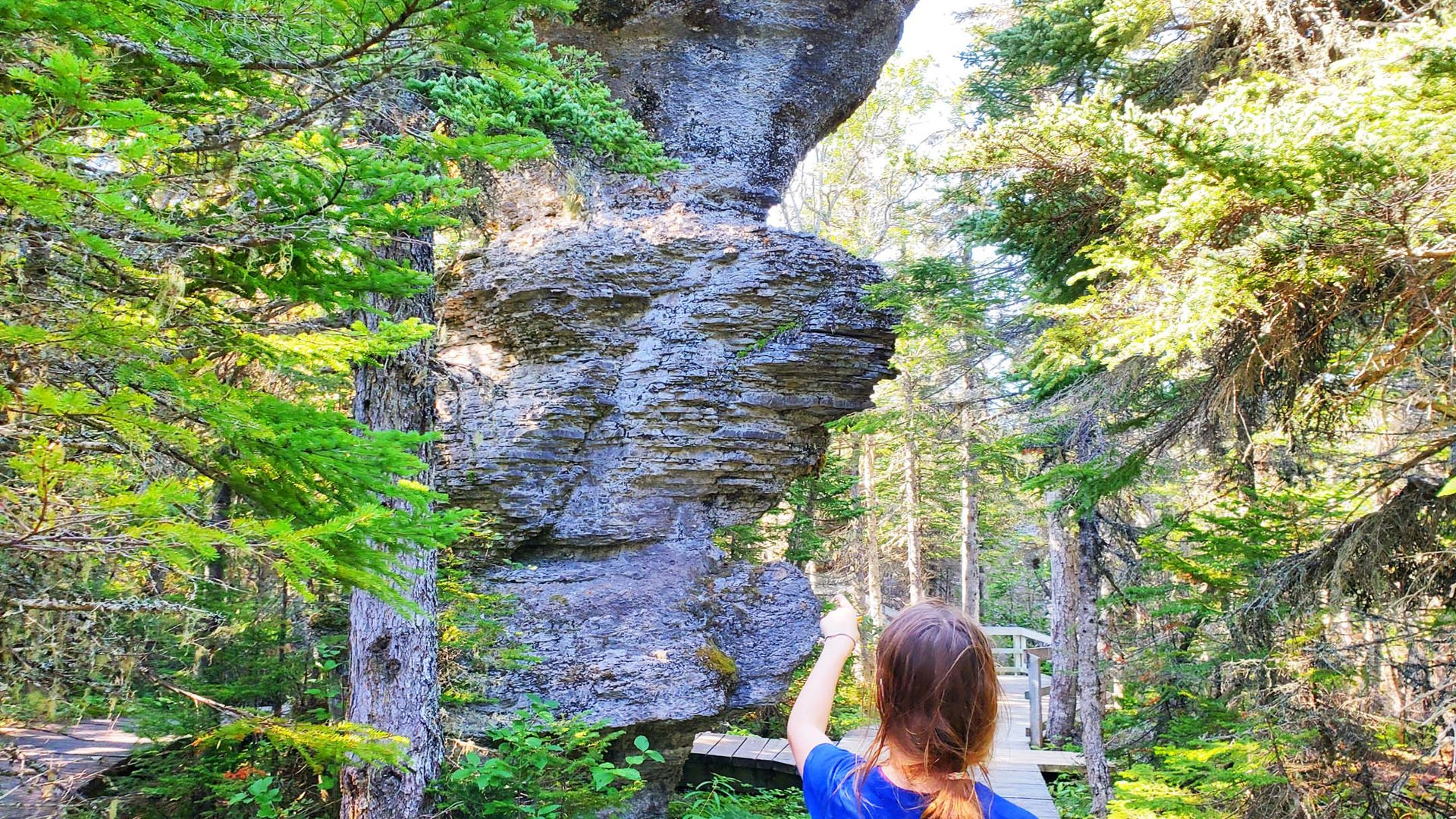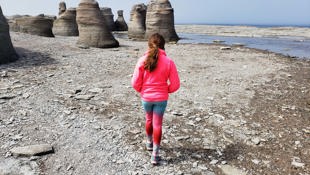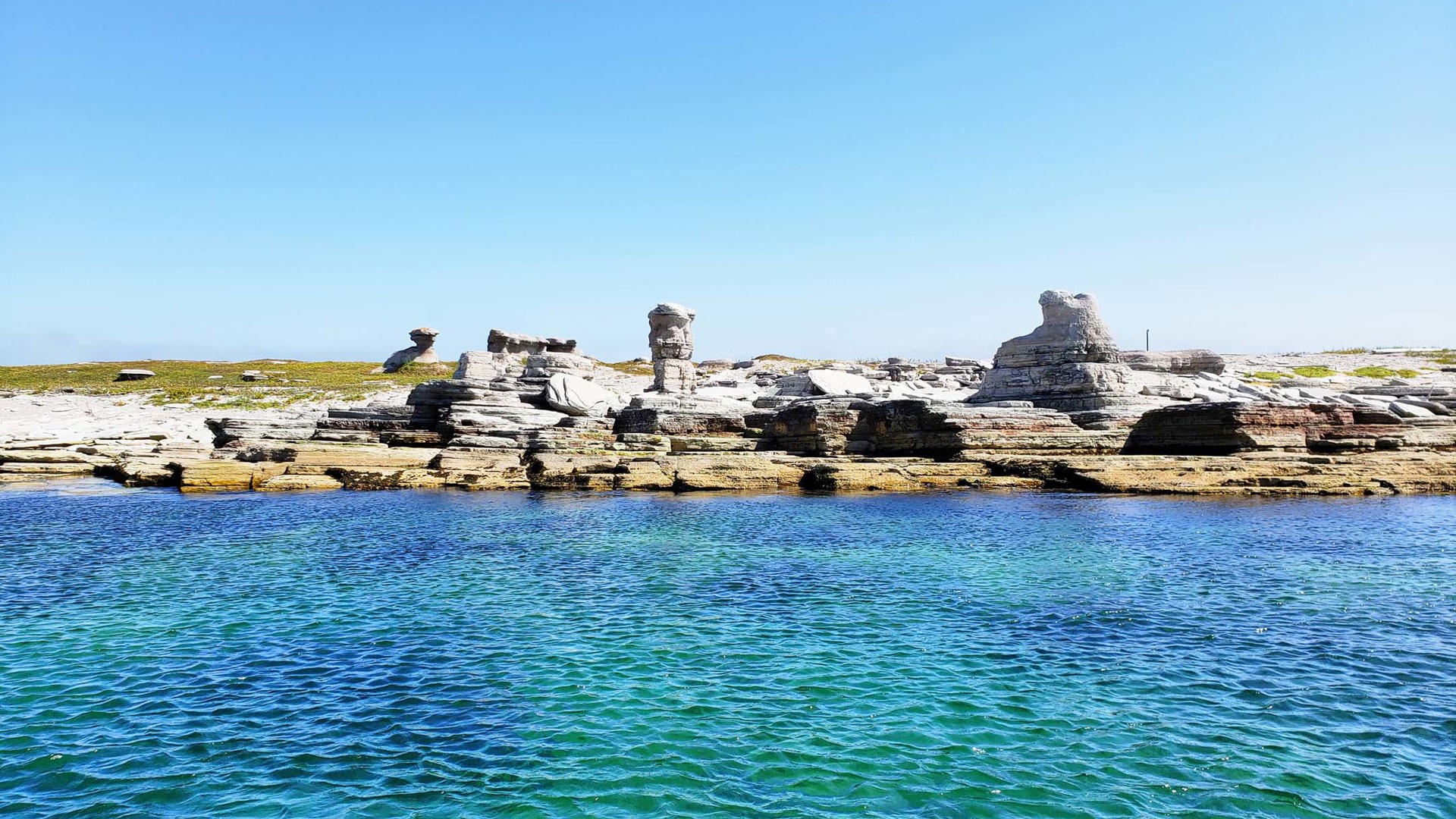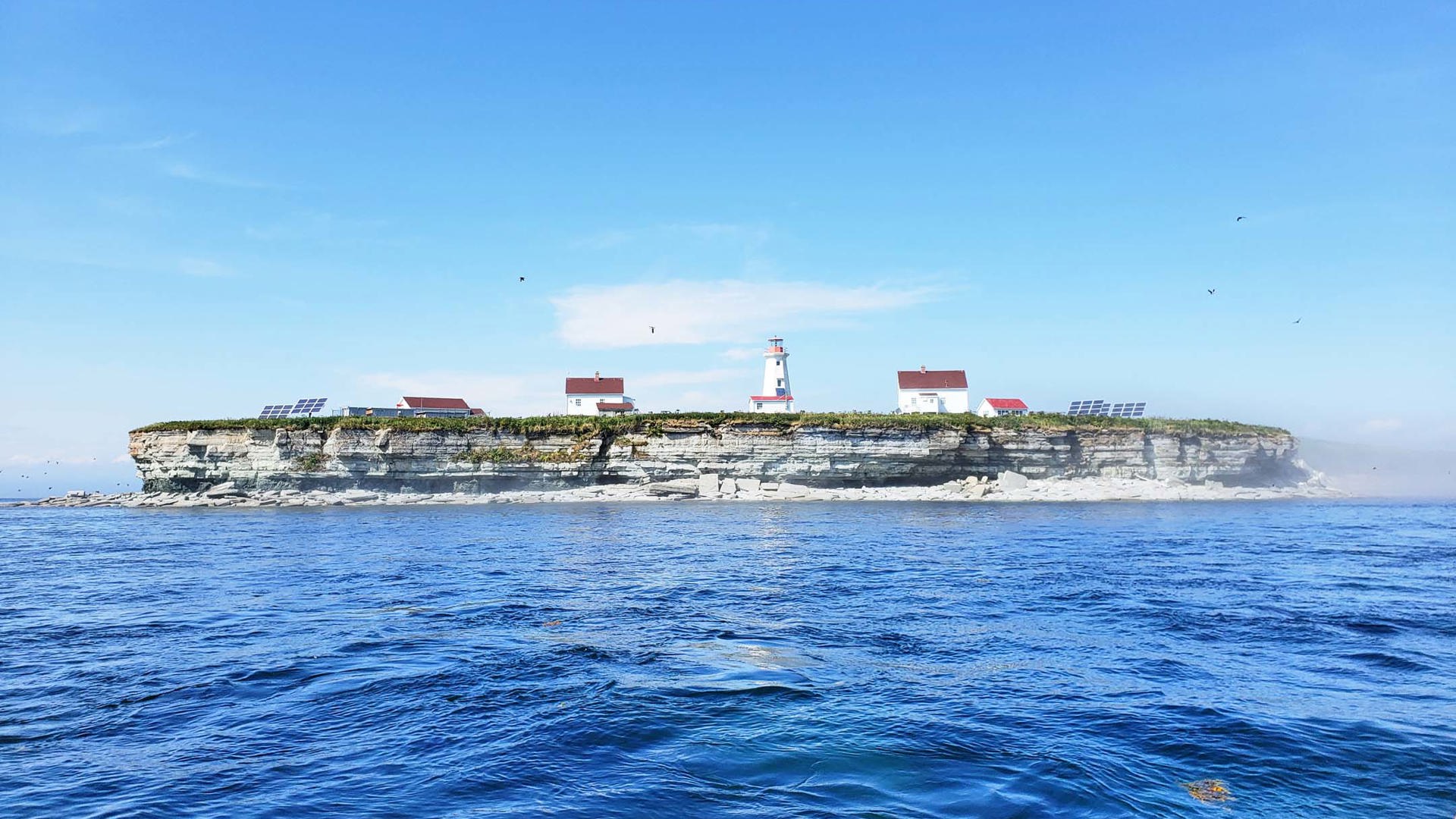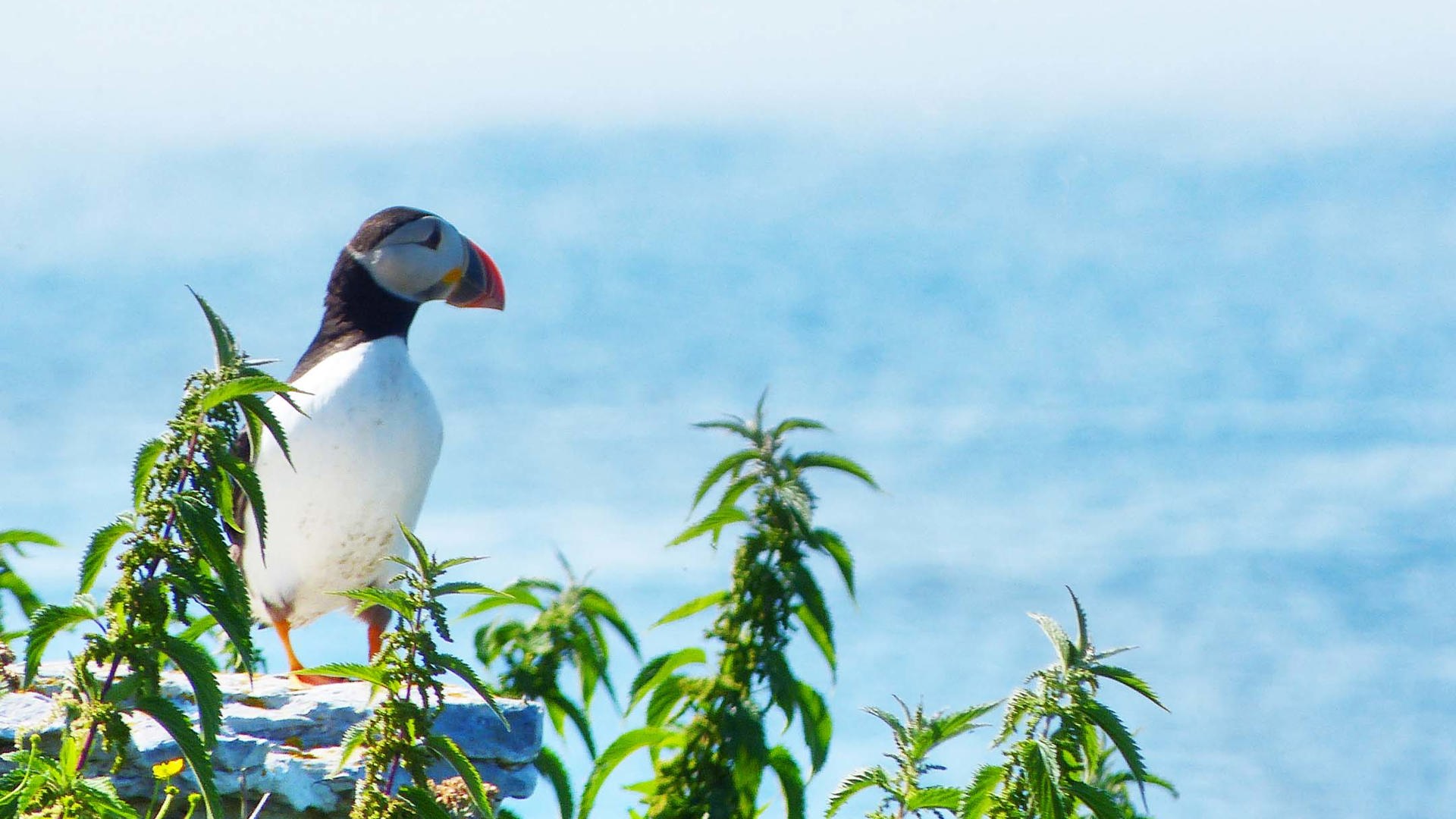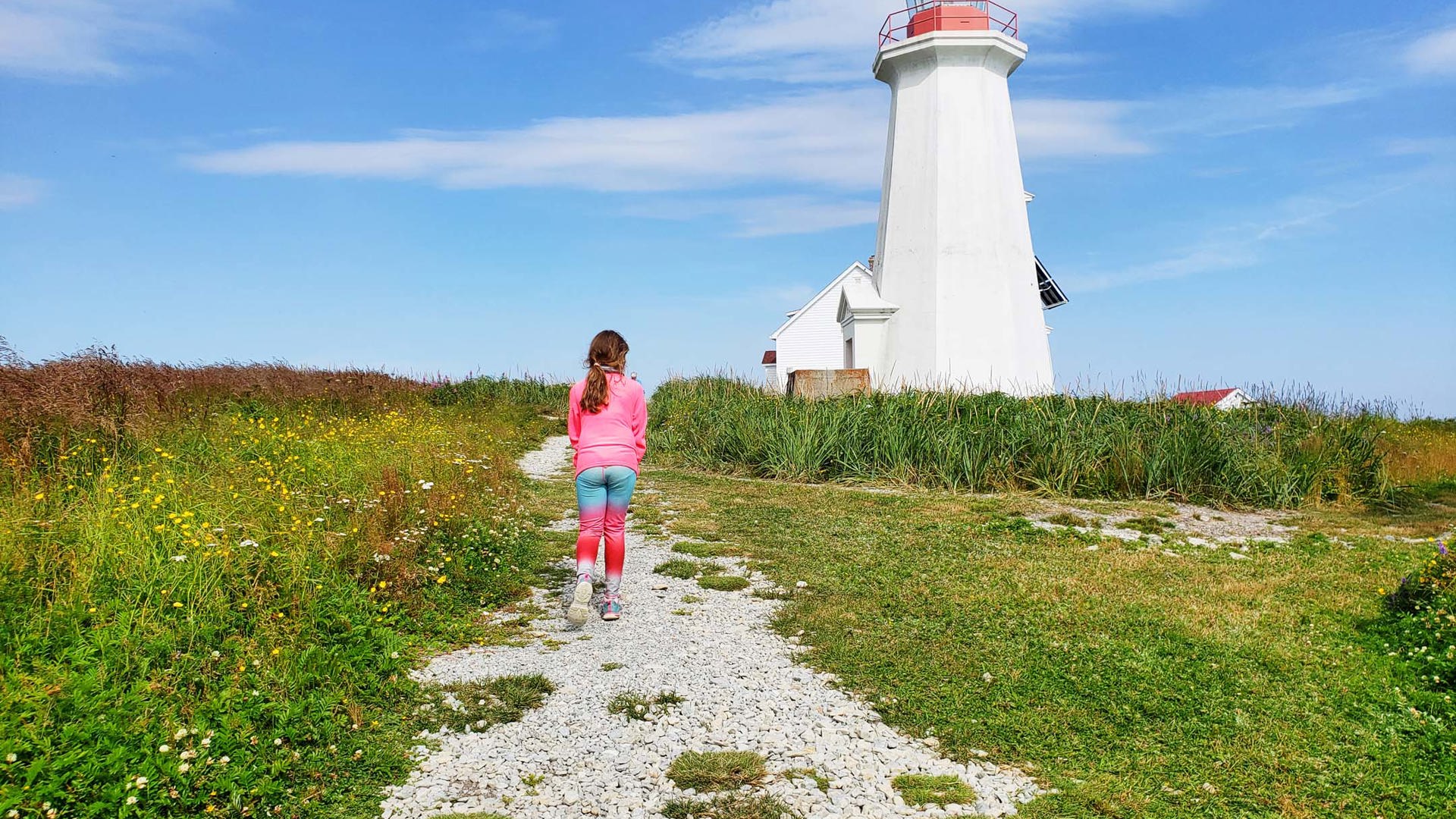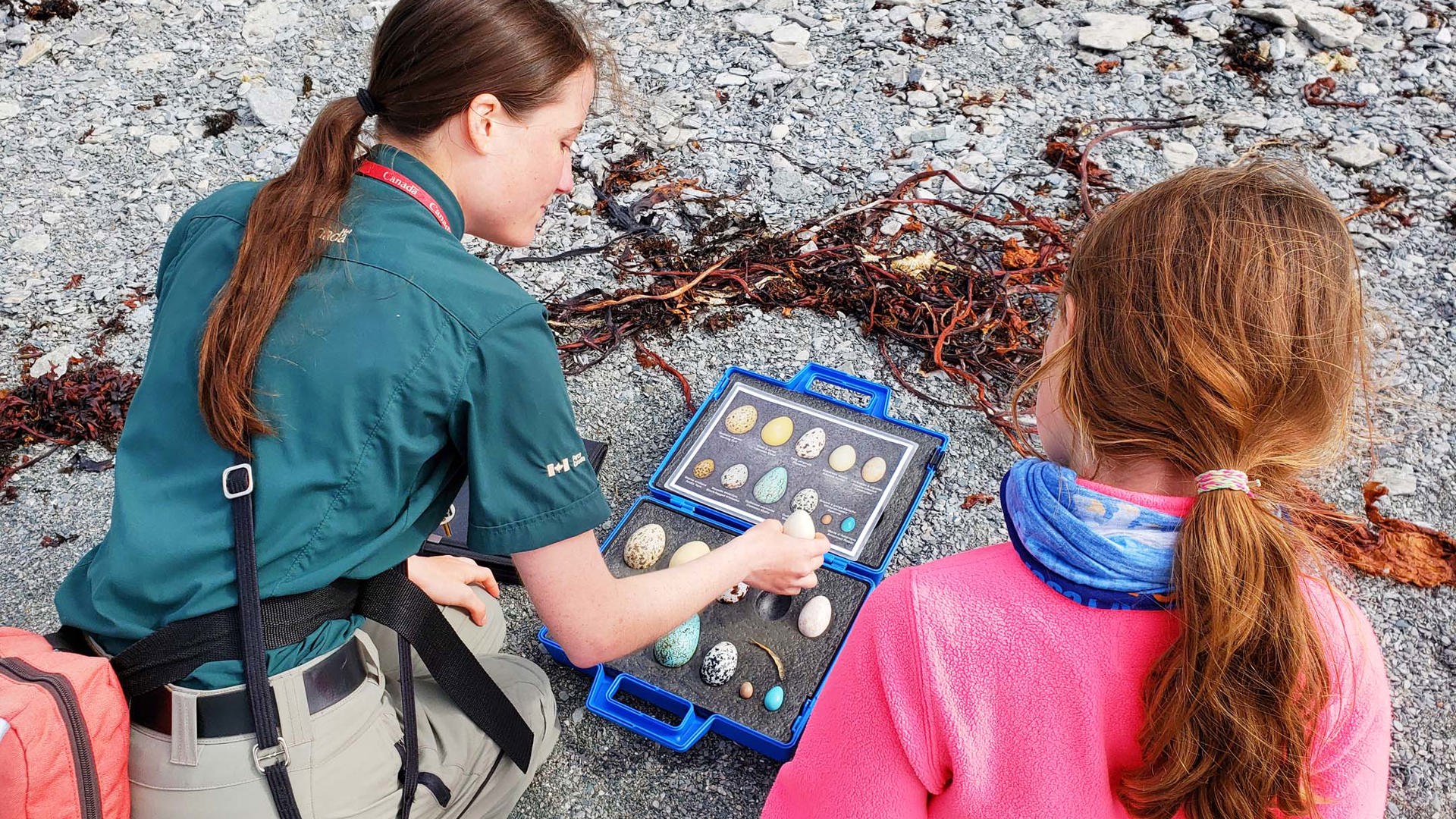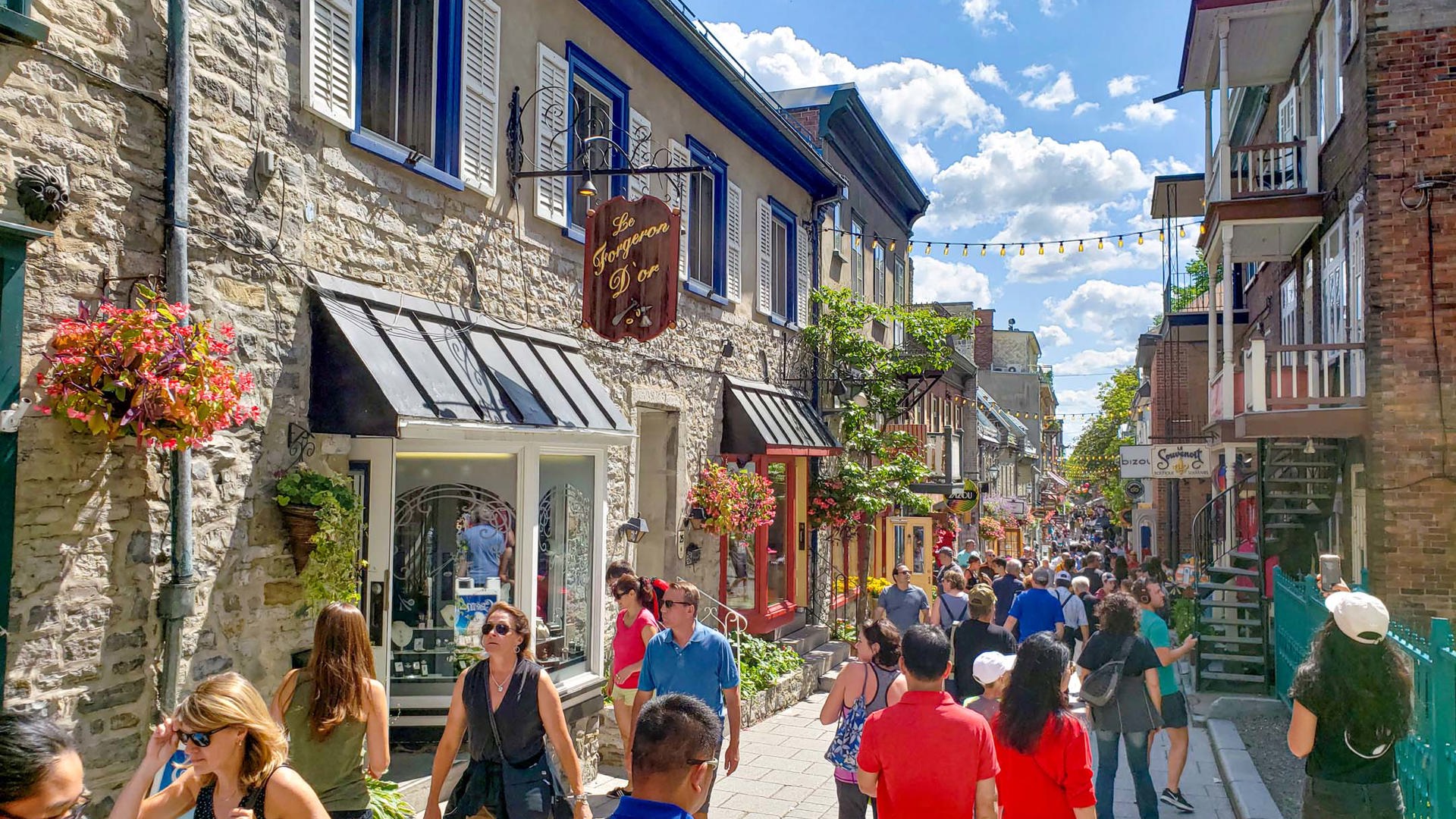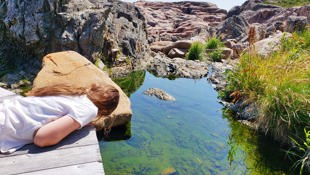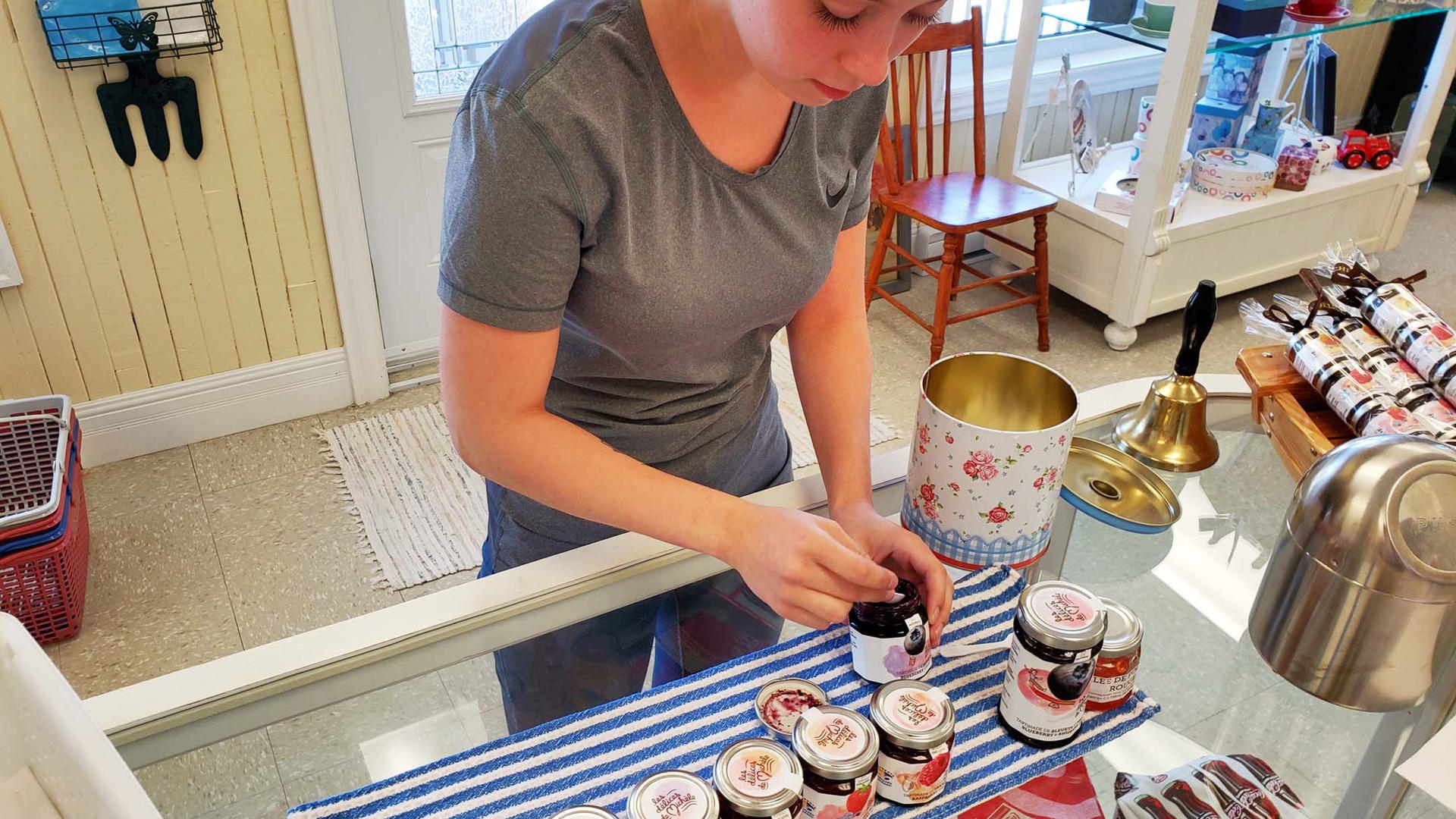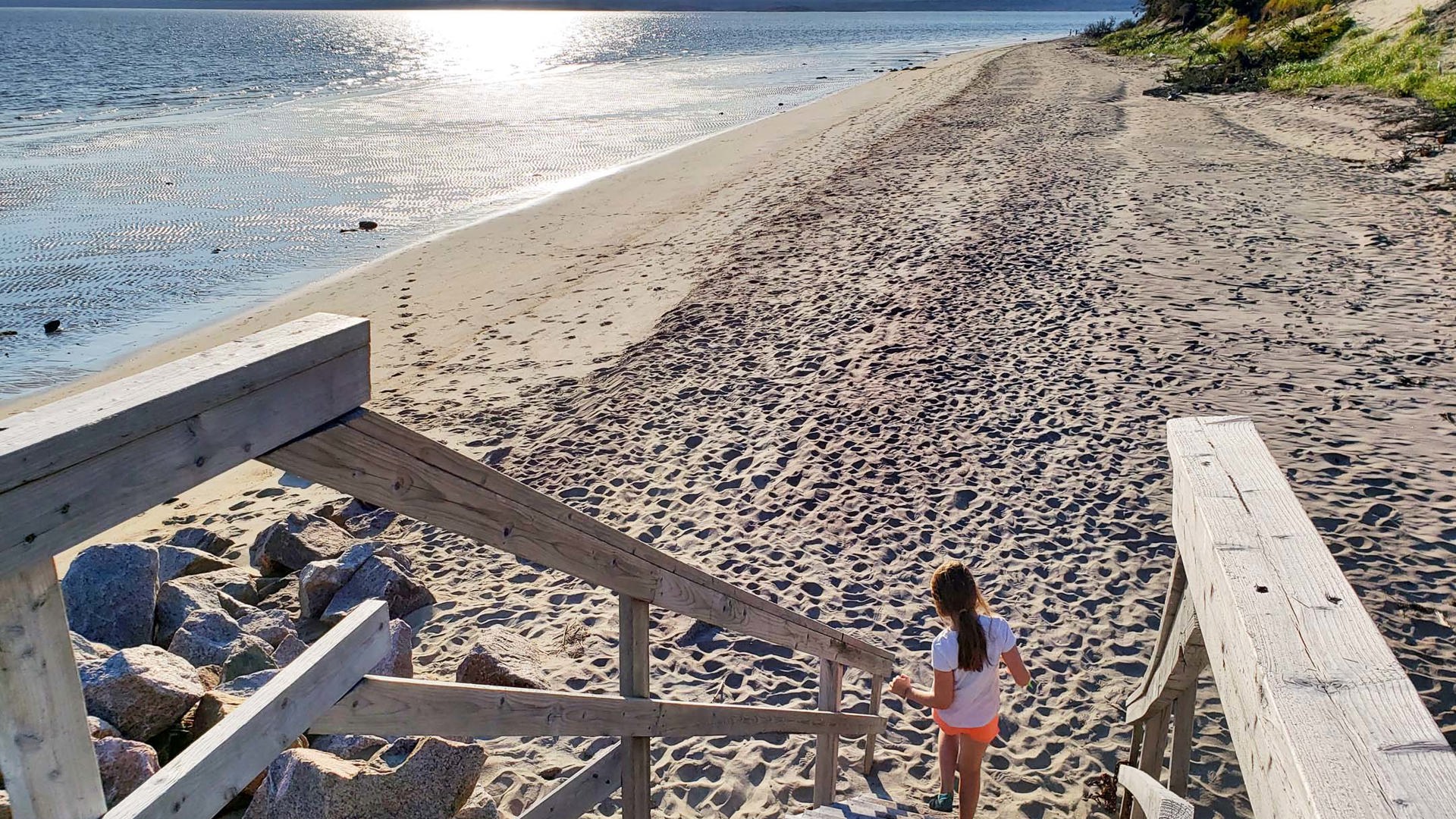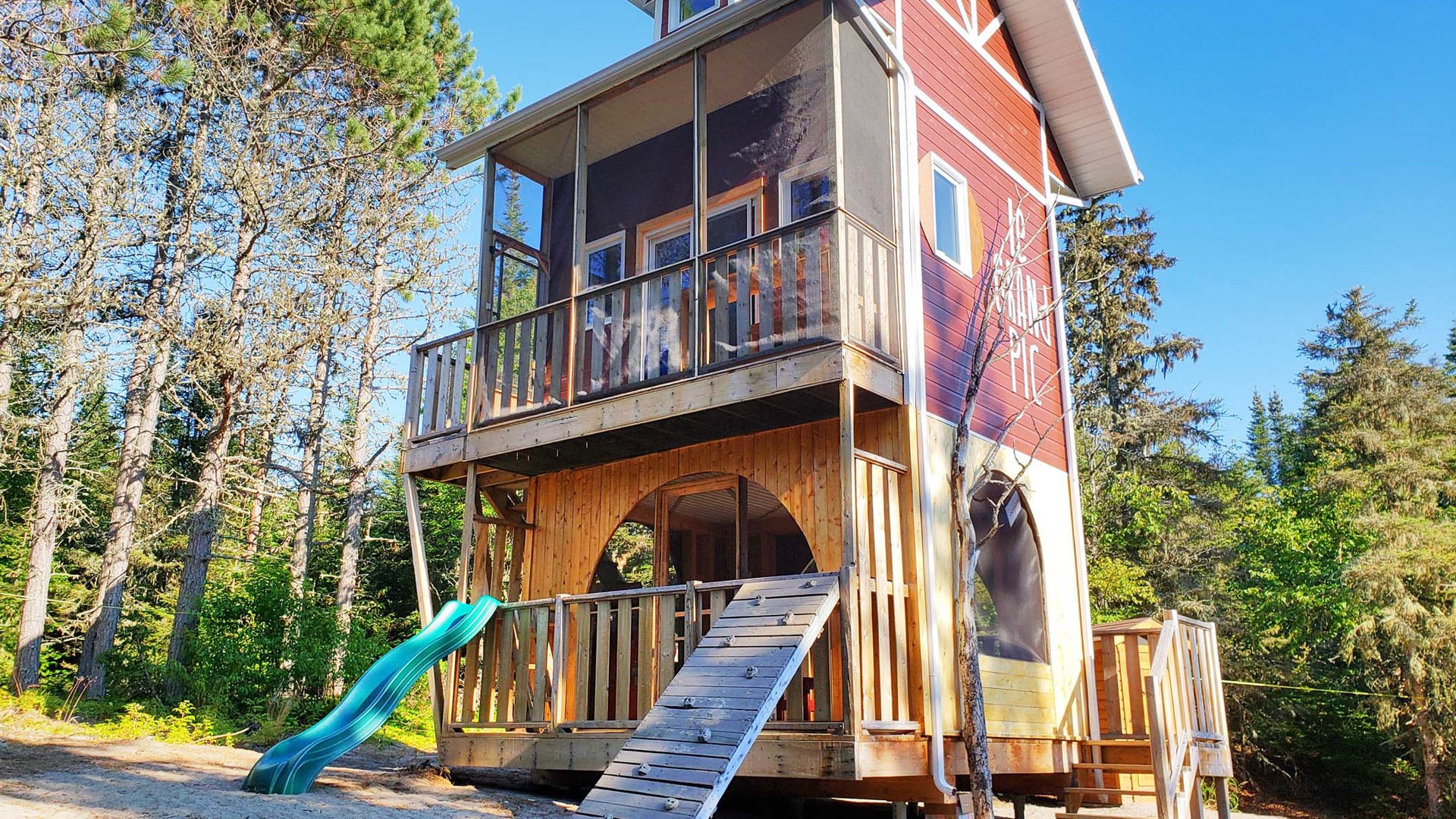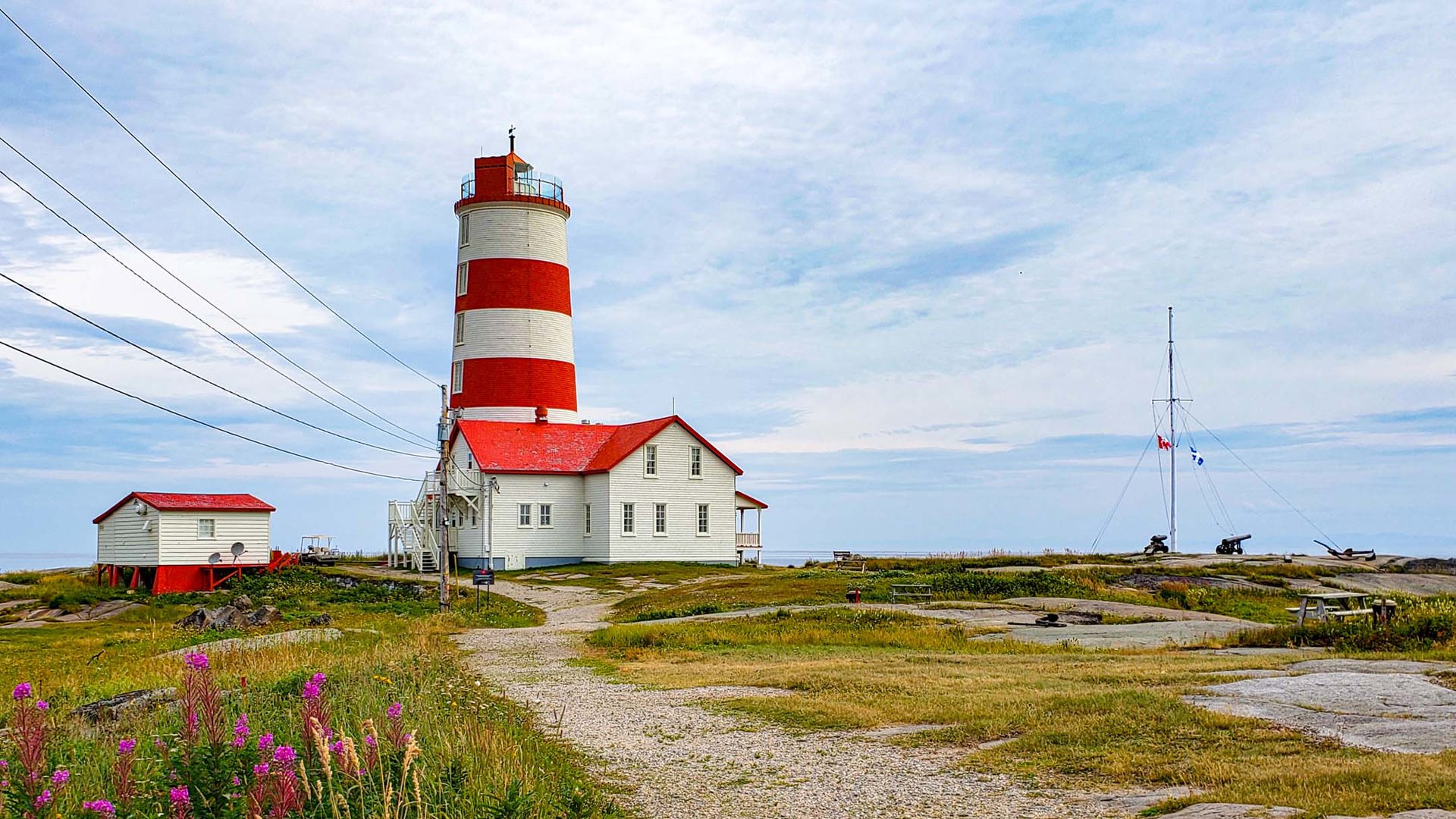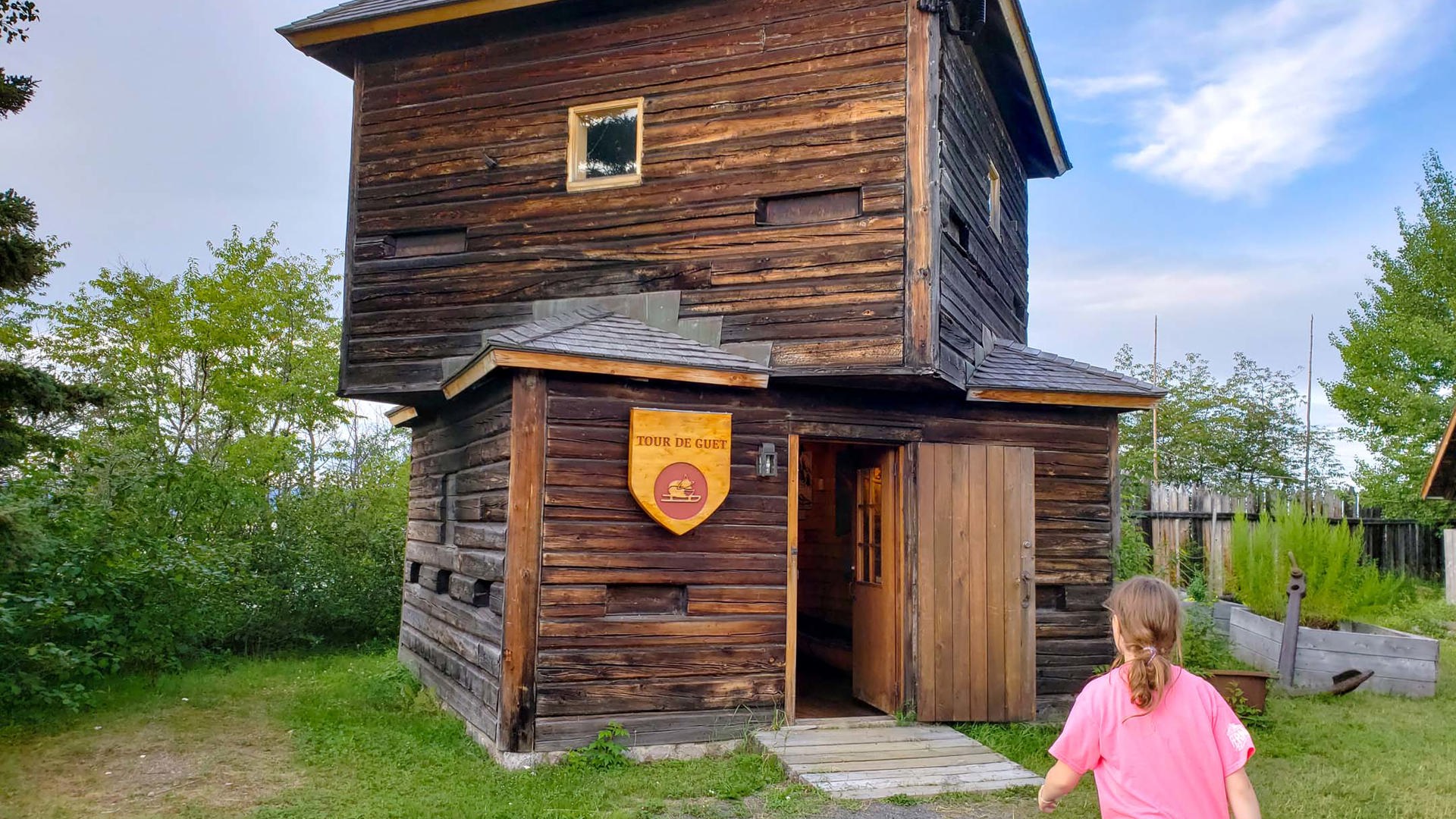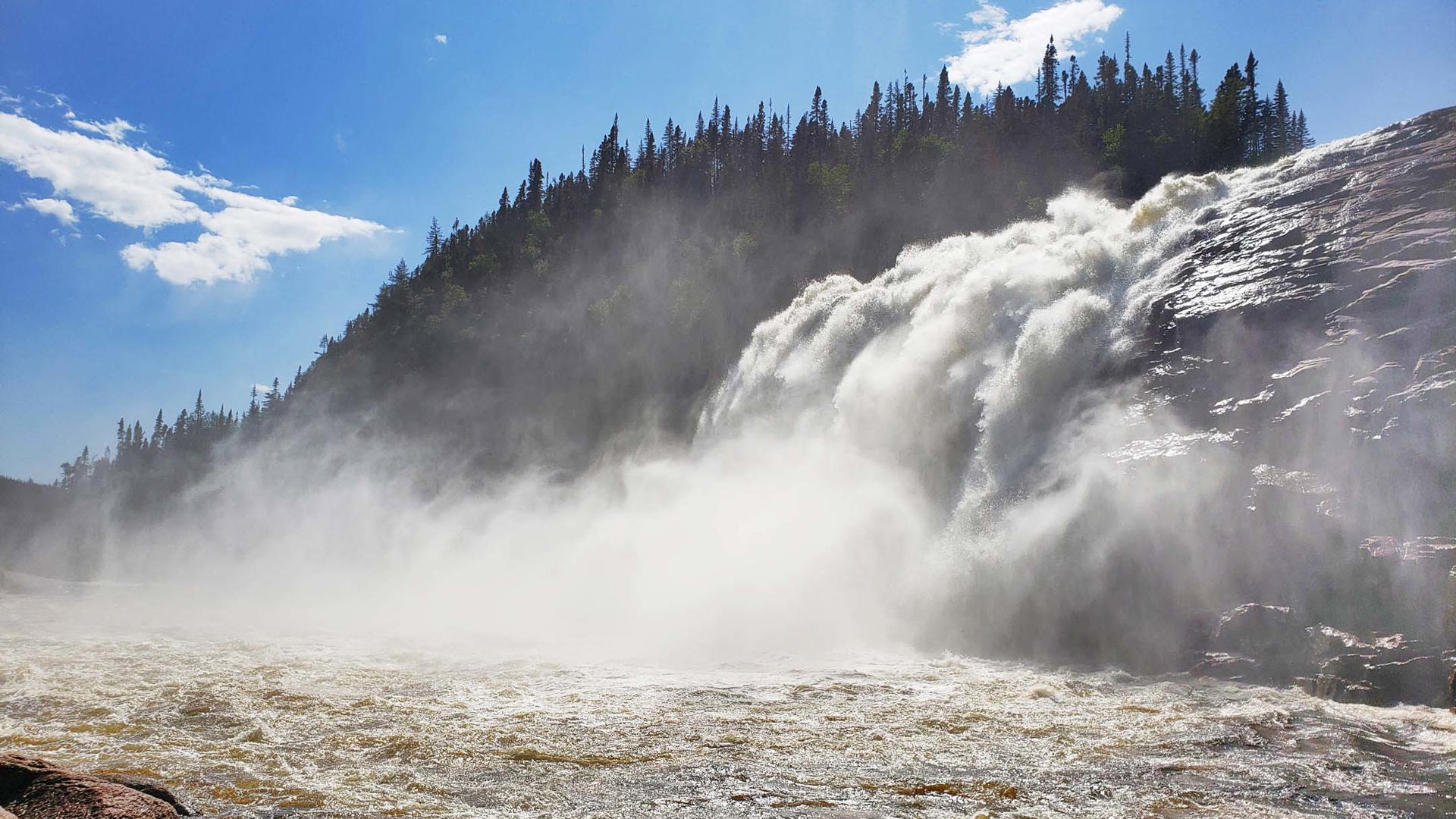Just when I think I’ve seen the full extent of Canada’s geological glory, I find myself staring 30 feet up at a woman’s face carved into limestone.
This sculpture is not the creation of humans. This is the methodic work of centuries of erosion, carved from the remnants of a prehistoric seabed thrust skyward out of the Gulf of St. Lawrence after the last ice age. And there are dozens more of them, together making up the largest group of such monoliths in the country, scattered across the islands of the Mingan Archipelago.
Two days after meeting the aforementioned monolith known as Madame de Niapisca, I’m walking amid a landscape so barren that it feels like another world. And a few hours after that, I’m ducking to dodge swooping puffins as they plunge into the sea looking for their next meal. On the way back to the mainland, seals and dolphins play in the waves. Here, there are many more of them than there are of us.
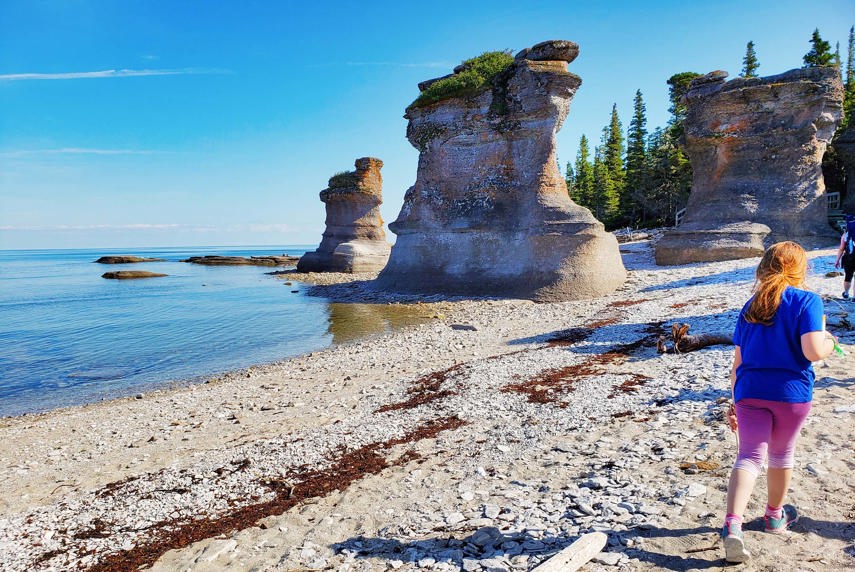
The reason? There aren’t many people here, period. This is one of the most remote areas of Canada reachable by road. It takes nearly 11 hours over 850 kilometres to reach the regional hub of Havre-Saint-Pierre from Quebec City – or more than 1,100 km from Montreal, or closing in on 1,700 km from Toronto. This is one road trip that’s not to be taken lightly.
Motivated by the promise of adding to our Xplorers collection – Mingan Archipelago is a National Park Reserve and is one of the most far-flung participants in this Parks Canada activity program for kids – my daughter and I loaded our things into the opulent 2019 Ram 1500 Laramie Longhorn and the adorably diminutive in comparison Forest River No Boundaries 10.6 toy hauler trailer, and we set off northbound along Quebec’s Route 138.
Is it worth the effort? For those who appreciate nature and an escape from the hustle and the summer heat: the answer is absolutely, unequivocally yes.
Exploring an Ancient Sea Floor
There are over 1,000 islands and islets in Mingan Archipelago, 10 of which are accessible with Parks Canada facilities such as wharfs, hiking trails, and campgrounds, so it would take a long time to run out of things to explore. We journeyed out to four islands over two days via two separate boat excursions and found distinct features to appreciate about each of them.
Île Quarry
Our first excursion took us to two of the central islands in the western group, Île Quarry and Île Niapiskau, and was organized out of Havre-Saint-Pierre by Services Maritime Boréale.
Île Quarry is an ideal place to start because it looks completely unremarkable on approach and offers little hint of what’s hiding on the other side. A 20-minute boardwalk hike across the boreal forest that covers the middle of the island eventually opens to a pebbled beach – where walking on the rocks sounds a lot like playing a xylophone. In fact, the Xplorers activity booklet encourages kids to make a lithophone out of rocks and play music with it right there on the beach. My daughter happily did so and shared her songs with the many families of sandpipers that were otherwise unperturbed.
The largest cluster of monoliths is a little further out to sea here, which means that access to them depends entirely on where the tide sits when you arrive. The tide was coming in rapidly and we would have had to wade to reach them during our visit, so we couldn’t venture too close. But it still made for an excellent introduction to the geology of the islands.
Île Niapiskau
The monoliths of Île Niapiskau are both the most impressive that we saw and the most accessible: they’re immediately visible and numerous as soon as you climb out onto the wharf.
A boardwalk trail called the Poète Jomphe Trail, which is short but has multiple staircases, winds among the rock formations, many of which take on identifiable shapes such as a dolphin and a wedding cake. Several of the monoliths found here, including Madame de Niapisca, served as inspiration for Roland Jomphe, whose poetry is well known as one of the region’s primary artistic exports. Jomphe was born in 1917 in Havre-Saint-Pierre into one of the many Acadian families who settled here from the Îles-de-la-Madeleine, located further south in the Gulf. An exhibition in the Portail Pélagie-Cormier terminal building in town details how he’s remembered as a beloved ambassador for the region and its islands.
Île Nue de Mingan
Our second excursion, led by le Famille Loiselle out of Longue-Pointe-de-Mingan, roughly 45 minutes up the road from Havre-Saint-Pierre, took us to two of the westernmost islands of the archipelago.
The first, the name of which translates literally to “the nude island,” captivates me more than any other. The landscape is completely devoid of trees, which creates scenery so stark as to seem almost apocalyptic. The monoliths aren’t as tall here, but they don’t need to be: relative to the low-lying shrubs they surround, they tower in comparison.
Here, we noticed many more fossils on the massive flat rocks that curve around the shoreline. There’s also a curious, highly regular pattern to some of the erosion patterns, created by seasonal temperature fluctuations. And while visitors are meant to leave flora undisturbed in Parks Canada places, it’s comforting to know that in an emergency one could probably subsist for days on the abundant berries that line the beaches in late summer.
Île aux Perroquets
Even knowing in advance that an Atlantic puffin colony occupies this island can’t prepare you for seeing hundreds of them launch themselves from their cliffside nests and dive into the sea. They toddle about their business happily when visitors are around and don’t seem to mind humans in the least – which is great news for us because we would probably be barred from viewing them entirely if they did.
This island is also home to one of the archipelago’s most prominent lighthouses. While that structure is generally not open to tour boat visitors, there is a small but excellent (and bilingual) museum next door that outlines the decades-long history of the lightkeepers who lived here.
It’s also possible to stay overnight here in a bed-and-breakfast style accommodation. It’s pricey, but those guests receive home-cooked meals and exclusive tours of the lighthouse among other perks. We didn’t have a chance to do this, but it’s officially on my bucket list.
Know Before You Go
Camping on the Islands
It’s possible to camp on several of the islands in the Mingan Archipelago, but they can certainly be enjoyed without doing so.
I chose not to do it because there’s no running water, no cell service or emergency communication, no supplies apart from what you carry in (unless you stay in an oTENTik, which provides ready-built shelter and basic supplies), and there’s the perpetual possibility of being stuck on an island for hours or days if the boat operators can’t operate due to weather. That doesn’t sound like something I want to drag an eight-year-old through. On my own or with another adult, though, I’d jump at the chance, and in a few years I might even bring my daughter back here so that we can give it a try.
If roughing it this hard isn’t your thing, you can do what we did and stay at the municipal campground at Havre-Saint-Pierre instead. We used it as a mainland home base for daytime boat excursions, and it worked out wonderfully for us. The campground is right next to the beach, and Havre-Saint-Pierre has an excellent grocery store and an even better seafood restaurant called Restaurant Chez Julie (which is not cheap but is well worth the money), so it’s a very pleasant place to make camp for a few days.
Either way, unless you have your own boat and some sea-going expertise, you’ll need to pay private operators to get you over to the islands. Don’t forget to factor those costs into your budget.
French is a Huge Asset
The further you get from Quebec City, the less likely it is there will be services in English. And why would there be? Not a lot of Anglos make it this far. If you have a basic grasp of French, going in with your best effort and a friendly attitude goes a long way – whipping out Google Translate doesn’t hurt either, in a pinch – but most people have less fluency in English than is found elsewhere in the province. It would be a good idea to brush up on some key French phrases before you go.
Be Prepared for Cool Weather and Bugs
Unless you go very late in the season – at which point many services may be closed, so plan carefully – mosquitoes are inevitable and good bug spray is a necessity. It’s also normal for the Gulf’s cool winds to keep temperatures low throughout the summer: the average daily high is less than 20 degrees Celsius. For reverse-Snowbirds like me who love to escape the heat and humidity, it’s a dream. But you might need a sweater or jacket in the evenings, so pack appropriately.
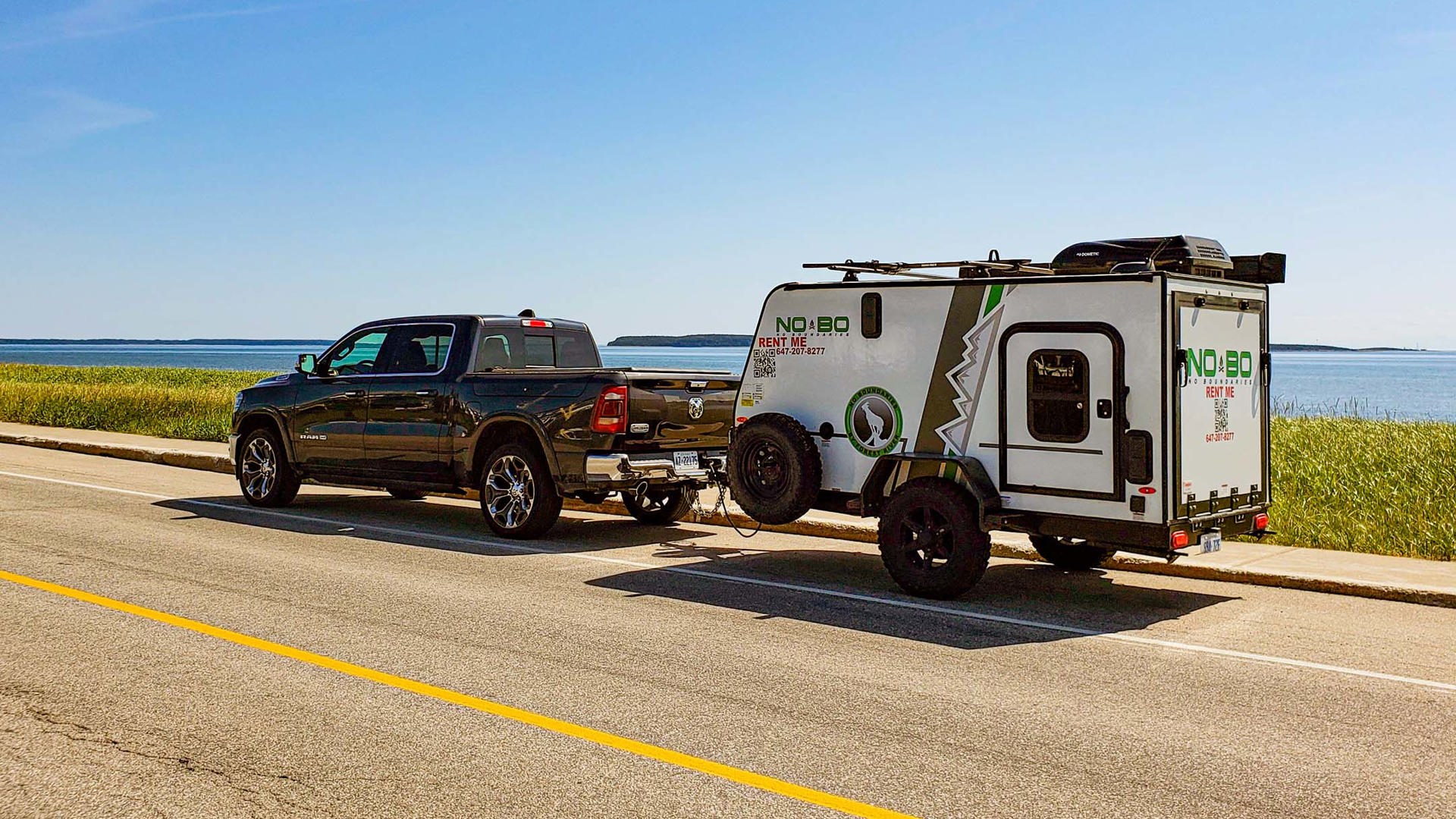
Making the Most of the Journey
There’s no getting around it: this is one seriously long trip. It’s possible to lessen it somewhat by flying into Havre-Saint-Pierre on the small regional airline Air Liaison, or into Sept-Îles on Air Canada and then renting a car. But neither of these options is easy or budget-friendly, and for the most part people will be inclined to drive if they decide to make the trek.
The good news is that the route is a very scenic one with frequent hills and ocean vistas along the way, and services don’t become as infrequent here as they do in other remote parts of the country. If there’s anywhere in Canada I’m happy to drive for hours without bringing a trailer with plumbing, it’s Quebec. It seems that no matter how far you go, there’s always a nearby provincially or municipally maintained rest stop or a village-relais, a town that invites travellers to use its services.
That said, if you’re going to undertake this drive, it’s best to consider a trip to the islands part of a larger journey rather than as a destination. Here are some of the sights worth visiting along the way that can help break up your time on the road.
Old Quebec City
Unless you’re coming from the Atlantic provinces and cross the St. Lawrence River via ferry, your route is almost certain to take you through Quebec City. The old city walls, historic cobblestone streets, and rich culture always make for an enjoyable visit. We stopped in for a morning and visited the Fortifications of Quebec National Historic Site, which was closed for refurbishment when we passed through here last summer, to complete the activities and pick up another Xplorers tag.
Tadoussac and Saguenay–St. Lawrence National Marine Park
We spent much more time in this part of the Côte-Nord last summer, but we couldn’t resist revisiting some of the places that quickly became favourites. We strolled through the village of Tadoussac and enjoyed a nice dinner. Note that trying to park a truck and trailer in the village is a nightmare, though; we had to abandon the idea on the way into the region and only had success on the way back because we opted to stay at the nearby campground and walk.
We also stopped in at the Marine Environment Discovery Centre for a picnic lunch and a look through the tide pools. And we’re two for two at the Pointe-Noire Observation Centre, where we once again watched a pod of beluga whales travel down the Saguenay Fjord and into the river.
Take Home Some Preserves
The fruits and berries of the boreal forest provide some special treats such as wild blueberries, raspberries, sea buckthorn, haskap, and many more. Several artisans have set up shop in the villages of Côte-Nord, each of which sell a variety of preserves, chocolates, and other delicacies that you can take home to remember your travels. La Maison de la Chicoutai in Rivière-au-Tonnerre specializes exclusively in cloudberries in the form of preserves, teas, wine, and chocolates, and is situated directly off Route 138. Les Délices de Michèle uses a more diverse selection of fruits in its preserves and chocolates; the original kitchen is still operating in the hamlet of Colombier a few minutes off the highway, but the products are readily available across the region.
Parc Nature de Pointe-aux-Outardes
This is where I learned that the word “outarde,” which in European French refers to a different bird entirely, is Quebecois slang for the Canada goose. There are plenty of those and dozens of other birds to be found at the Parc Nature de Pointe-aux-Outardes – and, in fact, you can pretend to join them by staying the night in a rustic cabin designed to look like a giant birdhouse.
This park, located about 35 km west of Baie-Comeau, exists to protect this small point’s diverse array of ecosystems: seven that occur naturally, plus a stand of red pines created by settlers and a bird sanctuary developed by the park itself. There are hiking trails through most of the environments, and while the majority of the programming is in French, there’s a fantastic bilingual trail for kids that takes them through the beach and sand dunes, salt marsh, boreal forest, and bird garden while solving clues to gain access to a wonderful labyrinth, all with an Alice in Wonderland theme.
A lot of work has been done here over the last handful of years, but there’s no interest in growing beyond what they already have: in the interest of conserving the site and not overwhelming it with guests, they’re not planning to add anything further. If you’re lucky enough to secure a reservation at a cabin or a campsite, don’t miss this park. It’s a very special place.
Pointe-des-Monts Lighthouse
This lighthouse, 12 km down a road that leaves the highway between Godbout and Baie-Trinité, sits precisely at the point where the St. Lawrence River opens out into the Gulf of St. Lawrence. Interpretive videos and audio tours in English and French tell the stories of the generations of lightkeepers who have served to protect ships and house wayward castaways in the early days of seafaring and settlement along the Côte-Nord.
Vieux Poste de Sept-Îles
Formerly the site of a 19th-century Hudson’s Bay Company trading post, this was slated to become a municipal waste transfer station – that’s marketing spin for a garbage dump – until artifacts were discovered and excavated and it was designated a historic site instead. Several interpretive buildings, a museum, and a gift shop are maintained today, along with an encampment representative of the Innu people who are indigenous to this region.
Sept-Îles is a natural overnight stopover point in both directions, and there are a few ways to take advantage. The Château Arnaud on the waterfront is a pleasant hotel that has restaurants within walking distance and a large playground near the water’s edge. On the other side of town, the municipal RV campground offers beautiful sunset views and great wildlife watching over the bay.
Manitou Falls
You’d drive right past this if you didn’t know to look for the bright yellow visitor centre halfway between Sept-Îles and Havre-Saint-Pierre, seemingly in the middle of nowhere but signed as a municipal rest stop. Don’t miss it if you have some energy and an hour or so to spare: it’s an excellent place to enjoy a packed lunch, then pay the $3-per-adult fee to use the trail and hike to view the rapids and the Manitou Falls. The trail is challenging with lots of stairs and tree roots, but it’s well-maintained, and the up-close look at the falls is a just reward.
Continue to Basse-Côte-Nord
When it’s time to head home from Havre-Saint-Pierre, you have two choices: go back down Route 138 the same way you came in, or continue another 200 km to the road’s terminus in Kegaska. (The highway is a work in progress; 30 years ago it ended in Havre-Saint-Pierre, and work continues to extend it further east.) From Kegaska, if you’re feeling really adventurous, you can board the supply ferry that serves the isolated fishing villages along the north coast of the Gulf of St. Lawrence. Two days later, you’ll be in Blanc-Sablon, where you can continue along the eastern spur of Route 138 to the Labrador border and loop back around to Quebec via the Trans-Labrador Highway, or board another ferry and cross over to Newfoundland.
